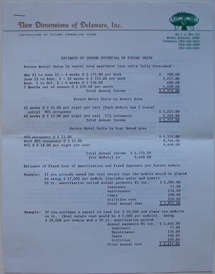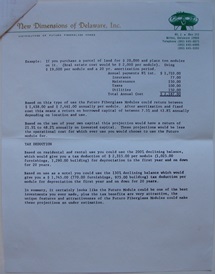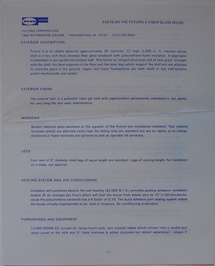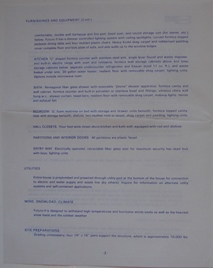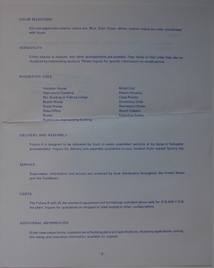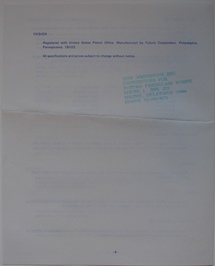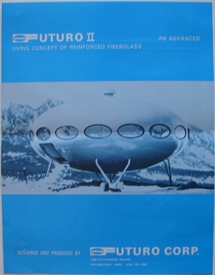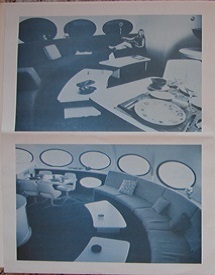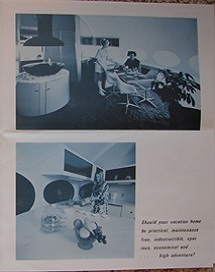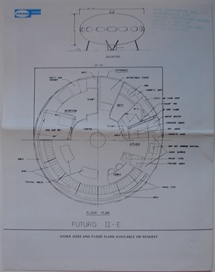The Futuro House
The Futuro House was conceived by Matti Suuronen in 1968 as a "portable" ski chalet. It is an iconic piece of architecture and this site is devoted to documenting the history of the Futuro and the current status and whereabouts of the remaining examples.
TheFuturoHouse.com | Latest Site News & Updates
The Futuro House - Concept, Design & Manufacturing
Though the Futuro House was originally manufactured by Oy Polykem Ab in Finland the manufacture, distribution and marketing of the Futuro was also licensed by Polykem to many companies and organizations around the world. This page documents some of those companies as well as providing general information about the manufacture of Futuro and also some of the variations on the base design and other design and manfacturing related materials. Detailed information on these various topics can be found by follwing the links below.
Latest Update(s)/Addition(s) ***
- General Information
- 21st Century Corporation
- *** A "New Beginning"
- American International Land Co.
- Futuro II Plans & Drawings
- Futuro II-X
- Futuro Enterprises (Christchurch) Ltd.
- Futuro Fiberglass Homes Ltd. de Montreal
- Futuro Of Florida
- Futuro Of Michigan
- John O'Regan
- Kitset Homes/Regent Homes
- Mod Pod Inc.
- New Dimensions Of Delaware Inc.
- "Space Banks"
- The "Finnish 20"
- Variations On A Theme
- The "Vincelette Theory"
Update 033118
032918 marked the 50th anniversary of the introduction of Matti Suuronen's iconic Futuro House to television and the press at the Polykem factory in Hiekkaharju. This photo of the event by Lasse Nio was shared by the WeeGee Exhibition Center, home of the fully restored Futuro #001, in a post on their Facebook page 033018.
032918 marked the 50th anniversary of the introduction of Matti Suuronen's iconic Futuro House to television and the press at the Polykem factory in Hiekkaharju. This photo of the event by Lasse Nio was shared by the WeeGee Exhibition Center, home of the fully restored Futuro #001, in a post on their Facebook page 033018.
Original Information 100211
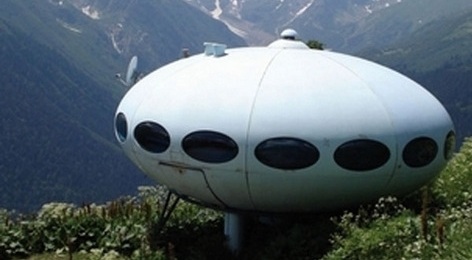 As a product of 60's Finland the Futuro House was born of a society comfortable in the same euphoric times as the rest of the western world. A faith in technology and a strong economy that offered the hope of a higher standard of living and more leisure time typified the times. The original impetus for the creation of the Futuro came from Dr. Jaakko Hiidenkari who, in 1965, commissioned Finnish architect Matti Suuronen to design a ski chalet to be located in Janakkala in central Finland and then elsewhere. Suuronen's initial idea was for a prefabricated ski-cabin and seemed very natural given the times. The cabin would be light and therefore easy to transport to remote locations, easy to construct once on site in unforgiving landscapes and efficient when it came to heating and retaining heat in very cold locations.
As a product of 60's Finland the Futuro House was born of a society comfortable in the same euphoric times as the rest of the western world. A faith in technology and a strong economy that offered the hope of a higher standard of living and more leisure time typified the times. The original impetus for the creation of the Futuro came from Dr. Jaakko Hiidenkari who, in 1965, commissioned Finnish architect Matti Suuronen to design a ski chalet to be located in Janakkala in central Finland and then elsewhere. Suuronen's initial idea was for a prefabricated ski-cabin and seemed very natural given the times. The cabin would be light and therefore easy to transport to remote locations, easy to construct once on site in unforgiving landscapes and efficient when it came to heating and retaining heat in very cold locations.
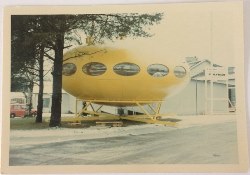 The Futuro House was manufactured in Finland by Oy Polykem AB and was also licensed for manufacture in a number of other countries. The photo to the left, courtesy of Brett Colquhoun shows a fully assembled Futuro outside the Polykem plant.
The Futuro House was manufactured in Finland by Oy Polykem AB and was also licensed for manufacture in a number of other countries. The photo to the left, courtesy of Brett Colquhoun shows a fully assembled Futuro outside the Polykem plant.
In order to meet the primary design criteria the main construction material chosen for the Futuro House was a fiberglass reinforced plastic. Derived from oil in a time when oil was cheap a plastic met all of the requirements; it was relatively cheap and easy to work with, it was light and it offered good insulating characteristics.
The Futuro House also featured polyurethane insulation and this combined with a powerful electric heating system allowed the house to be heated from -20° Fahrenheit to 60° Fahrenheit in only 30 minutes. Criteria met!
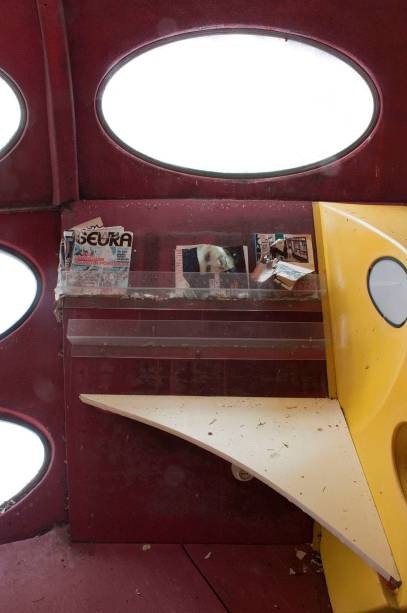 The Futuro House was manufactured in 16 prefabricated segments that could be mass produced. The house could either be transported by helicopter pre-assembled or it could be assembled on site with little more work than simply bolting the 16 pieces together. Criteria met!
The Futuro House was manufactured in 16 prefabricated segments that could be mass produced. The house could either be transported by helicopter pre-assembled or it could be assembled on site with little more work than simply bolting the 16 pieces together. Criteria met!
The assembled Futuro House would sit on a steel frame which in turn sat on four concrete piers. The only real onsite construction needed to site a Futuro House was laying the concrete piers. Given the simplicity of the onsite requirements the Futuro House could be situated in almost any terrain (see top image above : source). Criteria met!
The Futuro House, with an approximate diameter of 26 feet and an approximate height of 14 feet was completely furnished and supposedly could accommodate 8 people. To be honest we are not sure we know 8 people we would want to cozy up to quite so much but maybe we are just anti-social - check out the image of the "bed/chairs" a little further down the page and see what you think - it sure does not look like you would have a whole lot of privacy unless you were one of the lucky ones and took the bedroom. The floor plan featured accommodations around a central space to which living and dining areas were open and the very center featured a fireplace and hood. The entry staircase was retractable which helped with insulation and heat retention as well as adding to the "spaceship" like aura of the house. The house also featured many "space age" features (probably very retro now) including light switches installed in the chair/bed armrests and transparent shelving. The image below (by Carly & Art) shows a little marketing "blurb" along with a typical floor plan.
 As a product of 60's Finland the Futuro House was born of a society comfortable in the same euphoric times as the rest of the western world. A faith in technology and a strong economy that offered the hope of a higher standard of living and more leisure time typified the times. The original impetus for the creation of the Futuro came from Dr. Jaakko Hiidenkari who, in 1965, commissioned Finnish architect Matti Suuronen to design a ski chalet to be located in Janakkala in central Finland and then elsewhere. Suuronen's initial idea was for a prefabricated ski-cabin and seemed very natural given the times. The cabin would be light and therefore easy to transport to remote locations, easy to construct once on site in unforgiving landscapes and efficient when it came to heating and retaining heat in very cold locations.
As a product of 60's Finland the Futuro House was born of a society comfortable in the same euphoric times as the rest of the western world. A faith in technology and a strong economy that offered the hope of a higher standard of living and more leisure time typified the times. The original impetus for the creation of the Futuro came from Dr. Jaakko Hiidenkari who, in 1965, commissioned Finnish architect Matti Suuronen to design a ski chalet to be located in Janakkala in central Finland and then elsewhere. Suuronen's initial idea was for a prefabricated ski-cabin and seemed very natural given the times. The cabin would be light and therefore easy to transport to remote locations, easy to construct once on site in unforgiving landscapes and efficient when it came to heating and retaining heat in very cold locations.
 The Futuro House was manufactured in Finland by Oy Polykem AB and was also licensed for manufacture in a number of other countries. The photo to the left, courtesy of Brett Colquhoun shows a fully assembled Futuro outside the Polykem plant.
The Futuro House was manufactured in Finland by Oy Polykem AB and was also licensed for manufacture in a number of other countries. The photo to the left, courtesy of Brett Colquhoun shows a fully assembled Futuro outside the Polykem plant.
In order to meet the primary design criteria the main construction material chosen for the Futuro House was a fiberglass reinforced plastic. Derived from oil in a time when oil was cheap a plastic met all of the requirements; it was relatively cheap and easy to work with, it was light and it offered good insulating characteristics.
The Futuro House also featured polyurethane insulation and this combined with a powerful electric heating system allowed the house to be heated from -20° Fahrenheit to 60° Fahrenheit in only 30 minutes. Criteria met!
 The Futuro House was manufactured in 16 prefabricated segments that could be mass produced. The house could either be transported by helicopter pre-assembled or it could be assembled on site with little more work than simply bolting the 16 pieces together. Criteria met!
The Futuro House was manufactured in 16 prefabricated segments that could be mass produced. The house could either be transported by helicopter pre-assembled or it could be assembled on site with little more work than simply bolting the 16 pieces together. Criteria met!
The assembled Futuro House would sit on a steel frame which in turn sat on four concrete piers. The only real onsite construction needed to site a Futuro House was laying the concrete piers. Given the simplicity of the onsite requirements the Futuro House could be situated in almost any terrain (see top image above : source). Criteria met!
The Futuro House, with an approximate diameter of 26 feet and an approximate height of 14 feet was completely furnished and supposedly could accommodate 8 people. To be honest we are not sure we know 8 people we would want to cozy up to quite so much but maybe we are just anti-social - check out the image of the "bed/chairs" a little further down the page and see what you think - it sure does not look like you would have a whole lot of privacy unless you were one of the lucky ones and took the bedroom. The floor plan featured accommodations around a central space to which living and dining areas were open and the very center featured a fireplace and hood. The entry staircase was retractable which helped with insulation and heat retention as well as adding to the "spaceship" like aura of the house. The house also featured many "space age" features (probably very retro now) including light switches installed in the chair/bed armrests and transparent shelving. The image below (by Carly & Art) shows a little marketing "blurb" along with a typical floor plan.
Without a doubt the best views of the Futuro House as it would have been right out of manufacturing are afforded by the detailed and clearly very painstaking restoration of the prototype Futuro House for an exhibition currently running (May to October 2011) at the Museum Boijmans Van Beuningen in Rotterdam, Netherlands. A video providing some Futuro facts and history along with some footage of the restoration project can be found on boijmans.nl (Edited 072012 - video is no longer available). Happy Famous Artists took a wonderful set of photos at the exhibition and then saw fit to host them on Flickr under a creative commons license - we sincerely thank the photographer for doing so. That collection of images is worthy of a page of its own which you can access here.
Perhaps the best and most complete doumented resource available on the design and structure of the Futuro House is the document "Futuro no. 001 : Documentation and evaluation of preservation need". Written as her final thesis for the Metropolia University of Applied Sciences in Finland Anna-Maija Kuitunen authored a document with great detail on specifications, materials, construction methods and so on. In addition the document includes a large number of plans and images of the interior of the Futuro house. This thesis is freely available online here.
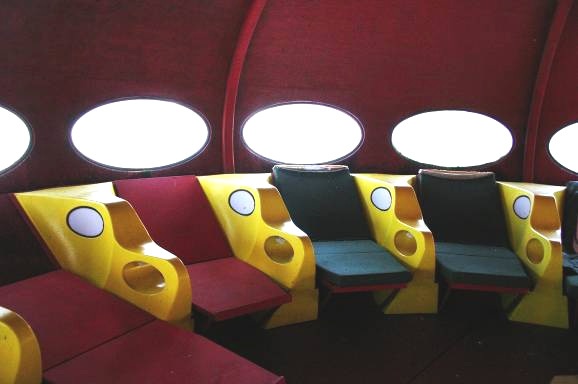 You could say that the design was perfect for its intended purpose. In fact perhaps it was too perfect. In a world clamoring for cheap, easily manufactured housing it suddenly became perceived as meeting the needs of another, much greater, market. Housing for the common man.
You could say that the design was perfect for its intended purpose. In fact perhaps it was too perfect. In a world clamoring for cheap, easily manufactured housing it suddenly became perceived as meeting the needs of another, much greater, market. Housing for the common man.
According to Wikipedia an excerpt from a February 1970 copy of L'Architecture D'Aujourd'Hui describes "Futuro" as:
"the first model in a series of holiday homes to be licensed in 50 countries, already mass-produced in the United States, Australia and Belgium. The segments of the elliptic envelope are assembled on the site using a metal footing. Through its shape and materials used, the house can be erected in very cold mountains or even by the sea. The area is 50 sq m, the volume 140 cubic m, divided by adaptable partitions."
 Examples (here, here and here) of marketing materials from the period of manufacturing clearly show the Futuro targeted at a much broader market then the "ski cabin crowd". How did they do? Perhaps not too well; however while some possibly suspect rather "cheesy" marketing (and maybe that assessment is tainted by a 21st century perspective) may have contributed to the Futuro becoming a relatively rare architectural oddity rather than a feature of every street corner it actually ran into much bigger problems than the power of its marketing. The first video below (Dead link - can be downloaded here) below will let you be the judge of at least one example of Futuro marketing and as a bonus it will give another glimpse of how the interior looked.
Examples (here, here and here) of marketing materials from the period of manufacturing clearly show the Futuro targeted at a much broader market then the "ski cabin crowd". How did they do? Perhaps not too well; however while some possibly suspect rather "cheesy" marketing (and maybe that assessment is tainted by a 21st century perspective) may have contributed to the Futuro becoming a relatively rare architectural oddity rather than a feature of every street corner it actually ran into much bigger problems than the power of its marketing. The first video below (Dead link - can be downloaded here) below will let you be the judge of at least one example of Futuro marketing and as a bonus it will give another glimpse of how the interior looked.
The Futuro was not the only modular manufactured house designed by Matti Suuronen; there was also the Venturo (Venturo Brochure). The second video showcases a Venturo followed by a Futuro. If you can get past the Whitney Houston soundtrack it is some interesting footage. The Futuro footage starts at around a minute forty.
Perhaps the best and most complete doumented resource available on the design and structure of the Futuro House is the document "Futuro no. 001 : Documentation and evaluation of preservation need". Written as her final thesis for the Metropolia University of Applied Sciences in Finland Anna-Maija Kuitunen authored a document with great detail on specifications, materials, construction methods and so on. In addition the document includes a large number of plans and images of the interior of the Futuro house. This thesis is freely available online here.
 You could say that the design was perfect for its intended purpose. In fact perhaps it was too perfect. In a world clamoring for cheap, easily manufactured housing it suddenly became perceived as meeting the needs of another, much greater, market. Housing for the common man.
You could say that the design was perfect for its intended purpose. In fact perhaps it was too perfect. In a world clamoring for cheap, easily manufactured housing it suddenly became perceived as meeting the needs of another, much greater, market. Housing for the common man.
According to Wikipedia an excerpt from a February 1970 copy of L'Architecture D'Aujourd'Hui describes "Futuro" as:
"the first model in a series of holiday homes to be licensed in 50 countries, already mass-produced in the United States, Australia and Belgium. The segments of the elliptic envelope are assembled on the site using a metal footing. Through its shape and materials used, the house can be erected in very cold mountains or even by the sea. The area is 50 sq m, the volume 140 cubic m, divided by adaptable partitions."
 Examples (here, here and here) of marketing materials from the period of manufacturing clearly show the Futuro targeted at a much broader market then the "ski cabin crowd". How did they do? Perhaps not too well; however while some possibly suspect rather "cheesy" marketing (and maybe that assessment is tainted by a 21st century perspective) may have contributed to the Futuro becoming a relatively rare architectural oddity rather than a feature of every street corner it actually ran into much bigger problems than the power of its marketing. The first video below (Dead link - can be downloaded here) below will let you be the judge of at least one example of Futuro marketing and as a bonus it will give another glimpse of how the interior looked.
Examples (here, here and here) of marketing materials from the period of manufacturing clearly show the Futuro targeted at a much broader market then the "ski cabin crowd". How did they do? Perhaps not too well; however while some possibly suspect rather "cheesy" marketing (and maybe that assessment is tainted by a 21st century perspective) may have contributed to the Futuro becoming a relatively rare architectural oddity rather than a feature of every street corner it actually ran into much bigger problems than the power of its marketing. The first video below (Dead link - can be downloaded here) below will let you be the judge of at least one example of Futuro marketing and as a bonus it will give another glimpse of how the interior looked.
The Futuro was not the only modular manufactured house designed by Matti Suuronen; there was also the Venturo (Venturo Brochure). The second video showcases a Venturo followed by a Futuro. If you can get past the Whitney Houston soundtrack it is some interesting footage. The Futuro footage starts at around a minute forty.
Estimates of how many Futuro Houses were manufactured vary with the most common number seeming to be something around 100 and the Futuro house was still, pardon the pun, finding its legs when the calendar hit 1973 and that years Oil Crisis. The almost immediate tripling of the cost of oil caused an almost immediate tripling of the manufacturing cost of a Futuro House. The once bright and powerful business model for Futuro became almost unworkable overnight and with that the future for Futuro tanked. With the radical change in manufacturing cost dooming the Futuro manufacturing continued for only a short time before ceasing for good. Criteria no longer met!
Thus the Futuro House became only an "Architectural Icon For The Ages"
Thus the Futuro House became only an "Architectural Icon For The Ages"
Update 101417 | Theoretical Version Of Suuronen's Futuro CV | V.8
This is just a minor update to add Karuizawa as the current location of the second of the two Futuros exported to Japan.
PLEASE NOTE: This is theoretical reworking of Matti Suuronen's Futuro CV and is not intended or represented as fact.
Type Of Building: Futuro
Prototype Design: 11.13.1967, Date Of Manufacture: 04.01.1968
19681970
Update 051017 | Theoretical Version Of Suuronen's Futuro CV | V.7
Last time around we theorized that the "Finnish 20" might actually be the "Finnish 22" based partly on the Haigerloch Futuro's temporary trip to Milan and a photo from there which showed the Futuro had a Polykem identification plate indicating the unit was #004 and thus was almost certainly manufactured in Finland and imported to Germany.
In a posting to their website related to the Milan event owners P&M noted that the Futuro was actually one of two they acquired in the 1970's. Given that one of them was of Finnish manufacture it seems very likely that the other was also and that would increase the (theoretical) count of Finnish made Futuros to 23.
Oswin Appelmann, president of P&M, tells us that the second Futuro was completely destroyed in a fire.
Update 042217 | Theoretical Version Of Suuronen's Futuro CV | V.6
We have always enjoyed taking new photos or other documentation and "reworking" Matti Suuronen's Futuro CV to fit that new information. That said it should be noted that this is just opinion and theory and that the CV, which was put together from memory in the late 1980's, is the only actual "record" of the Futuros manufactured by Oy Polykem Ab in Finland.
This latest version assumes that the dates referenced by the CV represent the dates Futuros were actually sold and not the dates of their manufacture and actually expands the list from 20 to 22 (though again; this is just "theory"). The assumption is that the Futuros were mostly manufactured in the early years even though some were not then sold for several years.
The two Futuros that we have added to the list are the Haigerloch Futuro and the Futuro once located in Wittlaer, Düsseldorf and later demolished.
The Haigerloch Futuro was recently displayed as part of Louis Vuitton Objets Nomades collection which was in Milan, Italy as a feature of the "Salone del Mobile. Milano" which ran 040417 through 040917. There were many photos of this event posted around the web including several that showed the identification plate attached to the entry steps. This plate identified the unit as #004 and resembled the plate seen on other Futuros manufactured in Finland strongly suggesting this was a unit manufactured by Oy Polykem Ab rather than under license in Germany (or elsewhere).
As for the Wittlaer, Düsseldorf unit evidence suggests this unit was the second of two exhibited by Bayer Pharmaceuticals at the 1969 Hanover Fair and that it was subsequently gifted to Charles Wilp and moved to Wittlaer (the other Futuro was the one now located in Berlin).
There were, as at our last version of the CV, only two Futuros in the list for which the current location was "unknown" and these were listed as having been sold and shipped to Japan and Sweden in 1972 and 1978 respectively. Seems like a Futuro is unlikely to have been shipped to Japan only to then end up in Germany and it also seems unlikely to us that either of these is the second of two Futuros sold to Christerensson, Sweden in 1978.
Certainly the Wittlaer unit is not an option for either of these as this was displayed at the Hanover Fair in 1969 and then gifted to Charles Wilp. We do not know the date of purchase of the Haigerloch Futuro but we do know it has a "low" numbered identification plate (#004) and it also seems unlikely to us (though it is of course possible) that this would have been sold and installed in Sweden and then later moved to Germany.
We have also added the "identification plate numbers" for the Futuros for which that is known. We seem to think there are others we are not recalling; no doubt some of you out there will let us know of any we are missing.
PLEASE NOTE: This is theoretical reworking of Matti Suuronen's Futuro CV and is not intended or represented as fact.
Type Of Building: Futuro
Prototype Design: 11.13.1967, Date Of Manufacture: 04.01.1968
19681970
Update 032517 | Theoretical Version Of Suuronen's Futuro CV | V.5
The list of Futuros and dates contained in Matti Suuronen's Architecture CV was put together from memory by Suuronen in the late 80's. As such it is subject to the vagaries of memory but despite that it remains the best documented history of the Futuros manufactured by Polykem. However we have always enjoyed the exercise of "reworking" the list to try to come up with an "unofficial" version that better fits the available facts and historical evidence. That said this time around we are not "reworking" the list, just thinking about it a different way.
Recent correspondence with Marko Home and Yves Buysse on the subject of the Hanover Fair of 1969 at which two Futuros (which subsequently ended up in Wittlaer, Düsseldorf and Berlin) were displayed by pharmaceutical giant Bayer caused us to wonder what the dates in the CV actually represent.
We had always assumed date of manufacture but the document does not actually state that and so the years could equally represent the years the Futuros were sold with their manufacturing having taken place earlier.
This could actually explain how Futuro #13, now in Berlin, could be listed in 1969 while the 13th listed Futuro does not appear until 1972. If units were manufactured sooner and stored until sale there would be no guarantee they would be sold in sequential order of manufacture. No way of knowing for sure but it would explain the apparent "out of order" numerical sequencing of the list.
Update 080616 | Theoretical Version Of Suuronen's Futuro CV | V.4
In July 2016 we visited with the folks at Expotechnik in Taunusstein where we were told that the white Futuro still on the Expotechnik campus and the yellow Futuro of which half is now in Frankfurt were in fact manufactured in Finland by Polykem and imported to Germany by Expotechnik's founder Heinz H. Soschinski.
Prior to this we had assumed these Futuro's were manufactured under license in Germany (and even theorized they may have been manufactured by Expotechnik themselves). As a result of this we have once again taken "poetic license" with Matti Suuronen's Futuro CV and come up with yet another entirely theoretical version that takes account of this new information.
This latest version leaves the "fate" of only two of the 20 "unknown"; one of the two that are listed as heading for Japan and the last of the seven listed as being destined for Sweden. All changes from the original version are in parentheses.
There are two specific changes in this version. The yellow Futuro that was displayed at the UIA Congress, Argentina is now listed as providing the half Futuro in Frankfurt (via Expotechnik) and the Futuro listed as "unknown" in 1971 has been moved to 1969 and is now listed as having been purchased by Expotechnik and now located in Taunusstein.
PLEASE NOTE: This is theoretical reworking of Matti Suuronen's Futuro CV and is not intended or represented as fact.
Type Of Building: Futuro
Prototype Design: 11.13.1967, Date Of Manufacture: 04.01.1968
19681970
Update 111514 | Theoretical Version Of Suuronen's Futuro CV | V.3
We added a new Futuro location in Russia, the Krasnodar Futuro, to the site today based on research by Yves Buysse (thanks Yves). There is a possibility that the unit is in fact the second of the 1976 units destined for Russia. There is suggestion the unit was on site in 1975 and the current location (which appears to have always been the Futuro's location) is some 300 km or so away from the location listed in the CV but Futuro history is often clouded and unclear and personally we think it is very likely this is the unit listed on the CV and we have amended each version of the CV below to reflect this.
Update 092714 | Theoretical Version Of Suuronen's Futuro CV | V.2
Our theoretical exercise in reworking Matti Suuronen's Futuro CV generated some interesting thoughts and comments; as a result we have made a couple more changes and come up with a version 2 which includes the following two changes:
PLEASE NOTE: This is theoretical reworking of Matti Suuronen's Futuro CV and is not intended or represented as fact.
Type Of Building: Futuro
Prototype Design: 11.13.1967, Date Of Manufacture: 04.01.1968
19681970
Update 092014 | Theoretical Version Of Suuronen's Futuro CV
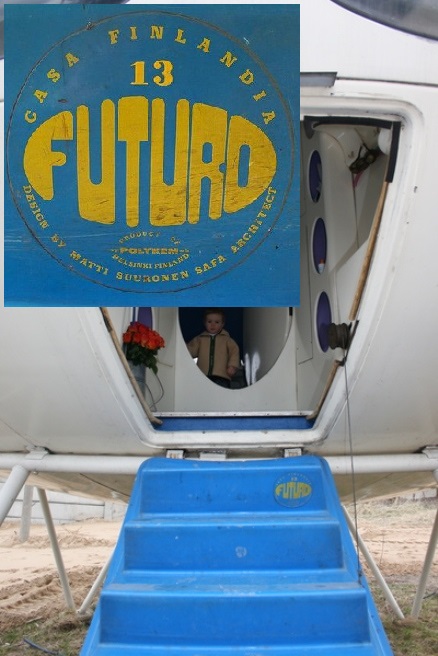 The update of two weeks ago to this section and the question we posed resulted in quite a few emails with opinions and information that reminded us of a few things that we had failed to recall; our thanks in particular to Marko and Yves.
The update of two weeks ago to this section and the question we posed resulted in quite a few emails with opinions and information that reminded us of a few things that we had failed to recall; our thanks in particular to Marko and Yves.
We know that the CV was put together in the 1980's by Matti Suuronen long after the end of the manufacturing cycle for Futuro and we know that there are some errors and/or omissions in the document. For us that is not surprising, with a combination of elapsed time and an aging brain (and we can personally attest to a decline in memory as you get older) a few errors would not be at all surprising.
That said we feel like if it was us we would likely remember the actual number of units that were manufactured even if other details eluded us years later. So we began to wonder whether there might be a "version" of the CV that could accommodate for any errors, omissions or questions but still retain 20 as the number of units manufactured. Of course this original document as it stands is the only "true" record of Futuros manufactured in Finland and we are not seeking to "rewrite history" BUT just for the fun of it and to maybe encourage discussion or even "dig up" some new information the version of the CV below, which is purely speculation on our part, still lists 20 units but also accommodates for all of the following factors:
PLEASE NOTE: This is theoretical reworking of Matti Suuronen's Futuro CV and is not intended or represented as fact.
Type Of Building: Futuro
Prototype Design: 11.13.1967, Date Of Manufacture: 04.01.1968
1968
Update 090714 | The "Finnish 21"?
So here's a question; could the "Finnish 20" actually be the "Finnish 21"? We know there is an error in the Futuro Page from Matti Suuronen's Architecture CV relating to the date of manufacture of Hirvensalmi but that is a relatively small error; omitting a Futuro entirely would be much more significant. Could that be possible?
That is the interesting question posed by some text in the 1/2010 issue of the Swedish magazine Riksettan, a photo of a Futuro being transported by helicopter and a photo from the website of a Swedish towing company.
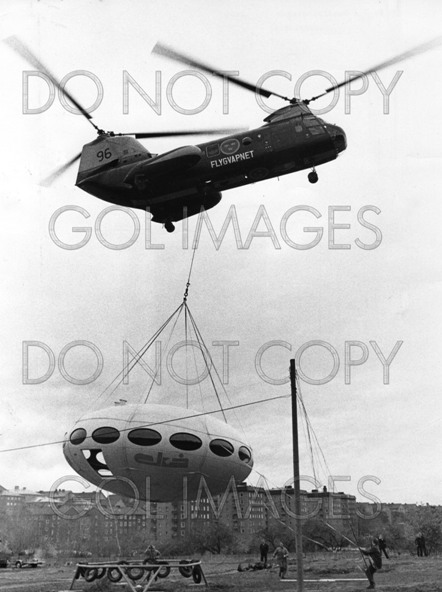 On 092269 a Futuro was transported by Swedish Air Force helicopter from Råsunda (a section of the Solna Municipality) to Älvsjö; in Sweden (on page 31 of the Home & Taanila book Futuro: Tomorrow's House from Yesterday we learn that the Swedish newspaper Dagens Nyheter ran a front page story on this event. The Futuro was actually dropped off at the wrong location and had to be moved to the correct location by crane).
On 092269 a Futuro was transported by Swedish Air Force helicopter from Råsunda (a section of the Solna Municipality) to Älvsjö; in Sweden (on page 31 of the Home & Taanila book Futuro: Tomorrow's House from Yesterday we learn that the Swedish newspaper Dagens Nyheter ran a front page story on this event. The Futuro was actually dropped off at the wrong location and had to be moved to the correct location by crane).
The photo at above left is a shot of this Stockholm area helicopter transport event. The Swedish Air Force decal is clearly visible on the helicopter and, most importantly, there is a logo on the Futuro itself; ekå (please note this image is watermarked and should not be reproduced - while we purchased copies we do not own the copyright).
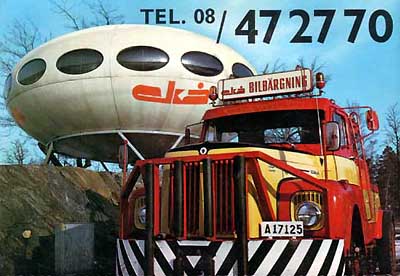 We had never really considered researching the logo on the Futuro in the helicopter transport photograph though we probably should have. Recently however Yves Buysse sent us a link to the website of Ekå - Ekå Bilbärgning AB where there is another image of a Futuro with this logo (thanks Yves). The photo can be seen above left. On the webpage in the left section is a description of the photograph; Google Translate tells us this reads:
We had never really considered researching the logo on the Futuro in the helicopter transport photograph though we probably should have. Recently however Yves Buysse sent us a link to the website of Ekå - Ekå Bilbärgning AB where there is another image of a Futuro with this logo (thanks Yves). The photo can be seen above left. On the webpage in the left section is a description of the photograph; Google Translate tells us this reads:
"Right: Photo Card from Ekå . Scania 110 and the Futuro "flying saucer" which for a time was used as an office."
The photograph to us clearly looks edited but the comment does indicate that the company used a Futuro for a time as an office. It seems reasonable to assume that this Futuro was one and the same as that shown in the helicopter transport shot. The website Larssons Blogg suggests that Ekå at least considered the manufacture and sale of Futuros though it is unknown if anything ever came from that.
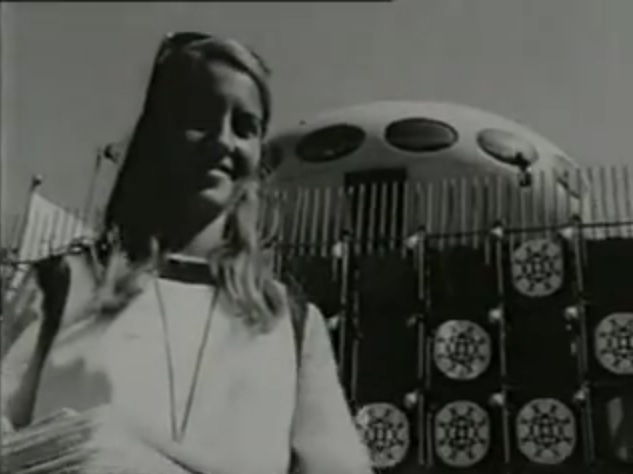 On page 27 of Home & Taanila's Futuro: Tomorrow's House from Yesterday we learn that in October 1969 a Futuro was accompanied by Matti Suuronen when it was shipped to Buenos Aires, Argentina for the UIA World Congress (Union Internationale des Architectes). The Futuro then remained in Buenos Aires and was showcased at the Exposición Internacional del Confort Hamano exhibition that ran from 102469-111669 (the photo above left, a screenshot from this YouTube video shows the Futuro at this exhibition). Of the Futuro's listed as manufactured in 1968 and 1969 in Matti Suuronen's Architecture CV this is the only one for which the history remains unknown and clearly this one could not have been in the Stockholm area on 102269 and at the same time in Buenos Aires.
On page 27 of Home & Taanila's Futuro: Tomorrow's House from Yesterday we learn that in October 1969 a Futuro was accompanied by Matti Suuronen when it was shipped to Buenos Aires, Argentina for the UIA World Congress (Union Internationale des Architectes). The Futuro then remained in Buenos Aires and was showcased at the Exposición Internacional del Confort Hamano exhibition that ran from 102469-111669 (the photo above left, a screenshot from this YouTube video shows the Futuro at this exhibition). Of the Futuro's listed as manufactured in 1968 and 1969 in Matti Suuronen's Architecture CV this is the only one for which the history remains unknown and clearly this one could not have been in the Stockholm area on 102269 and at the same time in Buenos Aires.
It is possible the helicopter transport shows one of the other 1968 or 1969 Futuros listed on the CV of course; but is it likely - the original locations for each of these units are listed on the CV and their history is well documented? It seems to us to be rather unlikely that one of these units could be the one in the photo.
Add to that the presence of the logo and the fact that Ekå used a Futuro as an office for a time; surely these must be one and the same unit? Is it really likely that a unit would have the Ekå logo applied and then removed only for the Company to buy a Futuro later and add the logo again. We think not which leaves us with only one conclusion; the "Finnish 20" is actually the "Finnish 21" and a unit is missing from Matti Suuronen's CV that was manufactured in 1969.
Of course this is all conjecture, our own Futuro "Conspiracy Theory" if you like, though we would like to think educated and well thought out conjecture. However we could easily be missing a piece of the puzzle and completely wrong so, as always, please let us know if you can add anything whether supporting or disproving this theory.
One final note on this relates to the 1/2010 issue of the Swedish magazine Riksettan which we added to our collection of "Things Futuro" this week. The article in the magazine includes the photo of the 102269 helicopter transport and it also includes a comment by the owner of the Örebro Futuro that he believes that the unit shown in the photo is actually the one now in Örebro. That would suggest a possible change to "our version" of the CV since we had listed the last (1978) Futuro as the one now in Örebro. Again if you can add any information please do.
For now we are going to leave "our version" of the CV alone and we are not adding a possible 21st Finnish Futuro to the "Lost Souls" page; we are going to wait to see what else we can find and what information might come in to either refute or prove this theory first.
Original Information 042314
The image below is a photo of a page from Matti Suuronen's Architecture CV and lists, for want of a better description, the "Original 20" Futuros; those that were actually manufactured in Finland by Polykem as opposed to under license at other locations around the world.
Our thanks go to Craig Barnes, owner of "Futuro 22", who took the photo during a 2013 visit to Finland and to Marko Home, co-editor of the book Futuro: Tomorrow's House from Yesterday who gave us some background on the document.
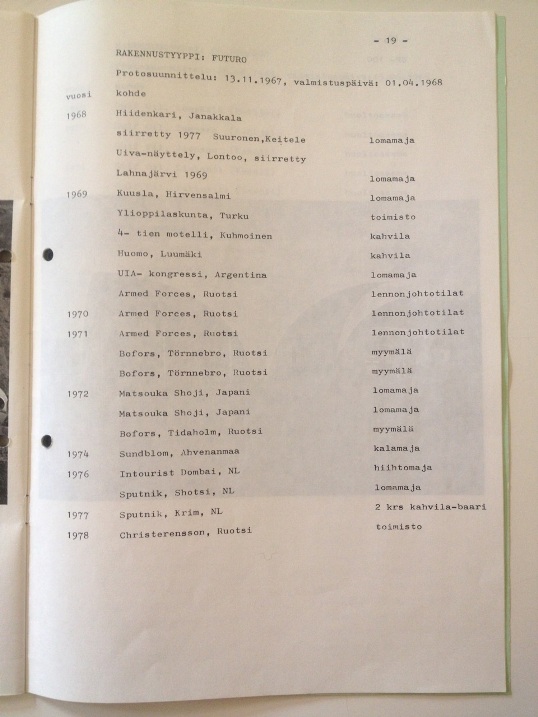
Listed below is a translation of the document (courtesy of Google Translate which, at times, struggles with the Finnish language so there are very likely errors in the translation) and an attempt to place these units at their current locations. We would appreciate any corrections to the translations and to the current locations of these units. If you have any updates to this information please use the site Contact Form or email us directly.
A couple of points to note:
Type Of Building: Futuro
Prototype Design: 11.13.1967, Date Of Manufacture: 04.01.1968
1968
Update 052020
In an email conversation recently Pat told us about her recollections of a trip in Florida around 1973 during which she visited a Futuro. Pat did not recall exactly where they traveled or where the Futuro was located.
However through the course of our email correspondence and based on the photos below that Pat shared with us we believe the Futuro was the AILC Futuro during its time in San Carlos Park in Fort Myers, Florida.
We reached that conclusion for several reasons:
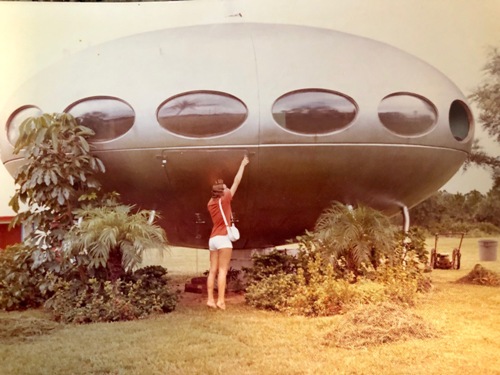
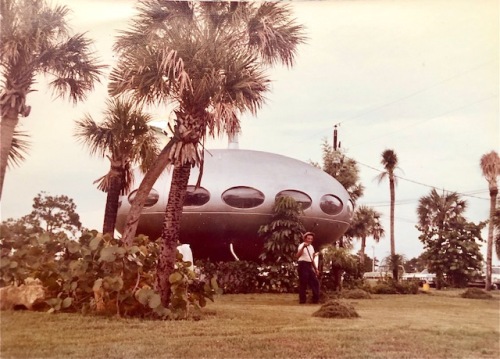
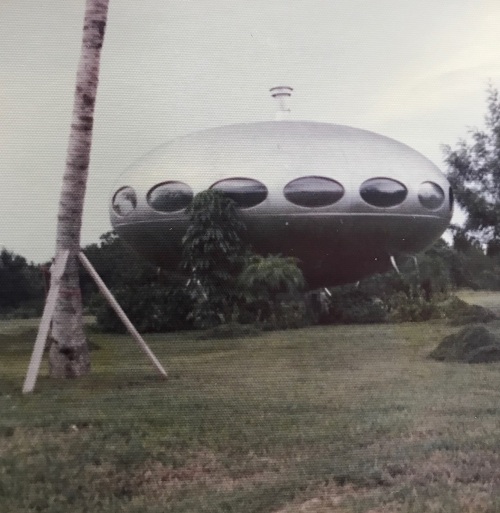
Original Information 012018
Outside of Finland Futuro manufacturing and distribution was licensed to multiple companies around the world. A company would license for a geographical area and then that company would often license sub-territories to other companies who would market and distribute the Futuro on their behalf. In the US primary the licensee was the Futuro Corporation Of Philadelphia but there were a great number of sub-licensees around the country.
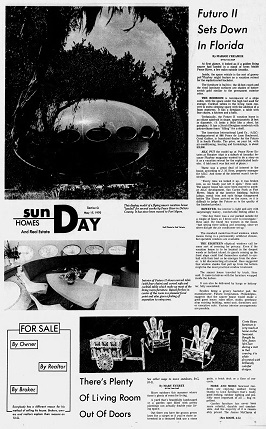 One of the US companies was the American International Land Co. (AILC) based in Coral Gables, Florida. We only recently came across mention of this company in the 051770 issue of the Tampa Bay Times (published as the St. Petersburg Times at the time) and have yet to find any other references to the AILC.
One of the US companies was the American International Land Co. (AILC) based in Coral Gables, Florida. We only recently came across mention of this company in the 051770 issue of the Tampa Bay Times (published as the St. Petersburg Times at the time) and have yet to find any other references to the AILC.
The Tampa Bay Times article, titled "Futuro II Sets Down In Florida" started out this way:
"At first glance, it looked as if a golden flying saucer had landed in a stand of trees beside Peace River, a few miles outside Arcadia. Inside, the space vehicle is the sort of groovy pad Playboy might feature as a vacation retreat for the sophisticated bachelor."
The article provided the reader with the usual general information about Futuro found in most newspaper and magazine articles but it also provided a couple of photos and some more "specific" information (and a colorful description for the Futuro which it describes as looking "a little like a short, fat pumpkin").
The Futuro was finished in a golden color and, based on this quote from the article, had an interior to match:
"The furniture is built in; the 23-foot couch and the vinyl laminate surfaces are shades of butter-scotch gold similar to the permanent exterior color."
It was owned by AILC, described as the "franchised dealer for the Futuro II in South Florida", which was headquartered at 866 Ponce de Leon Road, Coral Gables, Florida. The price for a Futuro "on your lot, with air-conditioning, heating and furnishings" was reported to be about $18,000.
At the time of the article the Futuro was no longer located in Arcadia having been moved to San Carlos Park in Fort Myers, Florida. The Futuro apparently generated a great deal of interest, some of it, according to AILC's property manager J. M. Hess, was less than desirable. Hess is quoted as saying that:
"Every time we locked it up , it was broken into, so we finally just left it open."
It seems like that strategy resulted in some losses as the article went on to report that:
"Much of the interior finishing, built-in lamps, metal trim and such things disappeared before The Times arrived on the scene, so it is difficult to judge the Futuro as to the quality of the finished product."
The article is accompanied by two photos, one exterior shot (of the Futuro when located in Arcadia prior to the move to Fort Myers) and one interior shot.
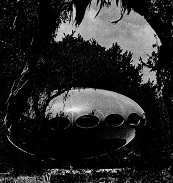
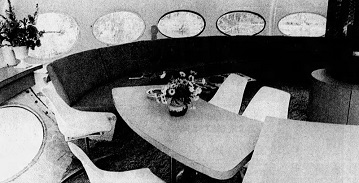
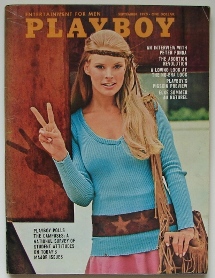 There is one other notable piece of information in the article which relates to the appearance of the Futuro in the September 1970 issue of Playboy Magazine. We are told that:
There is one other notable piece of information in the article which relates to the appearance of the Futuro in the September 1970 issue of Playboy Magazine. We are told that:
"AILC put the model up at Peace River Estates at Nocatee ... because Playboy magazine wanted to do a story on it as a vacation retreat for the sophisticated bachelor (I told you it was that sort of place).
We had always thought that the Playboy magazine article had featured the Futuro seen in Arcadia (based on the AP Wire Photo referenced below and specifically the appearance of the chimney structure on the roof of the Futuro which is the same in the photo and the Playboy article and is a type of chimney we do not recall seeing on other Futuros) and this article appears to support that theory.
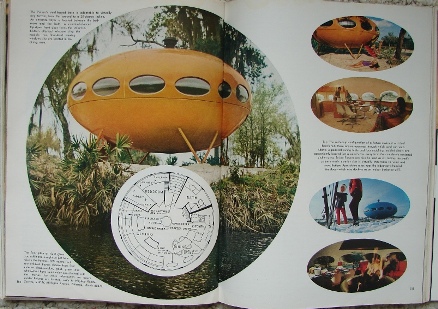
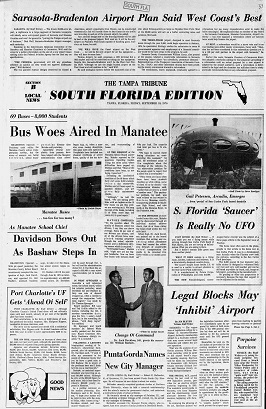 A second newspaper article, this one from the 091870 issue of The Tampa Tribune, also reported on this Futuro though in this case AILC was not mentioned.
A second newspaper article, this one from the 091870 issue of The Tampa Tribune, also reported on this Futuro though in this case AILC was not mentioned.
This article confirmed that the Futuro, while located in Arcadia, was the one used for the Playboy article; it reported that the:
"...saucer shaped home concept was the subject of a three page article in the September issue of Playboy. The home most often seen in that article is the home now in San Carlos Park. It was in a development near Arcadia when the Playboy crew took the pictures, according to the San Carlos Park developer."
This article also carries the photo seen below of the Futuro in the Fort Myers location (the only one we have seen) where the chimney structure is clearly visible and evidently the same as that seen in the Playboy article and the AP Wire Photo of the Futuro in Arcadia.
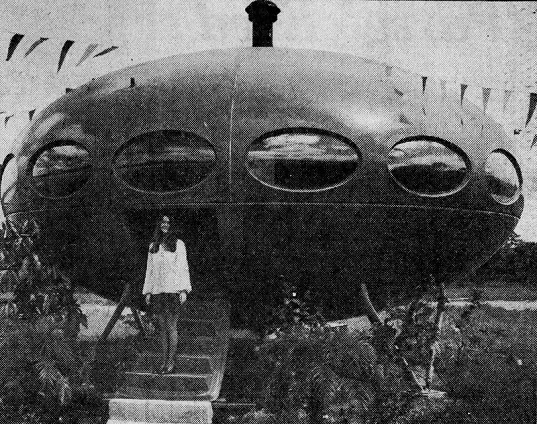
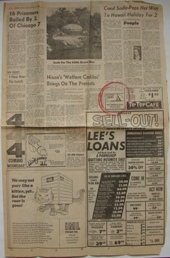 Though we had not previously seen anything that could link the Futuro that spent a short time in Arcadia to AILC it does feature in a item already in our collection of "Things Futuro"; an AP Wire Photo (below) from the archives of the Baltimore Sun. The photo, dated 033070, shows a Futuro located "at the Nocatee-Owens Bridge site on the Peace River near Arcadia".
Though we had not previously seen anything that could link the Futuro that spent a short time in Arcadia to AILC it does feature in a item already in our collection of "Things Futuro"; an AP Wire Photo (below) from the archives of the Baltimore Sun. The photo, dated 033070, shows a Futuro located "at the Nocatee-Owens Bridge site on the Peace River near Arcadia".
This photo presumably appeared in the Baltimore Sun but we have not actually come across it in that publication yet. It did appear in the 033170 issue of the Deseret News (above left - from The Charles Cleworth Futuro House Archive) and in many other publications (see here).
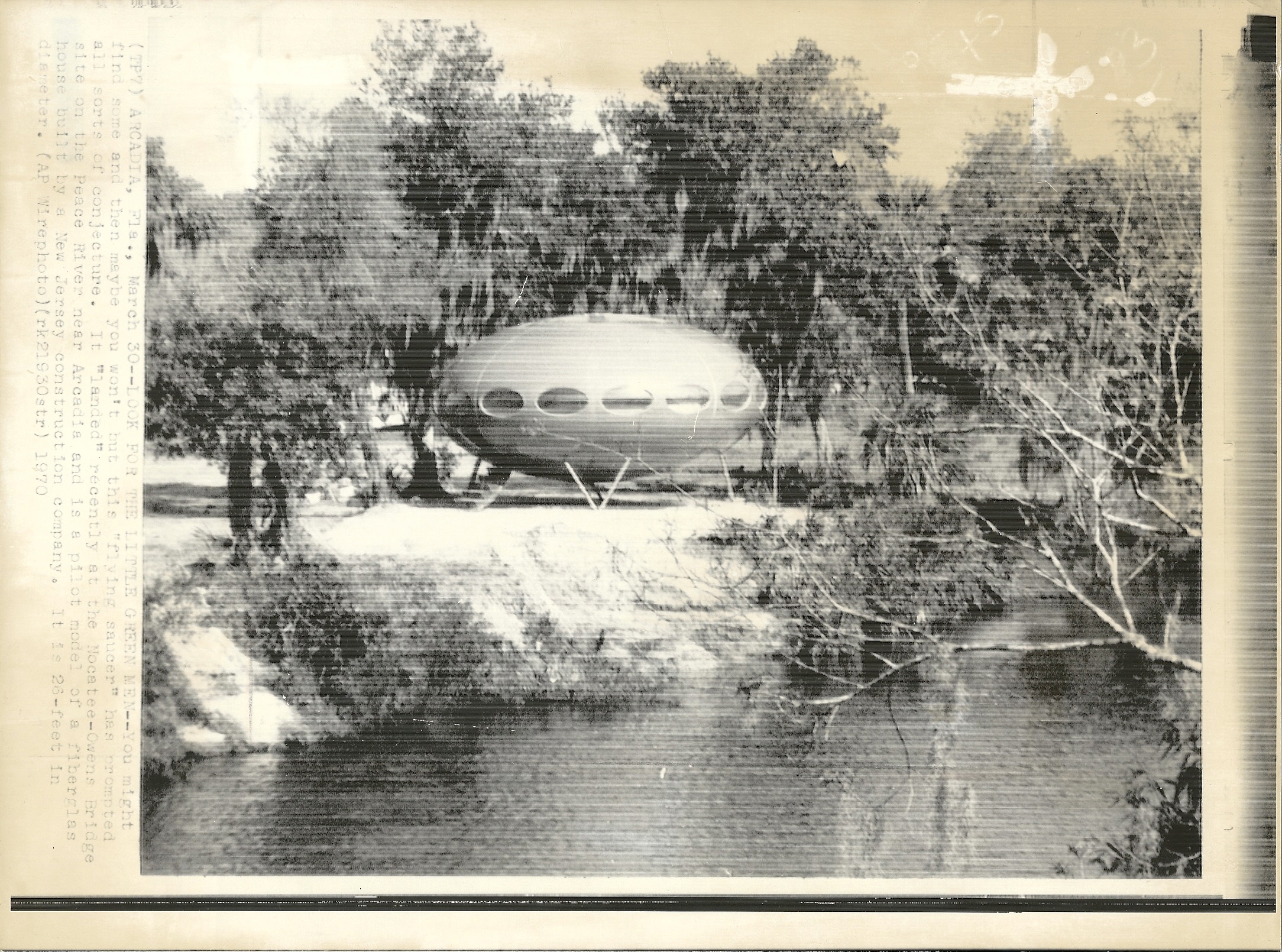
On 091314 we had the opportunity to visit the Austin Futuro; in addition to seeing and photographing the Futuro we were also able to look through a collection of original papers, drawings and plans associated with the Futuro that Ira, the owner, had kept. We would like to thank Ira, and Terry who also accompanied us, for spending time with us, chatting about Futuros and allowing us to photograph some of the archived papers. For more detail on this visit, the Austin Futuro and the plans and drawings shown below see the Austin Futuro page.
While we discuss these plans and drawings in more detail on the Austin page we thought it appropriate to add this section to this page also as it is directly related to the design and construction of the Futuro House.
Our conversation with Ira and the drawings and documents he shared with us made it apparent that the options for customizing a Futuro (at least in the US - Futuro II) were more extensive than we had previously thought.
The document shown below is a Fact Sheet about Futuro II, "Facts On The Futuro II Fiber-Glass House", and it lists some of the items that were available for customization (this document is very similar, but not identical, to this Star Enterprises, Janesville, Wisconsin one which was sent to us some time ago by the Hedberg Public Library in Janesville).
Among the customization options listed are the window configuration, additional or fewer or operable being among the options, differing lengths of support legs and the ability to "cluster" units by the use of interlocking sections.
This set of four drawings is a further illustration of the ability to customize; they show various aspects of the interior configuration of the Futuro being constructed for Ira and we can also see notes made by Ira's mother "discussing" further options and requirements.
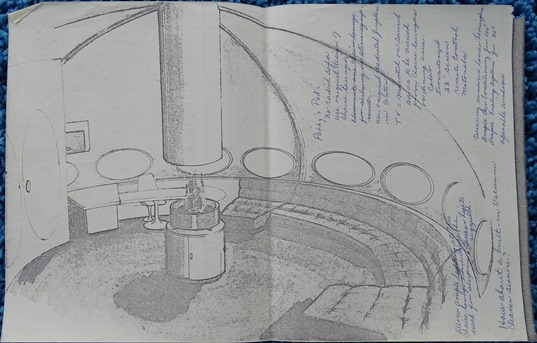
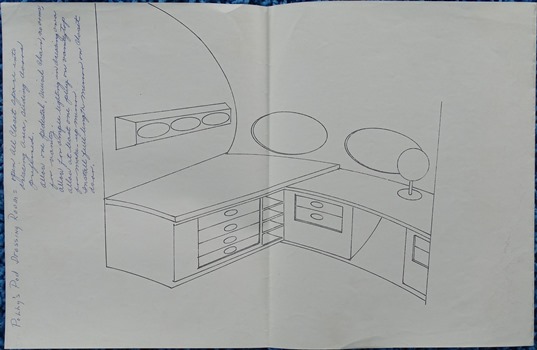
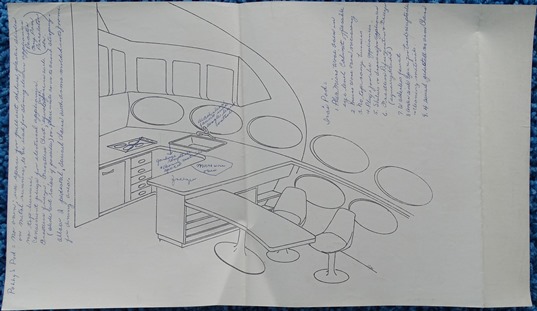
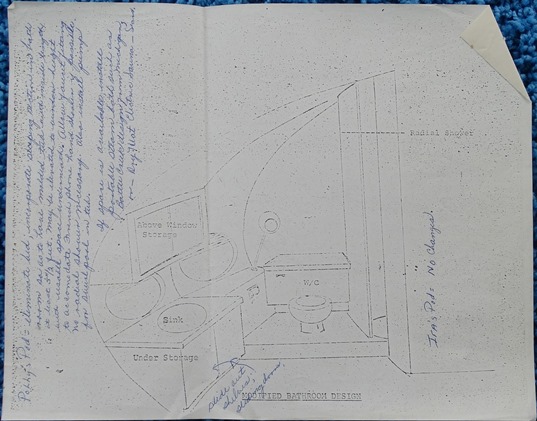
Ira tells us that the unit as installed matched these drawings very closely. A letter from the Futuro Corporation of Philadelphia Vice President Stanley H. Blumenthal, dated 042170, details the final delivered configuration of "Ira's Pod". Two of three pages of the letter are shown below (the third page carries only the signature block).
"Ira's Pod" ended up costing $14,975 as customized. Several modifications are listed in the letter including:
The first two plans listed are full size architectural "blueprints", the second two are smaller architectural drawings (that do not have the "blue" hue that presumably gives "blueprints" their name) and the remaining 5 are a set of copies of plans on smaller white paper; all are original and from the time the Futuro was purchased and installed.
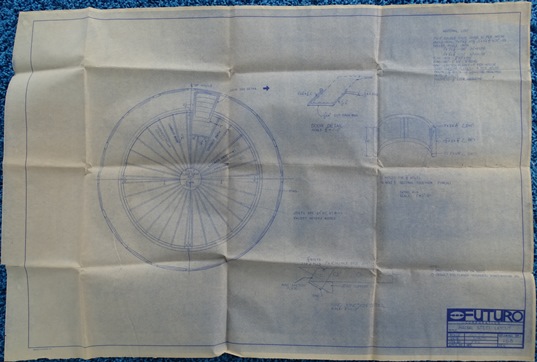
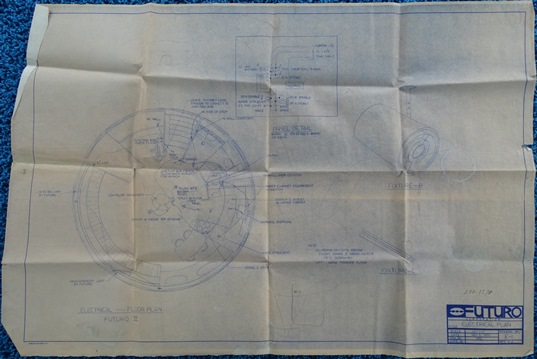
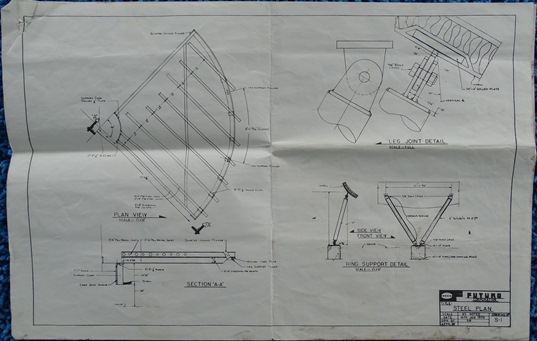
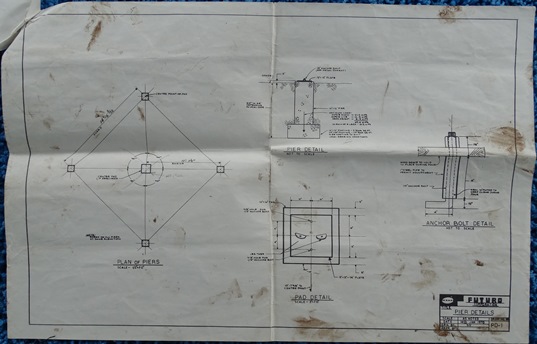
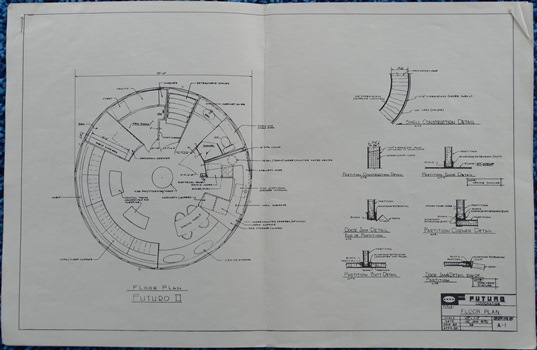
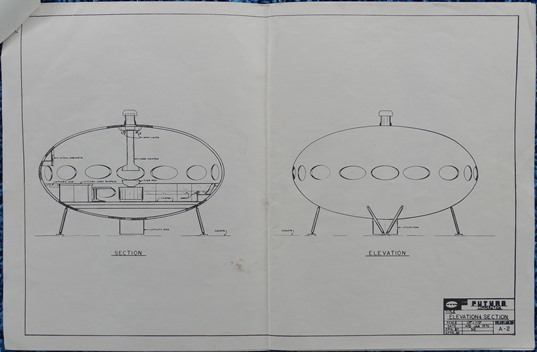
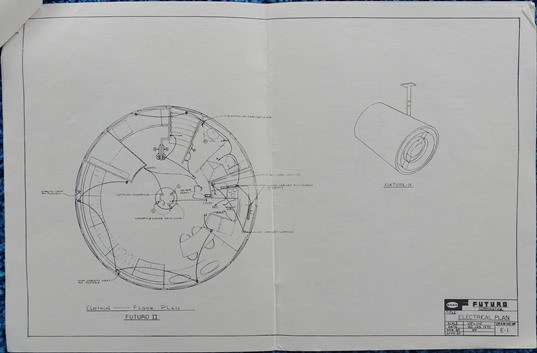
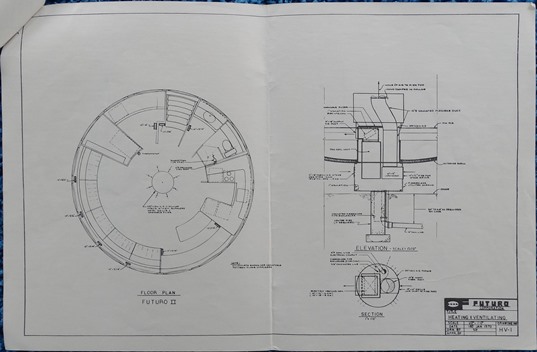
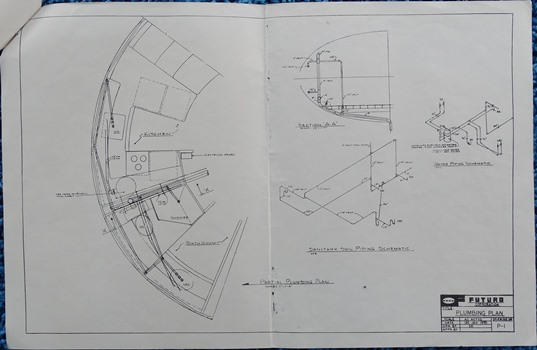
All in all we had a fascinating visit with Ira and Terry and once again we would like to thank them for spending time and discussing Futuros with us and particularly for sharing with us the various documents and plans seen here.
The October 1972 issue (Volume 47 #10) of Montreal based French Canadian publication Bâtiment included an interesting article on Canadian Futuro manufacturing. Len over at futurohouse.com found and shared this .pdf article; thanks Len. We have tried unsuccessfully to find a copy to purchase for our collection of "Things Futuro; if you come across one please let us know.
The basic "model" used outside of Finland for Futuro manufacturing and distribution rights was for a company to enter into a licensing agreement with Polykem covering a defined geographical area. That company would often enter into further agreements within their defined "territory" for other companies to take on marketing and distribution in "sub-territories".
In the Bâtiment article we learn that in the case of Canada it was Futuro Fiberglass Homes Ltd de Montreal, a company founded by Richard Shain, that entered into a licensing agreement with Polykem. This agreement dated from September 1969 and was for exclusive manufacturing and distribution rights to the Futuro House in Canada.
In the article we learn that Shain (as was the case with others involved in the early days of Futuro) was very enthusiastic about Futuro and had "big plans". Benefits of the Futuro included its ease of movement, the very limited site preparation needed prior to installing a unit and its aerodynamic design and weatherproofing offering good resistance to adverse conditions such as high winds or snowy conditions. It was seen as affordable and very possibly a "mass market" product with huge potential for those who got in early. As we know this proved not to be the case largely due to the 1973 Oil Crisis and its impact on the cost of the oil based raw materials used in the manufacture of Futuros.
Shain also emphasized the flexibility of the Futuro and its "modular" design and how that could offer the ability to create larger structures using multiple units; Shain used a school as an example of one such possible use. The document futurohousecanadadoc.pdf (also courtesy of Len at futurohouse.com) illustrates this flexibility and "modular" functionality. The document is not identified as originating from Shain's company but it is not unreasonable to think it did.
We are only aware of two Canadian Futuros, those previously located in Quebec near Lake Memphremagog and on a ski slope on Mont Blanc, though as with other manufacturers information is scarce so there may have been more. That said as with all manufacturing around the world the extensive business plans and hopes for large scale manufacturing did not come to fruition and, according to ic.gc.ca Shain's company was dissolved in 1980.
Update 072719
In early July 2019 Tampa Bay Times journalist Gabrielle Calise contacted us regarding an article on the Tampa Futuro she was researching. Always happy to "talk Futuro" (we doubt that would come as a surprise to anyone) a few days later we chatted for quite sometime about the Futuro, its history and about the Tampa Futuro(s) in particular.
The resulting article, titled "That spaceship on top of a Tampa strip club? It once was the house of the future" was published online 071519. During the course of her research Gabrielle was able to fill in a few additional details regarding the history of Futuro Of Florida.
The company was started by Jerry DeLong, a mobile home salesman, in the early 1070's. Jerry purchased a Futuro and hauled it on flatbed to Clearwater, Florida when he set it up as a display home. The Semmes Road Futuro (long since demolished) is the only confirmed sale by Futuro Of Florida though of course there may have been others that are simply not documented.
Gwendolyn Zerby visited the display model and decided to purchase a Futuro. The Futuro was fully furnished and priced at $18,000; in March 1971 it was delivered by road to the site on the southwest corner of Semmes and Juneau streets in Tampa back when, as Gabrielle describes it in the Tampa Bay Times, "the Sulphur Springs neighborhood still had dirt roads and orange groves".
Jerry DeLong transported the Futuro to the location on a flatbed. Bruce DeLong, Jerry's son was able to provide Gabrielle with two great photos of that event. The photos are displayed here courtesy of the Tampa Bay Times and Bruce DeLong.
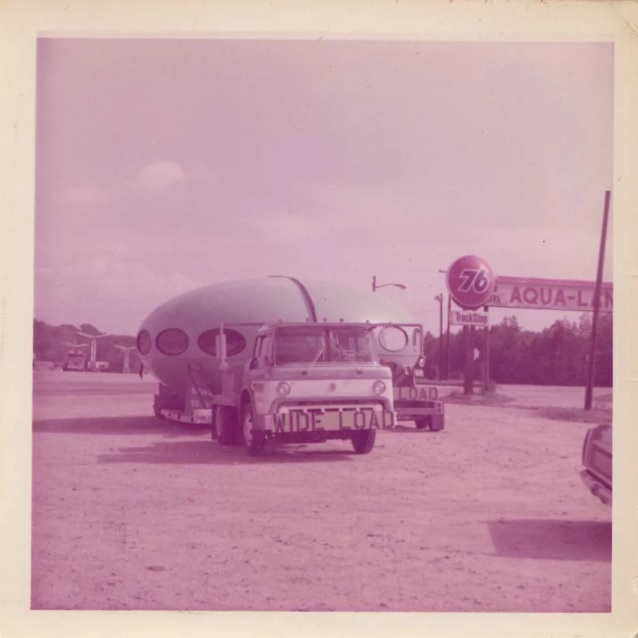
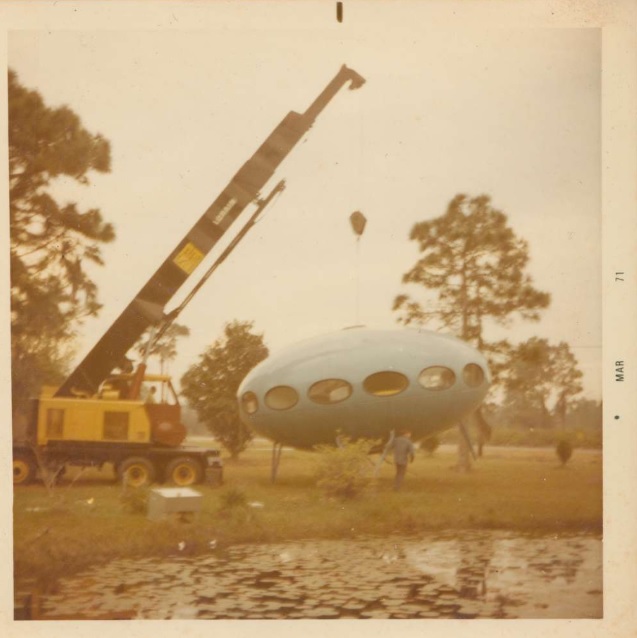
Jerry DeLong was also responsible for the Tampa Futuro being at its current location. Bruce DeLong recounted how his father, who was obsessed with Stanley Kubrick's film 2001: A Space Odyssey, had opened the 2001 Odyssey club in 1971 along with a group of partners in an old Tampa building that was formerly the Shangri La Lounge. They had then relocated the Futuro that had been used as a display model in Clearwater to the roof of the club though that had not been without issue. Bruce recalled that:
"It took two attempts to hoist the ship onto the roof ... When Sims Crane first lifted the saucer, gusts of wind caused the Futuro to smash into the side of the club. After repairs, they succeeded on a calmer day."
DeLong and his partners were later pressured into selling the club to Mafia boss Santo Trafficante Jr.. The mob connection continued in 1974 when Pasquale "Pat" Matassini, described by americanmafia.com as the "King Of The Tampa Strip Clubs" acquired the club and at some later date the club became the property of the current owners.
Update 021118
It is often reported that Gwendolyn Zerby who owned a Futuro (subsequently demolished) located on Semmes Street in Tampa, Florida imported her Futuro from Finland. A Tampa Times article published on 040971 provides a more accurate history of that Futuro.
The Futuro was in fact the one previously displayed in Clearwater, Florida by Futuro distributor "Futuro Of Florida". The article reports that the:
"... aqua blue saucer, 26 feet in diameter and priced at $18,000, was trucked down from its manufacturing plant and set up as a model in Clearwater in November. To Mrs. Zerby, a 69 year old widow and resident of Dunedin for the past 15 years, the air tight, maintenance-free and apparently burglar-proof home seemed ideally suited to her needs."
The Futuro was set up on Semmes Street on 031971.
The Tampa Bay Times is published in St. Petersburg, Florida. It has a long history having been around since the end of the 1800's. The newspaper was called the St. Petersburg Times until 2011.
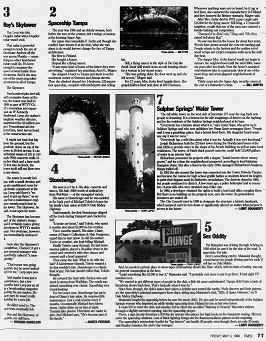 The 050396 issue of the publication carried a feature titled "Seven Wonders Of Tampa". The Futuro House actually made this feature twice with the Futuros on Semmes Street (now demolished) and on Dale Mabry Road being listed at numbers 2 and 5 respectively.
The 050396 issue of the publication carried a feature titled "Seven Wonders Of Tampa". The Futuro House actually made this feature twice with the Futuros on Semmes Street (now demolished) and on Dale Mabry Road being listed at numbers 2 and 5 respectively.
The article, as is the case with many Futuro articles, contained inaccuracies. In the case of Semmes Street it is one of those articles that suggested Gwendolyn Zerby imported her Futuro from Finland. It also reports that Mrs. Zerby flew to Finland to purchase her Futuro in 1965, a full three years before the first Futuro was manufactured. Following the death of Mrs. Zerby in 1979 the Futuro was sold and by the time the Tampa Bay times article was published it was in decline. It would later be demolished.
Additional information about the Semmes Street Futuro can be found on the "Demolished Futuros" page and there is more information about the second Futuro mentioned in the article on the "Tampa Futuro" page.
Original Information 012018
The basic "model" used outside of Finland for Futuro manufacturing and distribution rights was for a company to enter into a licensing agreement with Polykem covering a defined geographical area. That company would often enter into further agreements within their defined "territory" for other companies to take on marketing and distribution in "sub-territories". The primary licensee in the US was the Futuro Corporation Of Philadelphia but there were many sub-licensees around the country.
One such company was Futuro Of Florida, located in Clearwater, Florida.We do not know a whole lot about this particular company but there is a little information and a few photos to be found in various Florida newspaper articles from the early 1970's. Specifically the following (top to bottom, left to right):
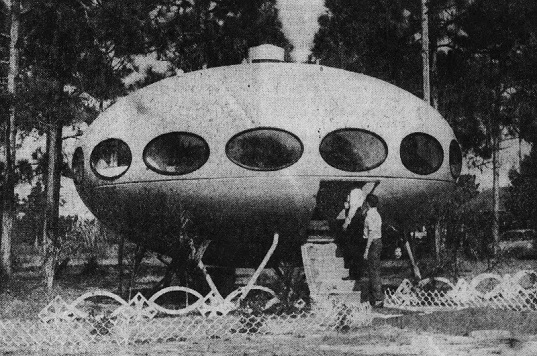
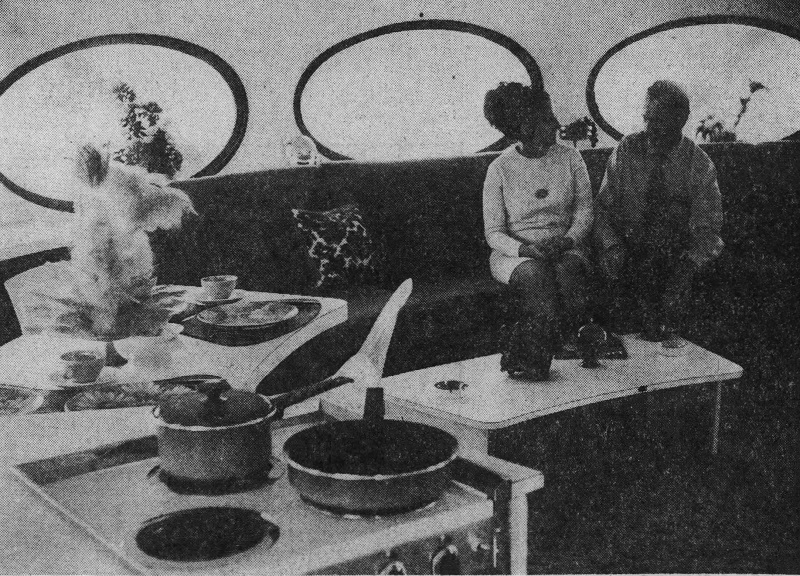
The article text was the same in both the "Main" and "Other" editions and describes Futuro Of Florida as "the local agent" (for Futuro).
In large part the article provides only the same kind of general background information often offered in such articles though there are a couple of interesting comments, one of which at least is almost certainly in error. In the first the writer notes that the Futuro was designed in Finland and:
"first introduced in Puerto Rico and the Bahamas as vacation homes more than a year ago."
The early history of the Futuro is often obscure and difficult to establish so perhaps anything is possible but we have never come across any information or documentation that suggests there was ever a Futuro in either Puerto Rico or the Bahamas.
The article goes on to report that:
"... a helicopter pilot transporting one recently, accidentally discovered the module seemed suited aerodynamically for flight when it began to lift itself, leaving slack in the line."
We have never come across such a suggestion before but we are not engineers or pilots so who are we to question the "experts"!
The Futuro House is described as being:
"Available for purchase as empty as a drained egg shell, or as a deluxe completely furnished model with shag rug, wall hugging curved sofa, hooded fireplace and dimmer controlled indirect lighting ..."
Units could be delivered over land or by helicopter and cost about $18,000 in the Tampa Bay area including freight and set up and ready to move in.
The Tampa Bay Times (actually known at the time as the St. Petersburg Times) 120670 article does not add much though it does indicate that the Futuro in Clearwater was blue and it provides a second (very unclear) photo.
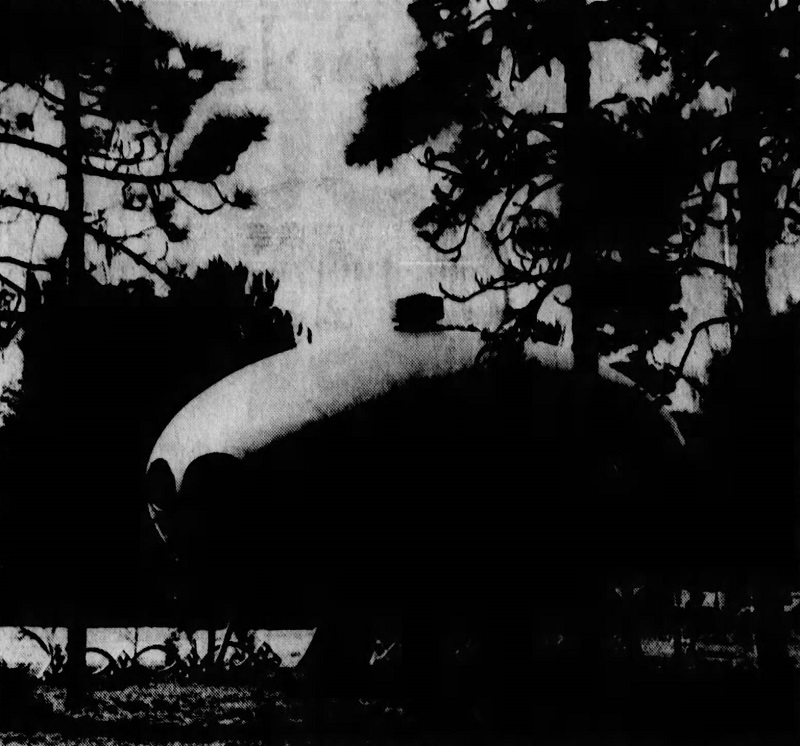
The final reference in The Tampa Tribune of 053171 is really just here "for the record" and was actually a question (and answer) from a reader who was looking to contact the company that distributed Futuros in the area.
We first came across Mod Pod Inc. some time ago when we added this Advertising Trade Card to our collection of "Things Futuro" (though we later traded it for some different Futuro related items) and until now that was the only mention of Mod Pod Inc. we had ever come across.
The undated card features a photo of a Futuro that was displayed at the Illinois State Fair in Springfield, Illinois.
This "trade card" was clearly designed as a tool for would be purchasers to indicate their interest to the dealer by marking their specific area of interest and returning the card to the dealer. Interestingly while the printed reverse side of the trade card included check boxes to indicate area of interest, the address of the dealer and space for a postage stamp it did not actually include an area for the interested party to provide a means of contact; something of an oversight to say the least.
The reverse of the trade card is titled:
THE WONDERFUL WORLD OF FUTURO
(As Displayed - Illinois State Fair - Springfield)
and the dealer is listed as:
Mod Pod Inc.
221½ East Washington
Iowa City, Iowa 52240
The check boxes for the interested party to indicate a particular area or areas of interest include the following (they clearly had some ambitious plans):
In the first of the two articles, titled "Home Of The Future In State Fair Debut" and found in the 080270 issue of The Pantagraph, we learn that Mod Pod Inc. of Iowa City, IA, a Futuro distributor, would have a Futuro on display at the Illinois State Fair from 081370 through 082370. Presumably the company, like others, had negotiated an agreement with The Futuro Corporation Of Philadelphia, primary licensee in the US for the manufacture and distribution of Futuro, to market and distribute the Futuro in a defined geographical territory.
The article described the Futuro as being constructed from 8 primary sections joined to form the shell along with an additional 704 parts that comprised all of the fixtures and fittings. The Futuro could be shipped disassembled by truck, rail or barge but the writer suggests a Futuro could be most easily flown into a site by helicopter fully assembled. The "completely self contained" Futuro came with appliances and utility hookups that then allowed it to be simply "plugged in" like any household appliance.
The Futuro featured a 23' curved sofa and two cocktail tables which, with the addition of a mattress, could be "converted" into a double bed when joined to the sofa; a central table held a barbeque and fireplace with a hood above and storage space below. Also included was a curved dining table with four chairs and (very sixties/seventies) "deep shag carpet" throughout.
The kitchen was likened to a "ship's galley" and included an 11 foot freezer and refrigerator, stainless steel sink, electric oven and range, "ample" cupboard space, a 20 gallon water heater and waste disposal. A double bed with storage above and below along with a vanity unit, shelves, two clothes rods and lighting units fitted out the bedroom while the bathroom included shower, vanity, wall cabinet, counter with built in porcelain bowl and fittings, commode, towel bars, mirror with make-up lights and an exhaust fan.
The Futuro, which cost $14,000, was described as a versatile housing unit which could serve many functions including "vacation and resort housing, retirement homes, penthouses, ski lodges, classrooms, hunting and fishing lodges, dormitory units, guest houses, sales offices, studios etc., etc., etc." Truck delivery and assembly on a prepared site would add around $2,500 to the cost of a standard Futuro.
The second of the two articles, from the 080870 issue of The Decatur Daily Review included an article under the headline "State Fairground To Come Alive On Thursday". The article was actually a report on preparations for the state fair but it did mention the construction of the Futuro House briefly and it was accompanied by the photo below which was captioned:
"Workmen get Futuro, a new housing design, ready for the fair. Futuro is located near the main gate."
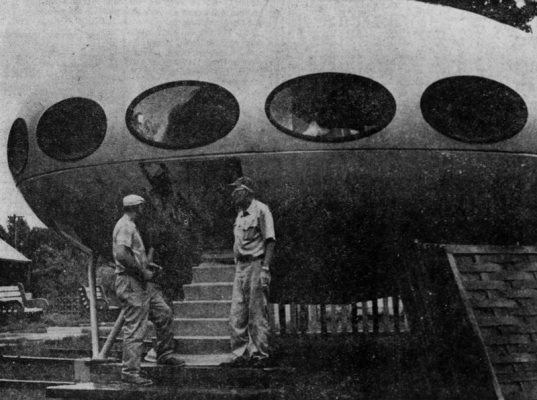
For a manufactured product produced in small numbers there are a surprising number of structural variations across the "Futuro World". There are clear and distinct variations between the Futuros manufactured in the US and those manufactured in Finland and the rest of the world but there are also some smaller differences, particularly related to the configuration of windows, within those groups. The primary structural differences between Futuros are illustrated here; differences in minor structural components and interior fixtures and fittings are not (these are covered on the individual Futuro pages and other pages across the site). Unless otherwise indicated photos here were taken by us during visits to various Futuros.
Latest Update(s)/Addition(s) ***
As illustrated in the two photos below the placement of the entrance varies between the US models and those manufactured in the rest of the world. In the Futuros manufactured in Finland and around the world the door is aligned below and between two windows in the center of a "segment" as seen in Futuro #001 (first photo). The Futuros manufactured in the US however have the entrance located immediately below a window and at the edge of a segment; this can be seen in the LA Futuro (second photo).
In Futuros manufactured in the USA the floor is typically installed at a higher level than those manufactured in Finland and the rest of the world. We have heard "anecdotally" that this was to do with the "floor area" which, given the Futuros elliptical section, was increased by raising the floor; that increased floor area was thought to offer a marketing benefit in the US. That said we do not recall ever seeing "documented" evidence of this being the reason.
The photos below, of Futuro #001 and the Idyllwild Futuro, illustrate this difference. First, in the photo of Futuro #001, we see that the floor level is closely aligned with the bottom of the entrance; on the other hand in the US model there is a step just inside the entrance and the floor level is clearly raised when compared to the Finnish model.
The Futuro II-X is, without a doubt, the single greatest variation from the norm as far as Futuros are concerned. The Futuro II-X was essentially a Futuro with an extra 10 foot straight section inserted between the two halves of the unit. The photo below (courtesy of Vickie Ruess) shows a Futuro II-X (to our knowledge the only one actually manufactured) located in Harvey Cedars, NJ around 1981/82. The plan on the right is from the Charles Cleworth Futuro House Archive. More information on the Futuro II-X can be found here.
The Futuros manufactured in Finland and around the world had a shell that was fabricated in sixteen segments. There are multiple examples of Futuros being broken down to these segments for transport and relocation in recent years (examples include the temporary relocation of the Haigerloch Futuro in April 2017, Craig Barnes' Futuros sojourn to Le Havre in 2018 and Nick McQuoid's relocation of Paringa River to Rangiora, also in 2018).
On the other hand in the US the Futuro was comprised of only eight segments and those segments were "mechanically joined and sealed" at the time of manufacture to create two hemispheres (this document and others refer). It almost certainly due to this fact that there are numerous examples of Futuros being transported in the US from one location to another fully assembled; a practice less common outside the US (examples include the Idyllwild Futuro's trip to its current location in 2004 and, from back in the 1980's this example of a trip the Frisco Futuro took).
The photos below clearly illustrate this major difference between the US Futuros and those manufactured elsewhere. The first two interior photos show the center of the roof where the joins between the segments can be seen; first is Futuro #001 (8 upper segments) and second is the US manufactured Austin Futuro (4 upper segments).
The bottom two photos show disassembled segments and again the difference is clear. First is the Haigerloch Futuro in the disassembled state prior to a road trip to a temporary location in 2017 (photo by P&M Präsentation und Medientechnik GmbH); second is the LA Futuro seen disassembled on a flatbed during its trip to LA from its previous location in Colorado (photo by Art Barrett).
The configuration of the windows is the design characteristic of the Futuro that exhibits the most variation from Futuro to Futuro. The original Suuronen design included sixteen windows equally spaced around the circumference of the unit and four additional "viewing windows" located in two rows of two below the main ring of windows. Most though not all of the Futuros manufactured other than in US have this configuration of windows.
The US manufactured Futuros most commonly have the same sixteen windows around the circumference of the unit but only a single row of two lower "viewing windows". The two photos below show these typical configurations; they are Taunnustein, Germany and Royse City, USA respectively.
The set of photos below illustrates the variety of alternate configurations that can be found in various Futuros. They are left to right, top to bottom:
"Sixteen elliptical glass windows at the equator of the Futuro are considered standard. Two viewing windows (which are alternate exits) near the dining area are standard but are an option at no charge. Additional or fewer windows are optional as well as operable tilt windows."
The general consensus is that the Futuro House failed largely, if not completely, because of the Oil Crisis that peaked around 1973. Indeed we contend that is the case on this very page.
Dr. Barney Vincelette is the owner of the Houston Futuro and has actually lived in his Futuro for some 36 years (at the time of writing - since 1977). Barney Vincelette is a well educated, clearly intelligent and highly opinionated man (that last rings a bell - oh yes it reminds us of ourselves). In this video Barney proposes an alternative theory for the demise of the Futuro House.
We do not intend to expound on his theory, Barney does that far more eloquently than we could, so check out his video for yourself and form your own opinion.
We will say that the world is full of almost as many opinions as there are people and often those diverse opinions spark interesting and sometimes intense debate. We personally think that this alternative theory is probably not what caused Futuro to fail to meet its original promise; we still believe the oil crisis did that. What is interesting though is that having listened to Barney we do think that in point of fact had the Futuro actually survived the oil crisis it might then actually have fallen foul of the "Vincelette" theory.
So perhaps we are actually agreeing with Barney (in part at least - we have to confess we live in a "Joe Fart Gas Suburbia" House and, forgive us Barney, while we are clearly avid Futuro fans - these pages are testament to that - we quite like our house as well) but qualifying that agreement by suggesting that his theory would have caused the Futuro's decline if, in fact, it had actually survived long enough.
Anyway take the time to listen to Barney, form your own opinion and then, if you feel so inclined stop by the forum where we have opened a thread to discuss the "Vincelette" theory - perhaps the forum might actually see a little discussion for once.
This is just a minor update to add Karuizawa as the current location of the second of the two Futuros exported to Japan.
PLEASE NOTE: This is theoretical reworking of Matti Suuronen's Futuro CV and is not intended or represented as fact.
Type Of Building: Futuro
Prototype Design: 11.13.1967, Date Of Manufacture: 04.01.1968
1968
- [#000] Hiidenkari, Janakkala, Transferred 1977 Suuronen, Keitele | Lodge | Now Museum Boijmans Van Beuningen, Rotterdam, Netherlands
- [#001] Kuusla, Hirvensalmi | Lodge | Now WeeGee Exhibition Center, Espoo, Finland
- [#002] Floating Exhibition, London, Transferred Lahnajärvi 1969 | Lodge | Now Matsalu, Estonia
Kuusla, Hirvensalmi | Lodge | Now WeeGee Exhibition Center, Espoo, Finland- [#004] Präsentation und Medientechnik GmbH | Now Haigerloch, Germany
- [#013] Kulturpark Plänterwald, Berlin | Lodge | Now Berlin, Germany
- [#015] Student Union, Turku | Office | Now Merimasku, Finland
- Präsentation und Medientechnik GmbH | Now Demolished
- Wittlaer, Düsseldorf | Now Demolished
- 4 -Road Motel, Kuhmoinen | Café | Now Kauhava, Finland
- Huomo, Luumäki | Café | Now Pöytyä, Finland
- UIA Congress, Argentina | Lodge | Now Half Frankfurt Half Unknown
- Expotechnik | Exhibition Display | Now Taunusstein
Armed Forces, Sweden | Air Traffic Control Facility | Now Stråtjära, Sweden
- Ekå, Älvsjö | Office | Now Örebro, Sweden
Armed Forces, Sweden | Air Traffic Control Facility | Now Stråtjära, Sweden
Armed Forces, Sweden | Air Traffic Control Facility | Now Tun, SwedenUnknown | Unknown | Now UnknownBofors, Törnnebro, Sweden | Shop | Now Unknown- Bofors, Törnnebro, Sweden | Firing Range Lookout Tower | Now Norrköping, Sweden
Bofors, Törnnebro, Sweden | Shop | Now Unknown- Bofors, Törnnebro, Sweden | Firing Range Lookout Tower | Now Linköping, Sweden
- Matsouka Shoji, Japan | Lodge | Now Felica Technical Academy, Maebashi, Japan
- Matsouka Shoji, Japan | Lodge | Now Karuizawa, Japan
Bofors, Törnnebro, Sweden | Shop | Now Unknown- Bofors, Törnnebro, Sweden | Firing Range Lookout Tower | Now Tun, Sweden
- Sundblom, Ahvenanmaa | Lodge | Now Storbroskär, Aland Islands, Finland
- Intourist, Dombai, NL | Ski Chalet | Now Hotel Tarelka, Dombai, Russia
- Sputnik, Shotsi, NL | Lodge | Now Krasnodar, Russia
- Sputnik, Krim, NL | 2nd Floor Café-Bar | Now Hurzuf, Republic Of Crimea
Christerensson, Sweden | Office | Now Örebro, Sweden
- Christerensson, Sweden | Office | Now Unknown
Update 051017 | Theoretical Version Of Suuronen's Futuro CV | V.7
Last time around we theorized that the "Finnish 20" might actually be the "Finnish 22" based partly on the Haigerloch Futuro's temporary trip to Milan and a photo from there which showed the Futuro had a Polykem identification plate indicating the unit was #004 and thus was almost certainly manufactured in Finland and imported to Germany.
In a posting to their website related to the Milan event owners P&M noted that the Futuro was actually one of two they acquired in the 1970's. Given that one of them was of Finnish manufacture it seems very likely that the other was also and that would increase the (theoretical) count of Finnish made Futuros to 23.
Oswin Appelmann, president of P&M, tells us that the second Futuro was completely destroyed in a fire.
Update 042217 | Theoretical Version Of Suuronen's Futuro CV | V.6
We have always enjoyed taking new photos or other documentation and "reworking" Matti Suuronen's Futuro CV to fit that new information. That said it should be noted that this is just opinion and theory and that the CV, which was put together from memory in the late 1980's, is the only actual "record" of the Futuros manufactured by Oy Polykem Ab in Finland.
This latest version assumes that the dates referenced by the CV represent the dates Futuros were actually sold and not the dates of their manufacture and actually expands the list from 20 to 22 (though again; this is just "theory"). The assumption is that the Futuros were mostly manufactured in the early years even though some were not then sold for several years.
The two Futuros that we have added to the list are the Haigerloch Futuro and the Futuro once located in Wittlaer, Düsseldorf and later demolished.
The Haigerloch Futuro was recently displayed as part of Louis Vuitton Objets Nomades collection which was in Milan, Italy as a feature of the "Salone del Mobile. Milano" which ran 040417 through 040917. There were many photos of this event posted around the web including several that showed the identification plate attached to the entry steps. This plate identified the unit as #004 and resembled the plate seen on other Futuros manufactured in Finland strongly suggesting this was a unit manufactured by Oy Polykem Ab rather than under license in Germany (or elsewhere).
As for the Wittlaer, Düsseldorf unit evidence suggests this unit was the second of two exhibited by Bayer Pharmaceuticals at the 1969 Hanover Fair and that it was subsequently gifted to Charles Wilp and moved to Wittlaer (the other Futuro was the one now located in Berlin).
There were, as at our last version of the CV, only two Futuros in the list for which the current location was "unknown" and these were listed as having been sold and shipped to Japan and Sweden in 1972 and 1978 respectively. Seems like a Futuro is unlikely to have been shipped to Japan only to then end up in Germany and it also seems unlikely to us that either of these is the second of two Futuros sold to Christerensson, Sweden in 1978.
Certainly the Wittlaer unit is not an option for either of these as this was displayed at the Hanover Fair in 1969 and then gifted to Charles Wilp. We do not know the date of purchase of the Haigerloch Futuro but we do know it has a "low" numbered identification plate (#004) and it also seems unlikely to us (though it is of course possible) that this would have been sold and installed in Sweden and then later moved to Germany.
We have also added the "identification plate numbers" for the Futuros for which that is known. We seem to think there are others we are not recalling; no doubt some of you out there will let us know of any we are missing.
PLEASE NOTE: This is theoretical reworking of Matti Suuronen's Futuro CV and is not intended or represented as fact.
Type Of Building: Futuro
Prototype Design: 11.13.1967, Date Of Manufacture: 04.01.1968
1968
- [#000] Hiidenkari, Janakkala, Transferred 1977 Suuronen, Keitele | Lodge | Now Museum Boijmans Van Beuningen, Rotterdam, Netherlands
- [#001] Kuusla, Hirvensalmi | Lodge | Now WeeGee Exhibition Center, Espoo, Finland
- [#002] Floating Exhibition, London, Transferred Lahnajärvi 1969 | Lodge | Now Matsalu, Estonia
Kuusla, Hirvensalmi | Lodge | Now WeeGee Exhibition Center, Espoo, Finland- [#004] Präsentation und Medientechnik GmbH | Now Haigerloch, Germany
- [#013] Kulturpark Plänterwald, Berlin | Lodge | Now Berlin, Germany
- [#015] Student Union, Turku | Office | Now Merimasku, Finland
- Präsentation und Medientechnik GmbH | Now Demolished
- Wittlaer, Düsseldorf | Now Demolished
- 4 -Road Motel, Kuhmoinen | Café | Now Kauhava, Finland
- Huomo, Luumäki | Café | Now Pöytyä, Finland
- UIA Congress, Argentina | Lodge | Now Half Frankfurt Half Unknown
- Expotechnik | Exhibition Display | Now Taunusstein
Armed Forces, Sweden | Air Traffic Control Facility | Now Stråtjära, Sweden
- Ekå, Älvsjö | Office | Now Örebro, Sweden
Armed Forces, Sweden | Air Traffic Control Facility | Now Stråtjära, Sweden
Armed Forces, Sweden | Air Traffic Control Facility | Now Tun, SwedenUnknown | Unknown | Now UnknownBofors, Törnnebro, Sweden | Shop | Now Unknown- Bofors, Törnnebro, Sweden | Firing Range Lookout Tower | Now Stråtjära, Sweden
Bofors, Törnnebro, Sweden | Shop | Now Unknown- Bofors, Törnnebro, Sweden | Firing Range Lookout Tower | Now Stråtjära, Sweden
- Matsouka Shoji, Japan | Lodge | Now Felica Technical Academy, Maebashi, Japan
- Matsouka Shoji, Japan | Lodge | Now Unknown
Bofors, Törnnebro, Sweden | Shop | Now Unknown- Bofors, Törnnebro, Sweden | Firing Range Lookout Tower | Now Tun, Sweden
- Sundblom, Ahvenanmaa | Lodge | Now Storbroskär, Aland Islands, Finland
- Intourist, Dombai, NL | Ski Chalet | Now Hotel Tarelka, Dombai, Russia
- Sputnik, Shotsi, NL | Lodge | Now Krasnodar, Russia
- Sputnik, Krim, NL | 2nd Floor Café-Bar | Now Hurzuf, Republic Of Crimea
Christerensson, Sweden | Office | Now Örebro, Sweden
- Christerensson, Sweden | Office | Now Unknown
Update 032517 | Theoretical Version Of Suuronen's Futuro CV | V.5
The list of Futuros and dates contained in Matti Suuronen's Architecture CV was put together from memory by Suuronen in the late 80's. As such it is subject to the vagaries of memory but despite that it remains the best documented history of the Futuros manufactured by Polykem. However we have always enjoyed the exercise of "reworking" the list to try to come up with an "unofficial" version that better fits the available facts and historical evidence. That said this time around we are not "reworking" the list, just thinking about it a different way.
Recent correspondence with Marko Home and Yves Buysse on the subject of the Hanover Fair of 1969 at which two Futuros (which subsequently ended up in Wittlaer, Düsseldorf and Berlin) were displayed by pharmaceutical giant Bayer caused us to wonder what the dates in the CV actually represent.
We had always assumed date of manufacture but the document does not actually state that and so the years could equally represent the years the Futuros were sold with their manufacturing having taken place earlier.
This could actually explain how Futuro #13, now in Berlin, could be listed in 1969 while the 13th listed Futuro does not appear until 1972. If units were manufactured sooner and stored until sale there would be no guarantee they would be sold in sequential order of manufacture. No way of knowing for sure but it would explain the apparent "out of order" numerical sequencing of the list.
Update 080616 | Theoretical Version Of Suuronen's Futuro CV | V.4
In July 2016 we visited with the folks at Expotechnik in Taunusstein where we were told that the white Futuro still on the Expotechnik campus and the yellow Futuro of which half is now in Frankfurt were in fact manufactured in Finland by Polykem and imported to Germany by Expotechnik's founder Heinz H. Soschinski.
Prior to this we had assumed these Futuro's were manufactured under license in Germany (and even theorized they may have been manufactured by Expotechnik themselves). As a result of this we have once again taken "poetic license" with Matti Suuronen's Futuro CV and come up with yet another entirely theoretical version that takes account of this new information.
This latest version leaves the "fate" of only two of the 20 "unknown"; one of the two that are listed as heading for Japan and the last of the seven listed as being destined for Sweden. All changes from the original version are in parentheses.
There are two specific changes in this version. The yellow Futuro that was displayed at the UIA Congress, Argentina is now listed as providing the half Futuro in Frankfurt (via Expotechnik) and the Futuro listed as "unknown" in 1971 has been moved to 1969 and is now listed as having been purchased by Expotechnik and now located in Taunusstein.
PLEASE NOTE: This is theoretical reworking of Matti Suuronen's Futuro CV and is not intended or represented as fact.
Type Of Building: Futuro
Prototype Design: 11.13.1967, Date Of Manufacture: 04.01.1968
1968
- Hiidenkari, Janakkala, Transferred 1977 Suuronen, Keitele | Lodge | Now Museum Boijmans Van Beuningen, Rotterdam, Netherlands
- Floating Exhibition, London, Transferred Lahnajärvi 1969 | Lodge | Now Matsalu, Estonia
- Kuusla, Hirvensalmi | Lodge | Now WeeGee Exhibition Center, Espoo, Finland
Kuusla, Hirvensalmi | Lodge | Now WeeGee Exhibition Center, Espoo, Finland- Student Union, Turku | Office | Now Merimasku, Finland
- 4 -Road Motel, Kuhmoinen | Café | Now Kauhava, Finland
- Huomo, Luumäki | Café | Now Pöytyä, Finland
- UIA Congress, Argentina | Lodge | Now Half Frankfurt Half Unknown
- Expotechnik | Exhibition Display | Now Taunusstein
Armed Forces, Sweden | Air Traffic Control Facility | Now Stråtjära, Sweden
Ekå, Älvsjö | Office | Now Örebro, Sweden- Kulturpark Plänterwald, Berlin | Lodge | Now Berlin, Germany
Armed Forces, Sweden | Air Traffic Control Facility | Now Stråtjära, Sweden
Armed Forces, Sweden | Air Traffic Control Facility | Now Tun, Sweden
Unknown | Unknown | Now UnknownBofors, Törnnebro, Sweden | Shop | Now Unknown
Bofors, Törnnebro, Sweden | Firing Range Lookout Tower | Now Stråtjära, SwedenBofors, Törnnebro, Sweden | Shop | Now Unknown
Bofors, Törnnebro, Sweden | Firing Range Lookout Tower | Now Stråtjära, Sweden
- Matsouka Shoji, Japan | Lodge | Now Felica Technical Academy, Maebashi, Japan
- Matsouka Shoji, Japan | Lodge | Now Unknown
Bofors, Törnnebro, Sweden | Shop | Now Unknown
Bofors, Törnnebro, Sweden | Firing Range Lookout Tower | Now Tun, Sweden
- Sundblom, Ahvenanmaa | Lodge | Now Storbroskär, Aland Islands, Finland
- Intourist, Dombai, NL | Ski Chalet | Now Hotel Tarelka, Dombai, Russia
- Sputnik, Shotsi, NL | Lodge | Now Krasnodar, Russia
- Sputnik, Krim, NL | 2nd Floor Café-Bar | Now Hurzuf, Republic Of Crimea
Christerensson, Sweden | Office | Now Örebro, Sweden
- Christerensson, Sweden | Office | Now Unknown
Update 111514 | Theoretical Version Of Suuronen's Futuro CV | V.3
We added a new Futuro location in Russia, the Krasnodar Futuro, to the site today based on research by Yves Buysse (thanks Yves). There is a possibility that the unit is in fact the second of the 1976 units destined for Russia. There is suggestion the unit was on site in 1975 and the current location (which appears to have always been the Futuro's location) is some 300 km or so away from the location listed in the CV but Futuro history is often clouded and unclear and personally we think it is very likely this is the unit listed on the CV and we have amended each version of the CV below to reflect this.
Update 092714 | Theoretical Version Of Suuronen's Futuro CV | V.2
Our theoretical exercise in reworking Matti Suuronen's Futuro CV generated some interesting thoughts and comments; as a result we have made a couple more changes and come up with a version 2 which includes the following two changes:
- It is known that there was at least one definite error in the CV whereby Hirvensalmi was listed as 1969 when it was in fact 1968 so we moved Hirvensalmi to 1968
- Marko Home pointed out to us that the Futuro that went to Argentina for the UIA Congress was yellow whereas the Berlin Futuro is white making it unlikely that they were one and the same. Given there was at least one error in the listed year for a unit we moved the Futuro listed as "unknown" (in this theoretical document) from 1970 to 1969 and listed it as the Kulturpark Plänterwald / Berlin Futuro
PLEASE NOTE: This is theoretical reworking of Matti Suuronen's Futuro CV and is not intended or represented as fact.
Type Of Building: Futuro
Prototype Design: 11.13.1967, Date Of Manufacture: 04.01.1968
1968
- Hiidenkari, Janakkala, Transferred 1977 Suuronen, Keitele | Lodge | Now Museum Boijmans Van Beuningen, Rotterdam, Netherlands
- Floating Exhibition, London, Transferred Lahnajärvi 1969 | Lodge | Now Matsalu, Estonia
- Kuusla, Hirvensalmi | Lodge | Now WeeGee Exhibition Center, Espoo, Finland
Kuusla, Hirvensalmi | Lodge | Now WeeGee Exhibition Center, Espoo, Finland- Student Union, Turku | Office | Now Merimasku, Finland
- 4 -Road Motel, Kuhmoinen | Café | Now Kauhava, Finland
- Huomo, Luumäki | Café | Now Pöytyä, Finland
- UIA Congress, Argentina | Lodge | Now Unknown
Armed Forces, Sweden | Air Traffic Control Facility | Now Stråtjära, Sweden
Ekå, Älvsjö | Office | Now Örebro, Sweden- Kulturpark Plänterwald, Berlin | Lodge | Now Berlin, Germany
Armed Forces, Sweden | Air Traffic Control Facility | Now Stråtjära, Sweden
Armed Forces, Sweden | Air Traffic Control Facility | Now Tun, Sweden
Unknown | Unknown | Now UnknownBofors, Törnnebro, Sweden | Shop | Now Unknown
Bofors, Törnnebro, Sweden | Firing Range Lookout Tower | Now Stråtjära, SwedenBofors, Törnnebro, Sweden | Shop | Now Unknown
Bofors, Törnnebro, Sweden | Firing Range Lookout Tower | Now Stråtjära, Sweden
- Matsouka Shoji, Japan | Lodge | Now Felica Technical Academy, Maebashi, Japan
- Matsouka Shoji, Japan | Lodge | Now Unknown
Bofors, Törnnebro, Sweden | Shop | Now Unknown
Bofors, Törnnebro, Sweden | Firing Range Lookout Tower | Now Tun, Sweden
- Sundblom, Ahvenanmaa | Lodge | Now Storbroskär, Aland Islands, Finland
- Intourist, Dombai, NL | Ski Chalet | Now Hotel Tarelka, Dombai, Russia
- Sputnik, Shotsi, NL | Lodge | Now Krasnodar, Russia
- Sputnik, Krim, NL | 2nd Floor Café-Bar | Now Hurzuf, Republic Of Crimea
Christerensson, Sweden | Office | Now Örebro, Sweden
- Christerensson, Sweden | Office | Now Unknown
Update 092014 | Theoretical Version Of Suuronen's Futuro CV
 The update of two weeks ago to this section and the question we posed resulted in quite a few emails with opinions and information that reminded us of a few things that we had failed to recall; our thanks in particular to Marko and Yves.
The update of two weeks ago to this section and the question we posed resulted in quite a few emails with opinions and information that reminded us of a few things that we had failed to recall; our thanks in particular to Marko and Yves.
We know that the CV was put together in the 1980's by Matti Suuronen long after the end of the manufacturing cycle for Futuro and we know that there are some errors and/or omissions in the document. For us that is not surprising, with a combination of elapsed time and an aging brain (and we can personally attest to a decline in memory as you get older) a few errors would not be at all surprising.
That said we feel like if it was us we would likely remember the actual number of units that were manufactured even if other details eluded us years later. So we began to wonder whether there might be a "version" of the CV that could accommodate for any errors, omissions or questions but still retain 20 as the number of units manufactured. Of course this original document as it stands is the only "true" record of Futuros manufactured in Finland and we are not seeking to "rewrite history" BUT just for the fun of it and to maybe encourage discussion or even "dig up" some new information the version of the CV below, which is purely speculation on our part, still lists 20 units but also accommodates for all of the following factors:
- Futuro 13, now located in Berlin, was manufactured in Finland in 1969 but there is no mention of Germany in the CV. The photo top right (courtesy of owner Cora Geißler) shows the steps of Futuro 13 and, inset, the Polykem plate which reflects this Futuro being number 13 and manufactured by Polykem. In an email we received Marko Home recounts that Futuro 13 was:
".. manufactured by Polykem in Finland in 1969 and transported to Kulturpark Plänterwald in East Berlin, the first cultural park / amusement park in GDR. Kulturpark Plänterwald was opened to celebrate the 20th anniversary of German Democratic Republic which was established as a satellite state of Soviet Union in 1949."
In the CV we see listed the Futuro that was shipped to Buenos Aires, Argentina for the UIA World Congress (Union Internationale des Architectes). That Futuro then remained in Buenos Aires and was showcased at the Exposición Internacional del Confort Hamano which ended 111669. The current location of that Futuro, if it still exists, is unknown. Perhaps this was Futuro 13? It could perhaps have been transported from Buenos Aires to Berlin when the exhibition there ended? - In the last update to this section we discussed the "Ekå" Futuro. This featured in a well documented helicopter transport near Stockholm on 092269 and there is documented evidence that it was then used as an office by a towing company. The Futuro that visited Buenos Aires was there on that date so it could not be that one and the other Futuro's manufactured in 1969 are accounted for; or are they?
The CV lists three Futuros that were purchased by the Swedish Armed Forces as Air Traffic Control Facilities and it also lists three purchased by Bofors, also for Sweden. Bofors happens to be a defense contractor and two of the units listed against Bofors are also identified with a location; Törnnebro. Interestingly we know that two of the three "Armed Forces" Futuros are actually located at Törnnebro. It is not unreasonable to assume that the three "Armed Forces" Futuros were actually purchased and installed through a defense contractor, in this case Bofors. This would not be the only "error" in respect of these units. In another email Marko tells us that:
"... while making the Futuro film in the late 1990s me and Mika Taanila interviewed Polykem's Project Supervisor Peter Stude, who had supervised the installation of the three Swedish Air Force Futuros on location. Peter Stude told us that the Swedish Air Force used these Futuros as lookout towers at a firing practice area ..."
which is a very different and somewhat less glamorous role for the Futuros.
So perhaps the three "Swedish Armed Forces" Futuros and the three "Bofors" Futuros were actually the same units? Two of the Bofors units are listed as being manufactured in the same year, 1971, whereas all three of the "Swedish Air Force" ones are listed in different years; a reasonable assumption would be that two units destined for the same location would be manufactured at the same time. Were that so it would free up three units that actually went elsewhere. One of those three is listed as being manufactured in 1969; perhaps that could be the "Ekå" Futuro? - We have previously listed the Futuro manufactured in 1968 as the one now in Örebro (our reasoning can be found in earlier entries in this section) but there is evidence that in fact this Futuro was previously the one used by "Ekå" (see the 090714 update) so the "Ekå" Futuro should be listed as now in Örebro and the 1978 unit becomes "location unknown".
- There is evidence that the three Futuros photographed together in Belgium in 1970 were imported. Indeed Yves reminded us that on this very website we write that:
"The Belgian Newspaper De Standaard in an 082306 article titled "Een vliegende schotel in Haacht" (A Flying Saucer In Haacht) reports that three Futuros were imported to Belgium in 1970."
We have not however come across any indication of where the Futuros were actually imported from and it is hard, based on either the original CV or our "fantasy" version, to find three Futuros manufactured in Finland at the same time or thereabouts that could have been in Belgium in 1970. Perhaps the Futuros were imported from another company manufacturing under license? Based on this we have not made any changes to the CV to account for the Belgian Futuros as we do not think they came from Finland.
PLEASE NOTE: This is theoretical reworking of Matti Suuronen's Futuro CV and is not intended or represented as fact.
Type Of Building: Futuro
Prototype Design: 11.13.1967, Date Of Manufacture: 04.01.1968
1968
- Hiidenkari, Janakkala, Transferred 1977 Suuronen, Keitele | Lodge | Now Museum Boijmans Van Beuningen, Rotterdam, Netherlands
- Floating Exhibition, London, Transferred Lahnajärvi 1969 | Lodge | Now Matsalu, Estonia
- Kuusla, Hirvensalmi | Lodge | Now WeeGee Exhibition Center, Espoo, Finland
- Student Union, Turku | Office | Now Merimasku, Finland
- 4 -Road Motel, Kuhmoinen | Café | Now Kauhava, Finland
- Huomo, Luumäki | Café | Now Pöytyä, Finland
UIA Congress, Argentina | Lodge | Now Unknown
UIA Congress, Argentina, Transferred Kulturpark Plänterwald, Berlin | Lodge | Now Berlin, GermanyArmed Forces, Sweden | Air Traffic Control Facility | Now Stråtjära, Sweden
Ekå, Älvsjö | Office | Now Örebro, Sweden
Armed Forces, Sweden | Air Traffic Control Facility | Now Stråtjära, Sweden
Unknown | Unknown | Now Unknown
Armed Forces, Sweden | Air Traffic Control Facility | Now Tun, Sweden
Unknown | Unknown | Now UnknownBofors, Törnnebro, Sweden | Shop | Now Unknown
Bofors, Törnnebro, Sweden | Firing Range Lookout Tower | Now Stråtjära, SwedenBofors, Törnnebro, Sweden | Shop | Now Unknown
Bofors, Törnnebro, Sweden | Firing Range Lookout Tower | Now Stråtjära, Sweden
- Matsouka Shoji, Japan | Lodge | Now Felica Technical Academy, Maebashi, Japan
- Matsouka Shoji, Japan | Lodge | Now Unknown
Bofors, Törnnebro, Sweden | Shop | Now Unknown
Bofors, Törnnebro, Sweden | Firing Range Lookout Tower | Now Tun, Sweden
- Sundblom, Ahvenanmaa | Lodge | Now Storbroskär, Aland Islands, Finland
- Intourist, Dombai, NL | Ski Chalet | Now Hotel Tarelka, Dombai, Russia
- Sputnik, Shotsi, NL | Lodge | Now Krasnodar, Russia
- Sputnik, Krim, NL | 2nd Floor Café-Bar | Now Hurzuf, Republic Of Crimea
Christerensson, Sweden | Office | Now Örebro, Sweden
- Christerensson, Sweden | Office | Now Unknown
Update 090714 | The "Finnish 21"?
So here's a question; could the "Finnish 20" actually be the "Finnish 21"? We know there is an error in the Futuro Page from Matti Suuronen's Architecture CV relating to the date of manufacture of Hirvensalmi but that is a relatively small error; omitting a Futuro entirely would be much more significant. Could that be possible?
That is the interesting question posed by some text in the 1/2010 issue of the Swedish magazine Riksettan, a photo of a Futuro being transported by helicopter and a photo from the website of a Swedish towing company.
 On 092269 a Futuro was transported by Swedish Air Force helicopter from Råsunda (a section of the Solna Municipality) to Älvsjö; in Sweden (on page 31 of the Home & Taanila book Futuro: Tomorrow's House from Yesterday we learn that the Swedish newspaper Dagens Nyheter ran a front page story on this event. The Futuro was actually dropped off at the wrong location and had to be moved to the correct location by crane).
On 092269 a Futuro was transported by Swedish Air Force helicopter from Råsunda (a section of the Solna Municipality) to Älvsjö; in Sweden (on page 31 of the Home & Taanila book Futuro: Tomorrow's House from Yesterday we learn that the Swedish newspaper Dagens Nyheter ran a front page story on this event. The Futuro was actually dropped off at the wrong location and had to be moved to the correct location by crane).
The photo at above left is a shot of this Stockholm area helicopter transport event. The Swedish Air Force decal is clearly visible on the helicopter and, most importantly, there is a logo on the Futuro itself; ekå (please note this image is watermarked and should not be reproduced - while we purchased copies we do not own the copyright).
 We had never really considered researching the logo on the Futuro in the helicopter transport photograph though we probably should have. Recently however Yves Buysse sent us a link to the website of Ekå - Ekå Bilbärgning AB where there is another image of a Futuro with this logo (thanks Yves). The photo can be seen above left. On the webpage in the left section is a description of the photograph; Google Translate tells us this reads:
We had never really considered researching the logo on the Futuro in the helicopter transport photograph though we probably should have. Recently however Yves Buysse sent us a link to the website of Ekå - Ekå Bilbärgning AB where there is another image of a Futuro with this logo (thanks Yves). The photo can be seen above left. On the webpage in the left section is a description of the photograph; Google Translate tells us this reads:
"Right: Photo Card from Ekå . Scania 110 and the Futuro "flying saucer" which for a time was used as an office."
The photograph to us clearly looks edited but the comment does indicate that the company used a Futuro for a time as an office. It seems reasonable to assume that this Futuro was one and the same as that shown in the helicopter transport shot. The website Larssons Blogg suggests that Ekå at least considered the manufacture and sale of Futuros though it is unknown if anything ever came from that.
 On page 27 of Home & Taanila's Futuro: Tomorrow's House from Yesterday we learn that in October 1969 a Futuro was accompanied by Matti Suuronen when it was shipped to Buenos Aires, Argentina for the UIA World Congress (Union Internationale des Architectes). The Futuro then remained in Buenos Aires and was showcased at the Exposición Internacional del Confort Hamano exhibition that ran from 102469-111669 (the photo above left, a screenshot from this YouTube video shows the Futuro at this exhibition). Of the Futuro's listed as manufactured in 1968 and 1969 in Matti Suuronen's Architecture CV this is the only one for which the history remains unknown and clearly this one could not have been in the Stockholm area on 102269 and at the same time in Buenos Aires.
On page 27 of Home & Taanila's Futuro: Tomorrow's House from Yesterday we learn that in October 1969 a Futuro was accompanied by Matti Suuronen when it was shipped to Buenos Aires, Argentina for the UIA World Congress (Union Internationale des Architectes). The Futuro then remained in Buenos Aires and was showcased at the Exposición Internacional del Confort Hamano exhibition that ran from 102469-111669 (the photo above left, a screenshot from this YouTube video shows the Futuro at this exhibition). Of the Futuro's listed as manufactured in 1968 and 1969 in Matti Suuronen's Architecture CV this is the only one for which the history remains unknown and clearly this one could not have been in the Stockholm area on 102269 and at the same time in Buenos Aires.
It is possible the helicopter transport shows one of the other 1968 or 1969 Futuros listed on the CV of course; but is it likely - the original locations for each of these units are listed on the CV and their history is well documented? It seems to us to be rather unlikely that one of these units could be the one in the photo.
Add to that the presence of the logo and the fact that Ekå used a Futuro as an office for a time; surely these must be one and the same unit? Is it really likely that a unit would have the Ekå logo applied and then removed only for the Company to buy a Futuro later and add the logo again. We think not which leaves us with only one conclusion; the "Finnish 20" is actually the "Finnish 21" and a unit is missing from Matti Suuronen's CV that was manufactured in 1969.
Of course this is all conjecture, our own Futuro "Conspiracy Theory" if you like, though we would like to think educated and well thought out conjecture. However we could easily be missing a piece of the puzzle and completely wrong so, as always, please let us know if you can add anything whether supporting or disproving this theory.
One final note on this relates to the 1/2010 issue of the Swedish magazine Riksettan which we added to our collection of "Things Futuro" this week. The article in the magazine includes the photo of the 102269 helicopter transport and it also includes a comment by the owner of the Örebro Futuro that he believes that the unit shown in the photo is actually the one now in Örebro. That would suggest a possible change to "our version" of the CV since we had listed the last (1978) Futuro as the one now in Örebro. Again if you can add any information please do.
For now we are going to leave "our version" of the CV alone and we are not adding a possible 21st Finnish Futuro to the "Lost Souls" page; we are going to wait to see what else we can find and what information might come in to either refute or prove this theory first.
Original Information 042314
The image below is a photo of a page from Matti Suuronen's Architecture CV and lists, for want of a better description, the "Original 20" Futuros; those that were actually manufactured in Finland by Polykem as opposed to under license at other locations around the world.
Our thanks go to Craig Barnes, owner of "Futuro 22", who took the photo during a 2013 visit to Finland and to Marko Home, co-editor of the book Futuro: Tomorrow's House from Yesterday who gave us some background on the document.

Listed below is a translation of the document (courtesy of Google Translate which, at times, struggles with the Finnish language so there are very likely errors in the translation) and an attempt to place these units at their current locations. We would appreciate any corrections to the translations and to the current locations of these units. If you have any updates to this information please use the site Contact Form or email us directly.
A couple of points to note:
- Marko Home tells us that this document was complied in the 1980's by Matti Suuronen. It contains an error in relation to Futuro #001 (Matti Kuusla, Hirvensalmi) which was actually manufactured in 1968 not 1969. The error was either one of memory given that the document was authored long after Futuro manufacturing ceased or a simple "typo"
- We have listed the 1978 unit that went to Sweden as being the one now in Örebro. Our reasoning is that of the 7 units that are identified as going to Sweden 3 were purchased by the Swedish Armed Forces for use as Air Traffic Control facilities, three are listed as being purchased by Bofors and identified as "Shops" and the 1978 unit is "odd man out" with a different purchaser and a different identification (office).
Type Of Building: Futuro
Prototype Design: 11.13.1967, Date Of Manufacture: 04.01.1968
1968
- Hiidenkari, Janakkala, Transferred 1977 Suuronen, Keitele | Lodge | Now Museum Boijmans Van Beuningen, Rotterdam, Netherlands
- Floating Exhibition, London, Transferred Lahnajärvi 1969 | Lodge | Now Matsalu, Estonia
- Kuusla, Hirvensalmi | Lodge | Now WeeGee Exhibition Center, Espoo, Finland
- Student Union, Turku | Office | Now Merimasku, Finland
- 4 -Road Motel, Kuhmoinen | Café | Now Kauhava, Finland
- Huomo, Luumäki | Café | Now Pöytyä, Finland
- UIA Congress, Argentina | Lodge | Now Unknown
- Armed Forces, Sweden | Air Traffic Control Facility | Now Stråtjära, Sweden
- Armed Forces, Sweden | Air Traffic Control Facility | Now Stråtjära, Sweden
- Armed Forces, Sweden | Air Traffic Control Facility | Now Tun, Sweden
- Bofors, Törnnebro, Sweden | Shop | Now Unknown
- Bofors, Törnnebro, Sweden | Shop | Now Unknown
- Matsouka Shoji, Japan | Lodge | Now Felica Technical Academy, Maebashi, Japan
- Matsouka Shoji, Japan | Lodge | Now Unknown
- Bofors, Tidaholm, Sweden | Shop | Now Unknown
- Sundblom, Ahvenanmaa | Lodge | Now Storbroskär, Aland Islands, Finland
- Intourist, Dombai, NL | Ski Chalet | Now Hotel Tarelka, Dombai, Russia
- Sputnik, Shotsi, NL | Lodge | Now Krasnodar, Russia
- Sputnik, Krim, NL | 2nd Floor Café-Bar | Now Hurzuf, Republic Of Crimea
- Christerensson, Sweden | Office | Now Örebro, Sweden
Update 120321
We have never seen a photo of the Futuro the 21st Century Corp. exhibited at the State Fair Of Texas in 1970 and while that remains the case we can now, thanks to Paula Bosse who sent us a link (thank you Paula), actually go one better with some vintage video footage.
The video, titled "WFAA - October 14 - 15, 1970 Part 2" is a part of the WFAA Collection and is the property of the G. Williams Jones Collection at SMU. It was shared to Youtube by SMU Jones Film in October of 2020. The Futuro footage is about 13 minutes into the video.
The video is accompanied by descriptions of each of its segments and the Futuro segment is described this way:
"A tour of the Futuro II, a futuristic spaceship-like vacation home designed by Finnish architect Matti Suuronen, which is on display at the 1970 State Fair of Texas (a sign for Forest Ave., now MLK Blvd., can be seen in the background); two women in metallic mini dresses and boots walk up steps to enter the fiberglass house; one of the women lounges on a bed and looks through a brochure titled "Adventures in Living" with a photo of a Futuro house on the cover; the other woman styles her hair in a vanity mirror (Silent)."
We have never seen a photo of the Futuro the 21st Century Corp. exhibited at the State Fair Of Texas in 1970 and while that remains the case we can now, thanks to Paula Bosse who sent us a link (thank you Paula), actually go one better with some vintage video footage.
The video, titled "WFAA - October 14 - 15, 1970 Part 2" is a part of the WFAA Collection and is the property of the G. Williams Jones Collection at SMU. It was shared to Youtube by SMU Jones Film in October of 2020. The Futuro footage is about 13 minutes into the video.
The video is accompanied by descriptions of each of its segments and the Futuro segment is described this way:
"A tour of the Futuro II, a futuristic spaceship-like vacation home designed by Finnish architect Matti Suuronen, which is on display at the 1970 State Fair of Texas (a sign for Forest Ave., now MLK Blvd., can be seen in the background); two women in metallic mini dresses and boots walk up steps to enter the fiberglass house; one of the women lounges on a bed and looks through a brochure titled "Adventures in Living" with a photo of a Futuro house on the cover; the other woman styles her hair in a vanity mirror (Silent)."
In addition to the video Paula also sent us a copy of an article about the Futuro that appeared in the Dallas Morning News on 102270.
The article is titled "Pad Of Future Shown At Fair". It characterizes the structure, which it calls Futuro II, as "a possible solution to the housing crisis" and adds that it was the creation of the 21st Century Corporation. While we know the company was a licensed distributor of Futuro it is clearly incorrect to suggest they "created" the Futuro.
As is often the case with these vintage articles about the Futuro there are a few inaccuracies as well as some interesting "nuggets" of information about the interior fixtures and fittings that went along with a Futuro from a particular distributor. Things that interested us include: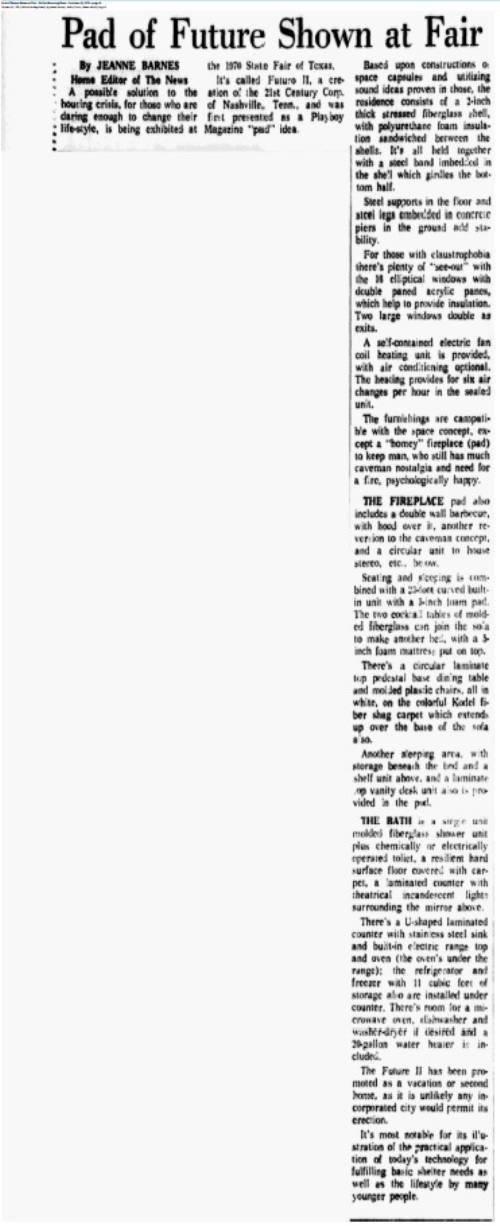
Update 122416
An article published in the October 1982 issue of D Magazine informs us that the 21st Century Corporation exhibited a Futuro at the 1970 State Fair Of Texas. Specifically the article reports as follows:
"The 1970 fair featured Futuro II, a baby-blue oval-shaped Fiberglas structure with oval windows and a 26-foot curved sofa that opened into a 33-foot bed. The 21st Century Corp. of Nashville, Tennessee, promised to mass produce these giant eggs, which were a sure bet to take over the housing market by 1980, for the nominal sum of $20,000 each."
We think the math got a little out of whack somewhere along the way; the 26 foot curved sofa certainly did not expand into a 33 foot bed! Interesting Futuro reference nonetheless. Though we live in Dallas we have only been here since the late 90's; would love to hear from anyone who has or knows of a photo of the Futuro at the State Fair.
Original Information 100516
The 051770 issue of Nashville, TN based The Tennessean included this two page article about the Futuro House under the headline "The Space Place".
The article includes descriptions of the Futuro along with comments and opinions from Jerry Free, president of the 21st Century Corporation. The article describes Free as:
"... a Nashville based marketer of structures like the ... Futuro II, which looks something like a styrofoam bagel"
Personally the Futuro has never put us in mind of a bagel but it is an amusing and colorful description of the Futuro.
Presumably Free's company was one of those that negotiated marketing and distribution rights for specific territories, in this case likely Tennessee though the article does not specify, with The Futuro Corporation Of Philadelphia, the primary licensee in the US for the manufacture and distribution of the Futuro.
Free is quoted as saying that there were several "Futuro Projects" in the works including a plan by a Nashville music publisher to combine several Futuros into a Music Row office complex, a rather scary plan to suspend one from a cliff "like a fish on a line" for a local doctor, a local schools plan to use several Futuros as classrooms and a Kansas City hotel that was planning to use several units as Penthouse "VIP" suites. Free added that other potential uses included ski chalet, beach house, guest house or motel unit.
The description of the standard fixtures and fittings follow much the same lines as others we have seen with the reporter adding that a standard Futuro would cost $14,000 plus shipping.
Free however also commented that there were multiple accessories that could be added such as a Microwave (an extra $1100 - that must have been some Microwave), a built in vacuum that cleaned the floors at the push of a button ($700) or even, for an extra $1500, a watertight unit that could be floated on a lake. Though the remaining options were not listed there must have been many more as Free indicated that it would total around $40,000 for all the options.
The 21st Century Corporation had a Futuro on show and open to the public at the Municipal Auditorium in Nashville for a few hours a day (photo below). Free was reported as saying this Futuro was the first one assembled in the US; no way of knowing if that was really the case or not; there were certainly others in the US prior to 1970 (this one in Philadelphia for example) but at least in some cases these had the characteristics of the Futuros manufactured in Finland rather than those constructed in the US and Free did not say it was the first Futuro seen in the US, he said it was the first one assembled in the US so perhaps this was true. In the end there is no way to know for sure.
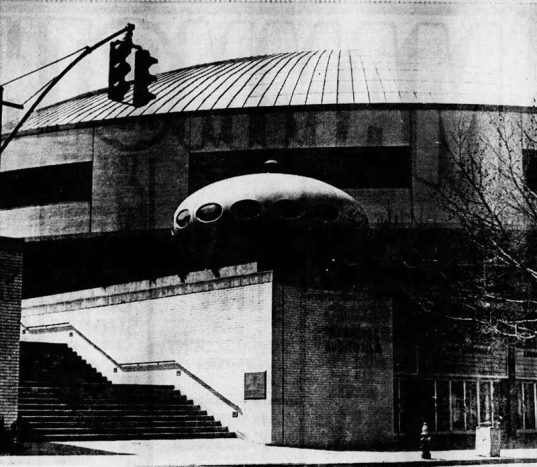
The article is titled "Pad Of Future Shown At Fair". It characterizes the structure, which it calls Futuro II, as "a possible solution to the housing crisis" and adds that it was the creation of the 21st Century Corporation. While we know the company was a licensed distributor of Futuro it is clearly incorrect to suggest they "created" the Futuro.
As is often the case with these vintage articles about the Futuro there are a few inaccuracies as well as some interesting "nuggets" of information about the interior fixtures and fittings that went along with a Futuro from a particular distributor. Things that interested us include:
- The clearly inaccurate statement that the construction of Futuro was "based upon constructions of space capsules and using sound ideas proven in those".
- The mention of 16 windows with double acrylic panes is accurate but the article adds that "Two large windows double as exits". We assume this refers to the lower viewing windows but we do not recall ever seeing mention of these being "exits"; presumably in this model these two windows could be opened.
- The Futuro is said to have a "double wall barbecue"; this is another feature we do not recall seeing mention of anywhere else and to be honest we are not too sure exactly what it even means.
- The article mentions the Futuro is fitted out with an electric range top and oven, and a refrigerator/freezer and that there was room for microwave, dishwasher and washer-dryer; we do not recall ever seeing such a full list of appliances as an option for a Futuro.

Update 122416
An article published in the October 1982 issue of D Magazine informs us that the 21st Century Corporation exhibited a Futuro at the 1970 State Fair Of Texas. Specifically the article reports as follows:
"The 1970 fair featured Futuro II, a baby-blue oval-shaped Fiberglas structure with oval windows and a 26-foot curved sofa that opened into a 33-foot bed. The 21st Century Corp. of Nashville, Tennessee, promised to mass produce these giant eggs, which were a sure bet to take over the housing market by 1980, for the nominal sum of $20,000 each."
We think the math got a little out of whack somewhere along the way; the 26 foot curved sofa certainly did not expand into a 33 foot bed! Interesting Futuro reference nonetheless. Though we live in Dallas we have only been here since the late 90's; would love to hear from anyone who has or knows of a photo of the Futuro at the State Fair.
Original Information 100516
The 051770 issue of Nashville, TN based The Tennessean included this two page article about the Futuro House under the headline "The Space Place".
The article includes descriptions of the Futuro along with comments and opinions from Jerry Free, president of the 21st Century Corporation. The article describes Free as:
"... a Nashville based marketer of structures like the ... Futuro II, which looks something like a styrofoam bagel"
Personally the Futuro has never put us in mind of a bagel but it is an amusing and colorful description of the Futuro.
Presumably Free's company was one of those that negotiated marketing and distribution rights for specific territories, in this case likely Tennessee though the article does not specify, with The Futuro Corporation Of Philadelphia, the primary licensee in the US for the manufacture and distribution of the Futuro.
Free is quoted as saying that there were several "Futuro Projects" in the works including a plan by a Nashville music publisher to combine several Futuros into a Music Row office complex, a rather scary plan to suspend one from a cliff "like a fish on a line" for a local doctor, a local schools plan to use several Futuros as classrooms and a Kansas City hotel that was planning to use several units as Penthouse "VIP" suites. Free added that other potential uses included ski chalet, beach house, guest house or motel unit.
The description of the standard fixtures and fittings follow much the same lines as others we have seen with the reporter adding that a standard Futuro would cost $14,000 plus shipping.
Free however also commented that there were multiple accessories that could be added such as a Microwave (an extra $1100 - that must have been some Microwave), a built in vacuum that cleaned the floors at the push of a button ($700) or even, for an extra $1500, a watertight unit that could be floated on a lake. Though the remaining options were not listed there must have been many more as Free indicated that it would total around $40,000 for all the options.
The 21st Century Corporation had a Futuro on show and open to the public at the Municipal Auditorium in Nashville for a few hours a day (photo below). Free was reported as saying this Futuro was the first one assembled in the US; no way of knowing if that was really the case or not; there were certainly others in the US prior to 1970 (this one in Philadelphia for example) but at least in some cases these had the characteristics of the Futuros manufactured in Finland rather than those constructed in the US and Free did not say it was the first Futuro seen in the US, he said it was the first one assembled in the US so perhaps this was true. In the end there is no way to know for sure.

Update 052020
In an email conversation recently Pat told us about her recollections of a trip in Florida around 1973 during which she visited a Futuro. Pat did not recall exactly where they traveled or where the Futuro was located.
However through the course of our email correspondence and based on the photos below that Pat shared with us we believe the Futuro was the AILC Futuro during its time in San Carlos Park in Fort Myers, Florida.
We reached that conclusion for several reasons:
- The photos show a very recognizable chimney/vent structure on the roof which we do not recall seeing on other Futuros
- Pat's photos show plants and landscaping around the Futuro that look very similar to that seen in other photos of this Futuro
- After discussing the location for a while Fort Myers seemed to make sense as the destination for the trip during which Pat photographed the Futuro



Original Information 012018
Outside of Finland Futuro manufacturing and distribution was licensed to multiple companies around the world. A company would license for a geographical area and then that company would often license sub-territories to other companies who would market and distribute the Futuro on their behalf. In the US primary the licensee was the Futuro Corporation Of Philadelphia but there were a great number of sub-licensees around the country.
 One of the US companies was the American International Land Co. (AILC) based in Coral Gables, Florida. We only recently came across mention of this company in the 051770 issue of the Tampa Bay Times (published as the St. Petersburg Times at the time) and have yet to find any other references to the AILC.
One of the US companies was the American International Land Co. (AILC) based in Coral Gables, Florida. We only recently came across mention of this company in the 051770 issue of the Tampa Bay Times (published as the St. Petersburg Times at the time) and have yet to find any other references to the AILC.
The Tampa Bay Times article, titled "Futuro II Sets Down In Florida" started out this way:
"At first glance, it looked as if a golden flying saucer had landed in a stand of trees beside Peace River, a few miles outside Arcadia. Inside, the space vehicle is the sort of groovy pad Playboy might feature as a vacation retreat for the sophisticated bachelor."
The article provided the reader with the usual general information about Futuro found in most newspaper and magazine articles but it also provided a couple of photos and some more "specific" information (and a colorful description for the Futuro which it describes as looking "a little like a short, fat pumpkin").
The Futuro was finished in a golden color and, based on this quote from the article, had an interior to match:
"The furniture is built in; the 23-foot couch and the vinyl laminate surfaces are shades of butter-scotch gold similar to the permanent exterior color."
It was owned by AILC, described as the "franchised dealer for the Futuro II in South Florida", which was headquartered at 866 Ponce de Leon Road, Coral Gables, Florida. The price for a Futuro "on your lot, with air-conditioning, heating and furnishings" was reported to be about $18,000.
At the time of the article the Futuro was no longer located in Arcadia having been moved to San Carlos Park in Fort Myers, Florida. The Futuro apparently generated a great deal of interest, some of it, according to AILC's property manager J. M. Hess, was less than desirable. Hess is quoted as saying that:
"Every time we locked it up , it was broken into, so we finally just left it open."
It seems like that strategy resulted in some losses as the article went on to report that:
"Much of the interior finishing, built-in lamps, metal trim and such things disappeared before The Times arrived on the scene, so it is difficult to judge the Futuro as to the quality of the finished product."
The article is accompanied by two photos, one exterior shot (of the Futuro when located in Arcadia prior to the move to Fort Myers) and one interior shot.


 There is one other notable piece of information in the article which relates to the appearance of the Futuro in the September 1970 issue of Playboy Magazine. We are told that:
There is one other notable piece of information in the article which relates to the appearance of the Futuro in the September 1970 issue of Playboy Magazine. We are told that:
"AILC put the model up at Peace River Estates at Nocatee ... because Playboy magazine wanted to do a story on it as a vacation retreat for the sophisticated bachelor (I told you it was that sort of place).
We had always thought that the Playboy magazine article had featured the Futuro seen in Arcadia (based on the AP Wire Photo referenced below and specifically the appearance of the chimney structure on the roof of the Futuro which is the same in the photo and the Playboy article and is a type of chimney we do not recall seeing on other Futuros) and this article appears to support that theory.

 A second newspaper article, this one from the 091870 issue of The Tampa Tribune, also reported on this Futuro though in this case AILC was not mentioned.
A second newspaper article, this one from the 091870 issue of The Tampa Tribune, also reported on this Futuro though in this case AILC was not mentioned.
This article confirmed that the Futuro, while located in Arcadia, was the one used for the Playboy article; it reported that the:
"...saucer shaped home concept was the subject of a three page article in the September issue of Playboy. The home most often seen in that article is the home now in San Carlos Park. It was in a development near Arcadia when the Playboy crew took the pictures, according to the San Carlos Park developer."
This article also carries the photo seen below of the Futuro in the Fort Myers location (the only one we have seen) where the chimney structure is clearly visible and evidently the same as that seen in the Playboy article and the AP Wire Photo of the Futuro in Arcadia.

 Though we had not previously seen anything that could link the Futuro that spent a short time in Arcadia to AILC it does feature in a item already in our collection of "Things Futuro"; an AP Wire Photo (below) from the archives of the Baltimore Sun. The photo, dated 033070, shows a Futuro located "at the Nocatee-Owens Bridge site on the Peace River near Arcadia".
Though we had not previously seen anything that could link the Futuro that spent a short time in Arcadia to AILC it does feature in a item already in our collection of "Things Futuro"; an AP Wire Photo (below) from the archives of the Baltimore Sun. The photo, dated 033070, shows a Futuro located "at the Nocatee-Owens Bridge site on the Peace River near Arcadia".
This photo presumably appeared in the Baltimore Sun but we have not actually come across it in that publication yet. It did appear in the 033170 issue of the Deseret News (above left - from The Charles Cleworth Futuro House Archive) and in many other publications (see here).

On 091314 we had the opportunity to visit the Austin Futuro; in addition to seeing and photographing the Futuro we were also able to look through a collection of original papers, drawings and plans associated with the Futuro that Ira, the owner, had kept. We would like to thank Ira, and Terry who also accompanied us, for spending time with us, chatting about Futuros and allowing us to photograph some of the archived papers. For more detail on this visit, the Austin Futuro and the plans and drawings shown below see the Austin Futuro page.
While we discuss these plans and drawings in more detail on the Austin page we thought it appropriate to add this section to this page also as it is directly related to the design and construction of the Futuro House.
Our conversation with Ira and the drawings and documents he shared with us made it apparent that the options for customizing a Futuro (at least in the US - Futuro II) were more extensive than we had previously thought.
The document shown below is a Fact Sheet about Futuro II, "Facts On The Futuro II Fiber-Glass House", and it lists some of the items that were available for customization (this document is very similar, but not identical, to this Star Enterprises, Janesville, Wisconsin one which was sent to us some time ago by the Hedberg Public Library in Janesville).
Among the customization options listed are the window configuration, additional or fewer or operable being among the options, differing lengths of support legs and the ability to "cluster" units by the use of interlocking sections.
This set of four drawings is a further illustration of the ability to customize; they show various aspects of the interior configuration of the Futuro being constructed for Ira and we can also see notes made by Ira's mother "discussing" further options and requirements.




Ira tells us that the unit as installed matched these drawings very closely. A letter from the Futuro Corporation of Philadelphia Vice President Stanley H. Blumenthal, dated 042170, details the final delivered configuration of "Ira's Pod". Two of three pages of the letter are shown below (the third page carries only the signature block).
"Ira's Pod" ended up costing $14,975 as customized. Several modifications are listed in the letter including:
- Additional electrical outlets
- Installation of a drawer cabinet instead of a range
- Installation of four chaises instead of a sofa
- Manufacture of 8' long legs instead of the standard 3'
- An extra long Service Tue to match the 8' legs (Typo - Service Tube?)
- Two upper viewing windows (this option was removed and there are no upper viewing windows)
The first two plans listed are full size architectural "blueprints", the second two are smaller architectural drawings (that do not have the "blue" hue that presumably gives "blueprints" their name) and the remaining 5 are a set of copies of plans on smaller white paper; all are original and from the time the Futuro was purchased and installed.
- Radial Steel Layout | Drawing # 168 | 031470
- Electrical Plan | Drawing # E1 | 050870
- Steel Plan | Drawing # S-1 | 011470
- Pier Details | Drawing # PD-1 | 011470
- Floor Plan | Drawing # A-1 | 010170
- Elevation & Section | Drawing # A-2 | 011470
- Electrical Plan | Drawing # E1 | 010170
- Heating & Ventilating | Drawing # HV-1 | 010170
- Plumbing Plan | Drawing # P-1 | 010170









All in all we had a fascinating visit with Ira and Terry and once again we would like to thank them for spending time and discussing Futuros with us and particularly for sharing with us the various documents and plans seen here.
The October 1972 issue (Volume 47 #10) of Montreal based French Canadian publication Bâtiment included an interesting article on Canadian Futuro manufacturing. Len over at futurohouse.com found and shared this .pdf article; thanks Len. We have tried unsuccessfully to find a copy to purchase for our collection of "Things Futuro; if you come across one please let us know.
The basic "model" used outside of Finland for Futuro manufacturing and distribution rights was for a company to enter into a licensing agreement with Polykem covering a defined geographical area. That company would often enter into further agreements within their defined "territory" for other companies to take on marketing and distribution in "sub-territories".
In the Bâtiment article we learn that in the case of Canada it was Futuro Fiberglass Homes Ltd de Montreal, a company founded by Richard Shain, that entered into a licensing agreement with Polykem. This agreement dated from September 1969 and was for exclusive manufacturing and distribution rights to the Futuro House in Canada.
In the article we learn that Shain (as was the case with others involved in the early days of Futuro) was very enthusiastic about Futuro and had "big plans". Benefits of the Futuro included its ease of movement, the very limited site preparation needed prior to installing a unit and its aerodynamic design and weatherproofing offering good resistance to adverse conditions such as high winds or snowy conditions. It was seen as affordable and very possibly a "mass market" product with huge potential for those who got in early. As we know this proved not to be the case largely due to the 1973 Oil Crisis and its impact on the cost of the oil based raw materials used in the manufacture of Futuros.
Shain also emphasized the flexibility of the Futuro and its "modular" design and how that could offer the ability to create larger structures using multiple units; Shain used a school as an example of one such possible use. The document futurohousecanadadoc.pdf (also courtesy of Len at futurohouse.com) illustrates this flexibility and "modular" functionality. The document is not identified as originating from Shain's company but it is not unreasonable to think it did.
We are only aware of two Canadian Futuros, those previously located in Quebec near Lake Memphremagog and on a ski slope on Mont Blanc, though as with other manufacturers information is scarce so there may have been more. That said as with all manufacturing around the world the extensive business plans and hopes for large scale manufacturing did not come to fruition and, according to ic.gc.ca Shain's company was dissolved in 1980.
Update 072719
In early July 2019 Tampa Bay Times journalist Gabrielle Calise contacted us regarding an article on the Tampa Futuro she was researching. Always happy to "talk Futuro" (we doubt that would come as a surprise to anyone) a few days later we chatted for quite sometime about the Futuro, its history and about the Tampa Futuro(s) in particular.
The resulting article, titled "That spaceship on top of a Tampa strip club? It once was the house of the future" was published online 071519. During the course of her research Gabrielle was able to fill in a few additional details regarding the history of Futuro Of Florida.
The company was started by Jerry DeLong, a mobile home salesman, in the early 1070's. Jerry purchased a Futuro and hauled it on flatbed to Clearwater, Florida when he set it up as a display home. The Semmes Road Futuro (long since demolished) is the only confirmed sale by Futuro Of Florida though of course there may have been others that are simply not documented.
Gwendolyn Zerby visited the display model and decided to purchase a Futuro. The Futuro was fully furnished and priced at $18,000; in March 1971 it was delivered by road to the site on the southwest corner of Semmes and Juneau streets in Tampa back when, as Gabrielle describes it in the Tampa Bay Times, "the Sulphur Springs neighborhood still had dirt roads and orange groves".
Jerry DeLong transported the Futuro to the location on a flatbed. Bruce DeLong, Jerry's son was able to provide Gabrielle with two great photos of that event. The photos are displayed here courtesy of the Tampa Bay Times and Bruce DeLong.


Jerry DeLong was also responsible for the Tampa Futuro being at its current location. Bruce DeLong recounted how his father, who was obsessed with Stanley Kubrick's film 2001: A Space Odyssey, had opened the 2001 Odyssey club in 1971 along with a group of partners in an old Tampa building that was formerly the Shangri La Lounge. They had then relocated the Futuro that had been used as a display model in Clearwater to the roof of the club though that had not been without issue. Bruce recalled that:
"It took two attempts to hoist the ship onto the roof ... When Sims Crane first lifted the saucer, gusts of wind caused the Futuro to smash into the side of the club. After repairs, they succeeded on a calmer day."
DeLong and his partners were later pressured into selling the club to Mafia boss Santo Trafficante Jr.. The mob connection continued in 1974 when Pasquale "Pat" Matassini, described by americanmafia.com as the "King Of The Tampa Strip Clubs" acquired the club and at some later date the club became the property of the current owners.
Update 021118
It is often reported that Gwendolyn Zerby who owned a Futuro (subsequently demolished) located on Semmes Street in Tampa, Florida imported her Futuro from Finland. A Tampa Times article published on 040971 provides a more accurate history of that Futuro.
The Futuro was in fact the one previously displayed in Clearwater, Florida by Futuro distributor "Futuro Of Florida". The article reports that the:
"... aqua blue saucer, 26 feet in diameter and priced at $18,000, was trucked down from its manufacturing plant and set up as a model in Clearwater in November. To Mrs. Zerby, a 69 year old widow and resident of Dunedin for the past 15 years, the air tight, maintenance-free and apparently burglar-proof home seemed ideally suited to her needs."
The Futuro was set up on Semmes Street on 031971.
The Tampa Bay Times is published in St. Petersburg, Florida. It has a long history having been around since the end of the 1800's. The newspaper was called the St. Petersburg Times until 2011.
 The 050396 issue of the publication carried a feature titled "Seven Wonders Of Tampa". The Futuro House actually made this feature twice with the Futuros on Semmes Street (now demolished) and on Dale Mabry Road being listed at numbers 2 and 5 respectively.
The 050396 issue of the publication carried a feature titled "Seven Wonders Of Tampa". The Futuro House actually made this feature twice with the Futuros on Semmes Street (now demolished) and on Dale Mabry Road being listed at numbers 2 and 5 respectively.
The article, as is the case with many Futuro articles, contained inaccuracies. In the case of Semmes Street it is one of those articles that suggested Gwendolyn Zerby imported her Futuro from Finland. It also reports that Mrs. Zerby flew to Finland to purchase her Futuro in 1965, a full three years before the first Futuro was manufactured. Following the death of Mrs. Zerby in 1979 the Futuro was sold and by the time the Tampa Bay times article was published it was in decline. It would later be demolished.
Additional information about the Semmes Street Futuro can be found on the "Demolished Futuros" page and there is more information about the second Futuro mentioned in the article on the "Tampa Futuro" page.
Original Information 012018
The basic "model" used outside of Finland for Futuro manufacturing and distribution rights was for a company to enter into a licensing agreement with Polykem covering a defined geographical area. That company would often enter into further agreements within their defined "territory" for other companies to take on marketing and distribution in "sub-territories". The primary licensee in the US was the Futuro Corporation Of Philadelphia but there were many sub-licensees around the country.
One such company was Futuro Of Florida, located in Clearwater, Florida.We do not know a whole lot about this particular company but there is a little information and a few photos to be found in various Florida newspaper articles from the early 1970's. Specifically the following (top to bottom, left to right):
- The Tampa Tribune | 112870 ("Main" Edition)
- The Tampa Tribune | 112870 ("Other" Editions)
- The Tampa Bay Times | 120670
- The Tampa Tribune | 053171


The article text was the same in both the "Main" and "Other" editions and describes Futuro Of Florida as "the local agent" (for Futuro).
In large part the article provides only the same kind of general background information often offered in such articles though there are a couple of interesting comments, one of which at least is almost certainly in error. In the first the writer notes that the Futuro was designed in Finland and:
"first introduced in Puerto Rico and the Bahamas as vacation homes more than a year ago."
The early history of the Futuro is often obscure and difficult to establish so perhaps anything is possible but we have never come across any information or documentation that suggests there was ever a Futuro in either Puerto Rico or the Bahamas.
The article goes on to report that:
"... a helicopter pilot transporting one recently, accidentally discovered the module seemed suited aerodynamically for flight when it began to lift itself, leaving slack in the line."
We have never come across such a suggestion before but we are not engineers or pilots so who are we to question the "experts"!
The Futuro House is described as being:
"Available for purchase as empty as a drained egg shell, or as a deluxe completely furnished model with shag rug, wall hugging curved sofa, hooded fireplace and dimmer controlled indirect lighting ..."
Units could be delivered over land or by helicopter and cost about $18,000 in the Tampa Bay area including freight and set up and ready to move in.
The Tampa Bay Times (actually known at the time as the St. Petersburg Times) 120670 article does not add much though it does indicate that the Futuro in Clearwater was blue and it provides a second (very unclear) photo.

The final reference in The Tampa Tribune of 053171 is really just here "for the record" and was actually a question (and answer) from a reader who was looking to contact the company that distributed Futuros in the area.
We first came across Mod Pod Inc. some time ago when we added this Advertising Trade Card to our collection of "Things Futuro" (though we later traded it for some different Futuro related items) and until now that was the only mention of Mod Pod Inc. we had ever come across.
The undated card features a photo of a Futuro that was displayed at the Illinois State Fair in Springfield, Illinois.
This "trade card" was clearly designed as a tool for would be purchasers to indicate their interest to the dealer by marking their specific area of interest and returning the card to the dealer. Interestingly while the printed reverse side of the trade card included check boxes to indicate area of interest, the address of the dealer and space for a postage stamp it did not actually include an area for the interested party to provide a means of contact; something of an oversight to say the least.
The reverse of the trade card is titled:
THE WONDERFUL WORLD OF FUTURO
(As Displayed - Illinois State Fair - Springfield)
and the dealer is listed as:
Mod Pod Inc.
221½ East Washington
Iowa City, Iowa 52240
The check boxes for the interested party to indicate a particular area or areas of interest include the following (they clearly had some ambitious plans):
- Futuro II (As displayed)
- Futuro III (Enlarged BR)
- Futuro II X (2 Br - 2 Bath)
- Futuro II (Shell)
- Futuro IV (Motel)
- Futuro II O (Office)
- Futuro II NS (Nursery School)
- Dealership
- Other
In the first of the two articles, titled "Home Of The Future In State Fair Debut" and found in the 080270 issue of The Pantagraph, we learn that Mod Pod Inc. of Iowa City, IA, a Futuro distributor, would have a Futuro on display at the Illinois State Fair from 081370 through 082370. Presumably the company, like others, had negotiated an agreement with The Futuro Corporation Of Philadelphia, primary licensee in the US for the manufacture and distribution of Futuro, to market and distribute the Futuro in a defined geographical territory.
The article described the Futuro as being constructed from 8 primary sections joined to form the shell along with an additional 704 parts that comprised all of the fixtures and fittings. The Futuro could be shipped disassembled by truck, rail or barge but the writer suggests a Futuro could be most easily flown into a site by helicopter fully assembled. The "completely self contained" Futuro came with appliances and utility hookups that then allowed it to be simply "plugged in" like any household appliance.
The Futuro featured a 23' curved sofa and two cocktail tables which, with the addition of a mattress, could be "converted" into a double bed when joined to the sofa; a central table held a barbeque and fireplace with a hood above and storage space below. Also included was a curved dining table with four chairs and (very sixties/seventies) "deep shag carpet" throughout.
The kitchen was likened to a "ship's galley" and included an 11 foot freezer and refrigerator, stainless steel sink, electric oven and range, "ample" cupboard space, a 20 gallon water heater and waste disposal. A double bed with storage above and below along with a vanity unit, shelves, two clothes rods and lighting units fitted out the bedroom while the bathroom included shower, vanity, wall cabinet, counter with built in porcelain bowl and fittings, commode, towel bars, mirror with make-up lights and an exhaust fan.
The Futuro, which cost $14,000, was described as a versatile housing unit which could serve many functions including "vacation and resort housing, retirement homes, penthouses, ski lodges, classrooms, hunting and fishing lodges, dormitory units, guest houses, sales offices, studios etc., etc., etc." Truck delivery and assembly on a prepared site would add around $2,500 to the cost of a standard Futuro.
The second of the two articles, from the 080870 issue of The Decatur Daily Review included an article under the headline "State Fairground To Come Alive On Thursday". The article was actually a report on preparations for the state fair but it did mention the construction of the Futuro House briefly and it was accompanied by the photo below which was captioned:
"Workmen get Futuro, a new housing design, ready for the fair. Futuro is located near the main gate."

For a manufactured product produced in small numbers there are a surprising number of structural variations across the "Futuro World". There are clear and distinct variations between the Futuros manufactured in the US and those manufactured in Finland and the rest of the world but there are also some smaller differences, particularly related to the configuration of windows, within those groups. The primary structural differences between Futuros are illustrated here; differences in minor structural components and interior fixtures and fittings are not (these are covered on the individual Futuro pages and other pages across the site). Unless otherwise indicated photos here were taken by us during visits to various Futuros.
Latest Update(s)/Addition(s) ***
- Entrance Placement ***
- Floor Installation ***
- Futuro II-X ***
- Structural Segments ***
- Window Number & Alignment ***
As illustrated in the two photos below the placement of the entrance varies between the US models and those manufactured in the rest of the world. In the Futuros manufactured in Finland and around the world the door is aligned below and between two windows in the center of a "segment" as seen in Futuro #001 (first photo). The Futuros manufactured in the US however have the entrance located immediately below a window and at the edge of a segment; this can be seen in the LA Futuro (second photo).
In Futuros manufactured in the USA the floor is typically installed at a higher level than those manufactured in Finland and the rest of the world. We have heard "anecdotally" that this was to do with the "floor area" which, given the Futuros elliptical section, was increased by raising the floor; that increased floor area was thought to offer a marketing benefit in the US. That said we do not recall ever seeing "documented" evidence of this being the reason.
The photos below, of Futuro #001 and the Idyllwild Futuro, illustrate this difference. First, in the photo of Futuro #001, we see that the floor level is closely aligned with the bottom of the entrance; on the other hand in the US model there is a step just inside the entrance and the floor level is clearly raised when compared to the Finnish model.
The Futuro II-X is, without a doubt, the single greatest variation from the norm as far as Futuros are concerned. The Futuro II-X was essentially a Futuro with an extra 10 foot straight section inserted between the two halves of the unit. The photo below (courtesy of Vickie Ruess) shows a Futuro II-X (to our knowledge the only one actually manufactured) located in Harvey Cedars, NJ around 1981/82. The plan on the right is from the Charles Cleworth Futuro House Archive. More information on the Futuro II-X can be found here.
The Futuros manufactured in Finland and around the world had a shell that was fabricated in sixteen segments. There are multiple examples of Futuros being broken down to these segments for transport and relocation in recent years (examples include the temporary relocation of the Haigerloch Futuro in April 2017, Craig Barnes' Futuros sojourn to Le Havre in 2018 and Nick McQuoid's relocation of Paringa River to Rangiora, also in 2018).
On the other hand in the US the Futuro was comprised of only eight segments and those segments were "mechanically joined and sealed" at the time of manufacture to create two hemispheres (this document and others refer). It almost certainly due to this fact that there are numerous examples of Futuros being transported in the US from one location to another fully assembled; a practice less common outside the US (examples include the Idyllwild Futuro's trip to its current location in 2004 and, from back in the 1980's this example of a trip the Frisco Futuro took).
The photos below clearly illustrate this major difference between the US Futuros and those manufactured elsewhere. The first two interior photos show the center of the roof where the joins between the segments can be seen; first is Futuro #001 (8 upper segments) and second is the US manufactured Austin Futuro (4 upper segments).
The bottom two photos show disassembled segments and again the difference is clear. First is the Haigerloch Futuro in the disassembled state prior to a road trip to a temporary location in 2017 (photo by P&M Präsentation und Medientechnik GmbH); second is the LA Futuro seen disassembled on a flatbed during its trip to LA from its previous location in Colorado (photo by Art Barrett).
The configuration of the windows is the design characteristic of the Futuro that exhibits the most variation from Futuro to Futuro. The original Suuronen design included sixteen windows equally spaced around the circumference of the unit and four additional "viewing windows" located in two rows of two below the main ring of windows. Most though not all of the Futuros manufactured other than in US have this configuration of windows.
The US manufactured Futuros most commonly have the same sixteen windows around the circumference of the unit but only a single row of two lower "viewing windows". The two photos below show these typical configurations; they are Taunnustein, Germany and Royse City, USA respectively.
The set of photos below illustrates the variety of alternate configurations that can be found in various Futuros. They are left to right, top to bottom:
- Pöytyä with a single row of three lower viewing windows
- The UK Futuro (photo by bertrand_lefebvre) with two lower viewing windows vertically placed
- Willingboro (photo by PCRider) with half the number of windows around the circumference of the Futuro
- One of the Futuros used by the Swedish Air Force (photo by flygvapenmuseum) with eight extra large windows
- Frisco (photo by Brian Reynolds), perhaps the most unique, with two "upper" viewing windows.
"Sixteen elliptical glass windows at the equator of the Futuro are considered standard. Two viewing windows (which are alternate exits) near the dining area are standard but are an option at no charge. Additional or fewer windows are optional as well as operable tilt windows."
The general consensus is that the Futuro House failed largely, if not completely, because of the Oil Crisis that peaked around 1973. Indeed we contend that is the case on this very page.
Dr. Barney Vincelette is the owner of the Houston Futuro and has actually lived in his Futuro for some 36 years (at the time of writing - since 1977). Barney Vincelette is a well educated, clearly intelligent and highly opinionated man (that last rings a bell - oh yes it reminds us of ourselves). In this video Barney proposes an alternative theory for the demise of the Futuro House.
We do not intend to expound on his theory, Barney does that far more eloquently than we could, so check out his video for yourself and form your own opinion.
We will say that the world is full of almost as many opinions as there are people and often those diverse opinions spark interesting and sometimes intense debate. We personally think that this alternative theory is probably not what caused Futuro to fail to meet its original promise; we still believe the oil crisis did that. What is interesting though is that having listened to Barney we do think that in point of fact had the Futuro actually survived the oil crisis it might then actually have fallen foul of the "Vincelette" theory.
So perhaps we are actually agreeing with Barney (in part at least - we have to confess we live in a "Joe Fart Gas Suburbia" House and, forgive us Barney, while we are clearly avid Futuro fans - these pages are testament to that - we quite like our house as well) but qualifying that agreement by suggesting that his theory would have caused the Futuro's decline if, in fact, it had actually survived long enough.
Anyway take the time to listen to Barney, form your own opinion and then, if you feel so inclined stop by the forum where we have opened a thread to discuss the "Vincelette" theory - perhaps the forum might actually see a little discussion for once.
The model Polykem adopted for Futuro around the world was to license a company to manufacture and market Futuro in their assigned geographical region; that company could then sub-license other companies to market and distribute Futuros within a smaller geographical area.
This very cool vintage footage was posted to YouTube by ABC News In-depth 022920 (it was also added to the ABC Australia Facebook page.
The video is of an interview with a gentleman by the name of John O'Regan who worked for the company that brought Futuro to Australia; given that the commentator notes that O'Regan's company received both a Futuro and a set of molds from Polykem it is likely he was working for the primary licensee for the area.
Love the response to a question about what was involved in the assembly of the unit; O'Regan says it took "3 men about 5 days or 5 men about 3 days" to put the unit together.
When we were adding this video to the page we realized there was not a section on this page about manufacturing in Australia; we will have to address that but for now we have added this section identified by the individual rather than the company as a place to add this video - too cool not to be included on this site.
This very cool vintage footage was posted to YouTube by ABC News In-depth 022920 (it was also added to the ABC Australia Facebook page.
The video is of an interview with a gentleman by the name of John O'Regan who worked for the company that brought Futuro to Australia; given that the commentator notes that O'Regan's company received both a Futuro and a set of molds from Polykem it is likely he was working for the primary licensee for the area.
Love the response to a question about what was involved in the assembly of the unit; O'Regan says it took "3 men about 5 days or 5 men about 3 days" to put the unit together.
When we were adding this video to the page we realized there was not a section on this page about manufacturing in Australia; we will have to address that but for now we have added this section identified by the individual rather than the company as a place to add this video - too cool not to be included on this site.
The Futuro House has served many purposes since its launch and among them was, in the early days, the use of Futuros as bank branches in both the USA and New Zealand; the "Space Banks" as they are often referred to.
Update 111920
We came across this rather nice photo of one of the two Futuros that were located outside Queen Elizabeth II Park in Christchurch, New Zealand during the 1974 British Commonwealth Games recently. The photo was posted to Facebook 110220 by Neil Hennessy.
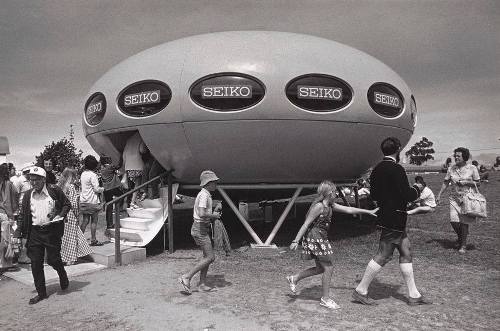
Update 100520
Though only incidental the two Futuros that were located outside Queen Elizabeth II Park in Christchurch, New Zealand during the 1974 British Commonwealth Games appear very briefly in the first episode of the children's TV show The Games Affair.
The Futuros appeared at 6:09 and 7:45; the embedded video below starts at the Futuros first appearance.
Update 041319
Our thanks to Paul McNeil who recently sent us the two scans below; they are from a 1974 Bank Of New Zealand newsletter and show the Futuro that was used as a banking office or "Space Bank" at the 1974 British Commonwealth Games in Christchurch, New Zealand.
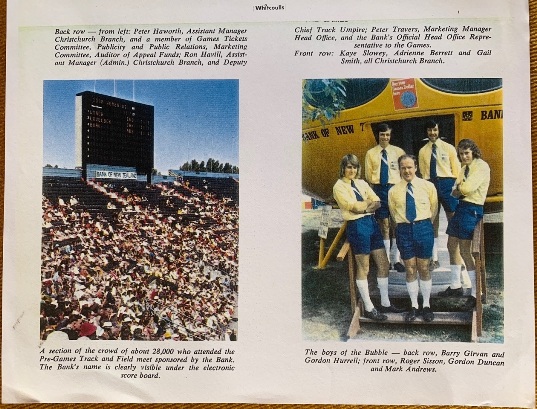
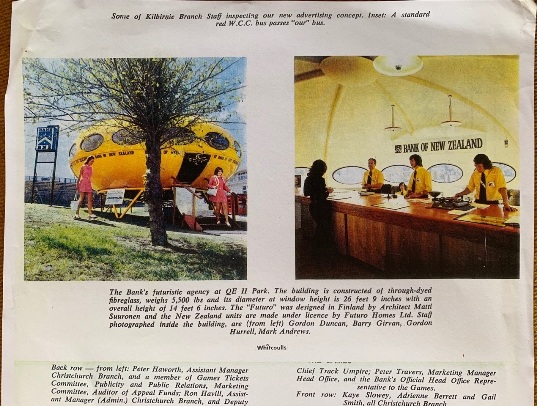
Update 020219
Graeme Farr recently sent us a link to a video hosted on Ziln.co.nz. The video contains aerial footage of the 1974 Commonwealth Games site and offers the only view we have come across of both of the Futuros that were at the games in a single frame. There does not seem to be a way to embed the video but the screenshot below shows the point in the flyover where both Futuros can be seen (about 1:05 into the video).
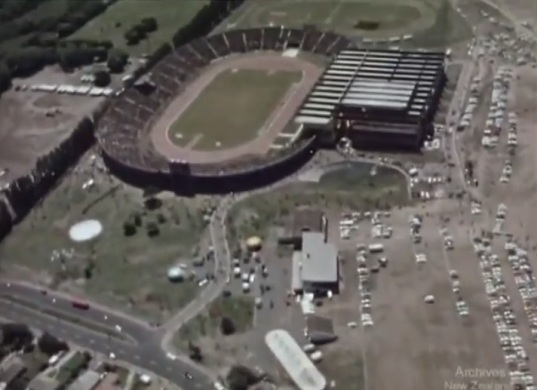
Original Information 100718
In 1974 the Bank Of New Zealand used one of the two Futuros seen at the 1974 British Commonwealth Games which ran from 012474 through 020274 as a branch office. The Futuros were located at the games main venue, Queen Elizabeth II Park in Christchurch, New Zealand.
Back in April 2014 Nick McQuoid (owner of three Futuros, two in Rangiora currently in the process of restoration and one disassembled and in storage in Invercargill) received some interesting photos and documents from the Bank Of New Zealand which he posted to Facebook here (Nick; as always thanks for sharing).
The two photos below show the Futuro used by the Bank Of New Zealand.
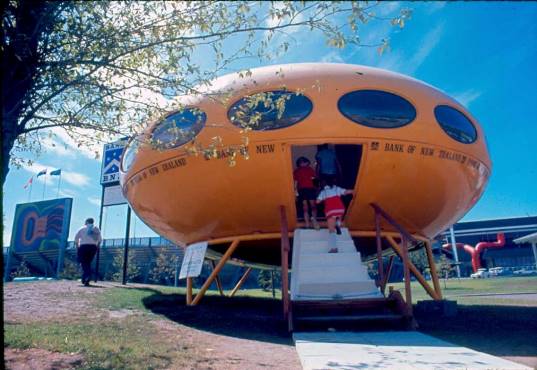
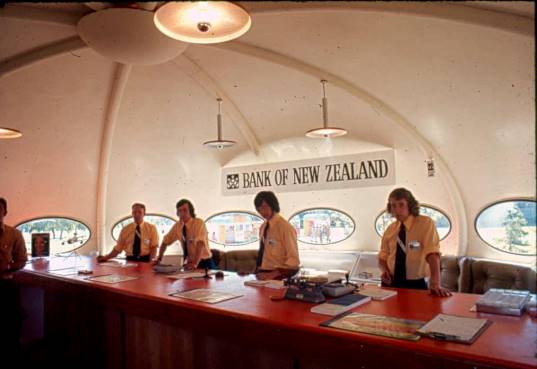
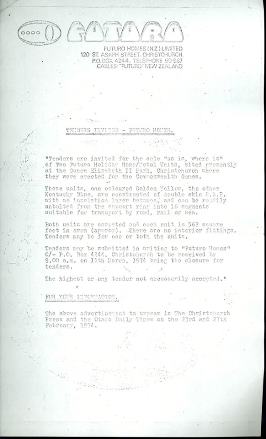 Once the games were over the Futuros were put up for sale. The document at left invites tenders for the two Futuros; one Golden Yellow (as seen in the photos) and the other Kentucky Blue.
Once the games were over the Futuros were put up for sale. The document at left invites tenders for the two Futuros; one Golden Yellow (as seen in the photos) and the other Kentucky Blue.
The document was issued by Futuro Homes (NZ) Limited and not by the Bank Of New Zealand. Purely conjecture but it to us seems very likely that the unit was loaned to, rather than purchased by, the Bank Of New Zealand. Given the high profile event at which they were located (and the short duration of that event) this would surely have been seen as a great marketing opportunity.
The remaining documents include a pricing sheet, a fact sheet and a list of general specifications. Finally there is a marketing brochure which, while having different text and being issued by a different company (the Futuro Corporation Pty. Ltd.), is essentially the same brochure as one that is included in the Brett Colquhoun Archive.
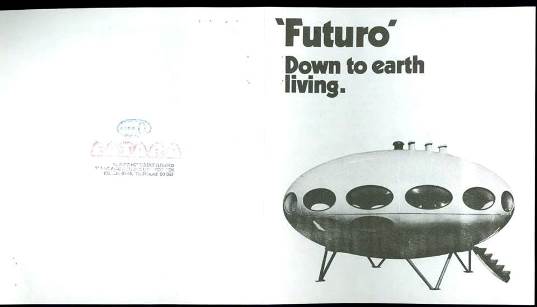
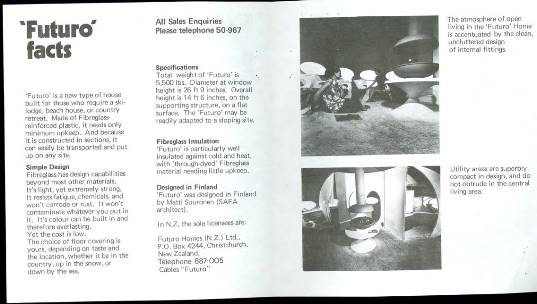
A post on the "50's 60's 70's & 80's Living in Christchurch" Facebook page gives us a look at both of the Futuros used at the 1974 Commonwealth Games; it included the two photos below. The first was posted by Lorina Adkins and the second by Warwick Burke.
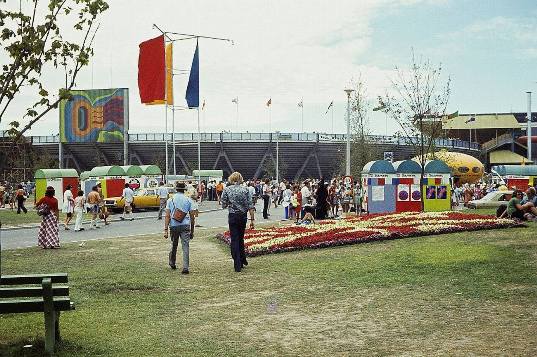
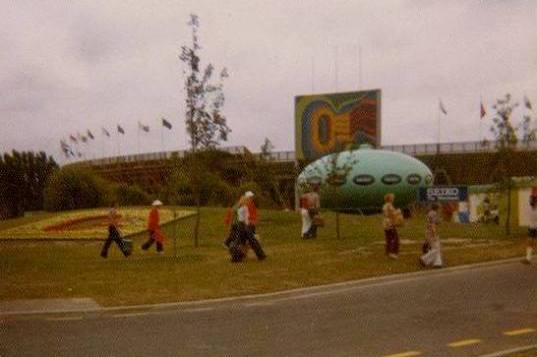
We came across this rather nice photo of one of the two Futuros that were located outside Queen Elizabeth II Park in Christchurch, New Zealand during the 1974 British Commonwealth Games recently. The photo was posted to Facebook 110220 by Neil Hennessy.

Update 100520
Though only incidental the two Futuros that were located outside Queen Elizabeth II Park in Christchurch, New Zealand during the 1974 British Commonwealth Games appear very briefly in the first episode of the children's TV show The Games Affair.
The Futuros appeared at 6:09 and 7:45; the embedded video below starts at the Futuros first appearance.
Update 041319
Our thanks to Paul McNeil who recently sent us the two scans below; they are from a 1974 Bank Of New Zealand newsletter and show the Futuro that was used as a banking office or "Space Bank" at the 1974 British Commonwealth Games in Christchurch, New Zealand.


Update 020219
Graeme Farr recently sent us a link to a video hosted on Ziln.co.nz. The video contains aerial footage of the 1974 Commonwealth Games site and offers the only view we have come across of both of the Futuros that were at the games in a single frame. There does not seem to be a way to embed the video but the screenshot below shows the point in the flyover where both Futuros can be seen (about 1:05 into the video).

Original Information 100718
In 1974 the Bank Of New Zealand used one of the two Futuros seen at the 1974 British Commonwealth Games which ran from 012474 through 020274 as a branch office. The Futuros were located at the games main venue, Queen Elizabeth II Park in Christchurch, New Zealand.
Back in April 2014 Nick McQuoid (owner of three Futuros, two in Rangiora currently in the process of restoration and one disassembled and in storage in Invercargill) received some interesting photos and documents from the Bank Of New Zealand which he posted to Facebook here (Nick; as always thanks for sharing).
The two photos below show the Futuro used by the Bank Of New Zealand.


 Once the games were over the Futuros were put up for sale. The document at left invites tenders for the two Futuros; one Golden Yellow (as seen in the photos) and the other Kentucky Blue.
Once the games were over the Futuros were put up for sale. The document at left invites tenders for the two Futuros; one Golden Yellow (as seen in the photos) and the other Kentucky Blue.
The document was issued by Futuro Homes (NZ) Limited and not by the Bank Of New Zealand. Purely conjecture but it to us seems very likely that the unit was loaned to, rather than purchased by, the Bank Of New Zealand. Given the high profile event at which they were located (and the short duration of that event) this would surely have been seen as a great marketing opportunity.
The remaining documents include a pricing sheet, a fact sheet and a list of general specifications. Finally there is a marketing brochure which, while having different text and being issued by a different company (the Futuro Corporation Pty. Ltd.), is essentially the same brochure as one that is included in the Brett Colquhoun Archive.


A post on the "50's 60's 70's & 80's Living in Christchurch" Facebook page gives us a look at both of the Futuros used at the 1974 Commonwealth Games; it included the two photos below. The first was posted by Lorina Adkins and the second by Warwick Burke.


Update 072719
When this section of the website was added back in 2018 we concluded that, based on all the evidence, the most likely scenario regarding the New Jersey "Space Banks" was that two, and only two, Futuros were used as "Space Banks"; one with the standard 16 windows and one with 8 that were located as follows:
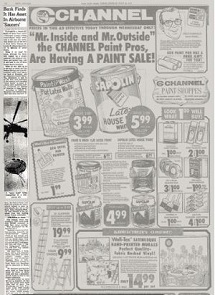 That said we recently received an email from Karen Murphy with a link to an article from the New York Times 072973 issue that suggests there may have been another "Space Bank" location.
That said we recently received an email from Karen Murphy with a link to an article from the New York Times 072973 issue that suggests there may have been another "Space Bank" location.
We do not have a digital copy of the article, not worth signing up to get past the "pay wall" for a single article, but the article is accessible as a "transcription" here.
The article reports that City Federal Savings and Loan were planning to install a "Space Bank" at the Brick Town Shopping Plaza in Brick Township, New Jersey "sometime in the next few weeks".
A bank spokesman is quoted as saying "that the space bank in Tom's River would be flown to Brick Town".
We have never before heard mention of a Futuro in that location and based on previous evidence if such a move did actually take place it did so much later than the report suggests since the "Space Bank" in Tom's River can be placed there until at least 050874 based on an Asbury Park Evening Press article from that same date.
So, not in any way definite, but it is possible the Futuro that started out at Woodbridge Mall made an additional stop between Tom's River and Morey's Pier. If you have any information regarding whether Brick Town did actually have a Futuro for while please let us know.
Original Information 100718
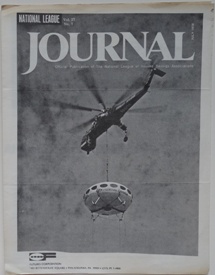 In the USA several Futuros manufactured by the Futuro Corporation Of Philadelphia served as branches of City Federal Savings and Loan in the New Jersey area in the early 1970's. How many were used in this way cannot be categorically stated as there are, as is often the case with the early history of Futuro, confusing and conflicting records and documents.
In the USA several Futuros manufactured by the Futuro Corporation Of Philadelphia served as branches of City Federal Savings and Loan in the New Jersey area in the early 1970's. How many were used in this way cannot be categorically stated as there are, as is often the case with the early history of Futuro, confusing and conflicting records and documents.
What is clear is that there were two types of Futuro used in this way (the standard type with 16 windows around the circumference of the unit and a modified version with 8 windows) and that, though there may have been more, there was at minimum one of each variant used as a "Space Bank".
The first appearance of a "Space Bank" of which we are aware was a standard Futuro (16 windows around the circumference of the unit) that was installed at the Woodbridge Mall in Woodbridge Township, New Jersey on 060272 as reported in an article from the 052872 Sunday edition of the Asbury Park Press (below left) which reports that:
"The 22nd City Federal Savings & Loan Association office is scheduled to be lowered from the sky by a helicopter on to its new site at the Woodbridge Mall. The air delivery and opening are scheduled for Friday. The structure called a "space-bank" will be shaped like a flying saucer."
The article goes on to report that the office would house two teller positions and 12 employees during two shifts expected to accommodate more that 400 depositors and visitors daily.
The event was also reported in the 052672 issue of the Somerville, New Jersey based Courier News (below right).
The Futuro was delivered on schedule on 052872 by a Sikorsky S-64 Skycrane. The following are examples of photos and media that document this event; unless indicated otherwise they are from our collection of "Things Futuro":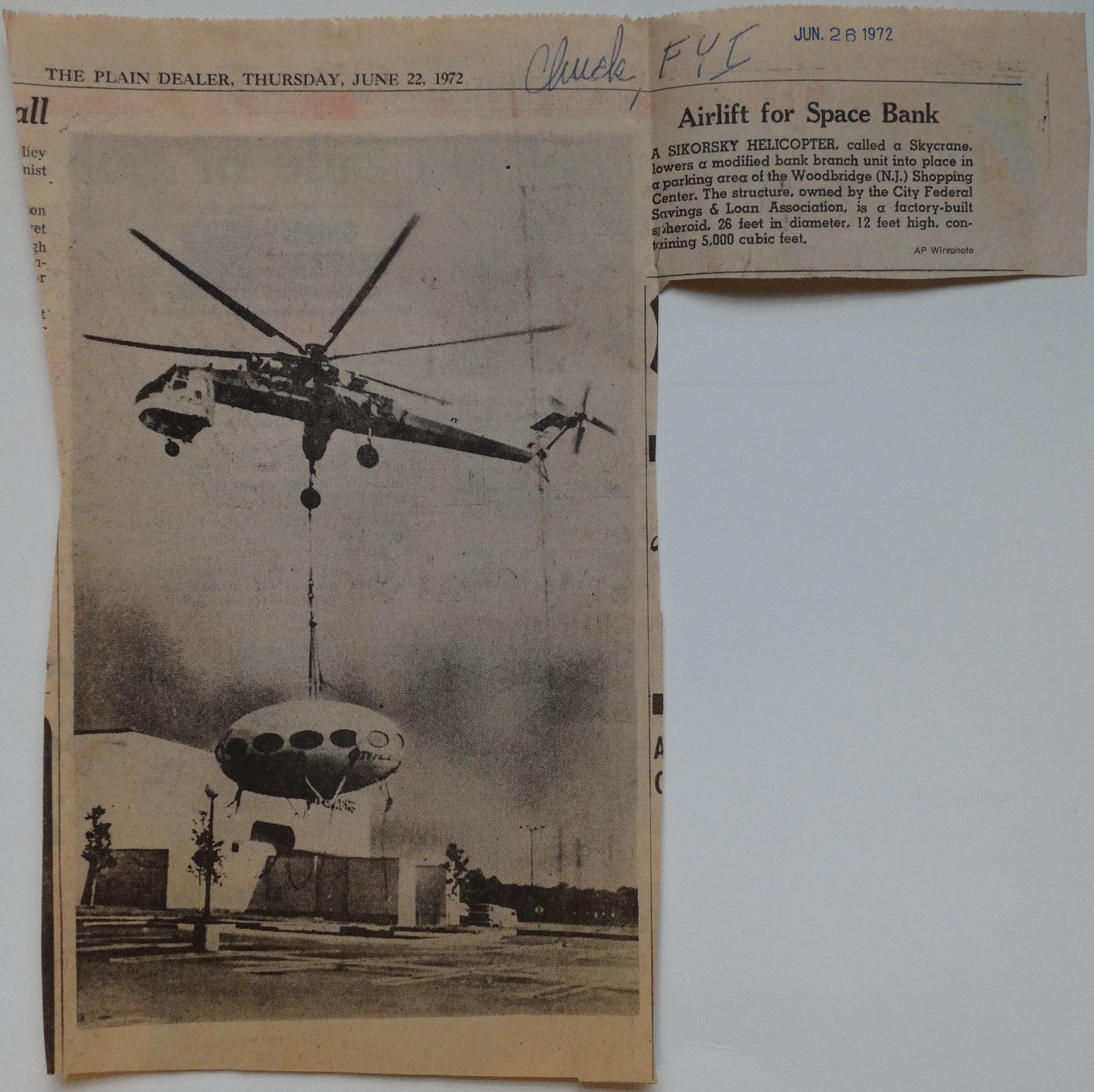
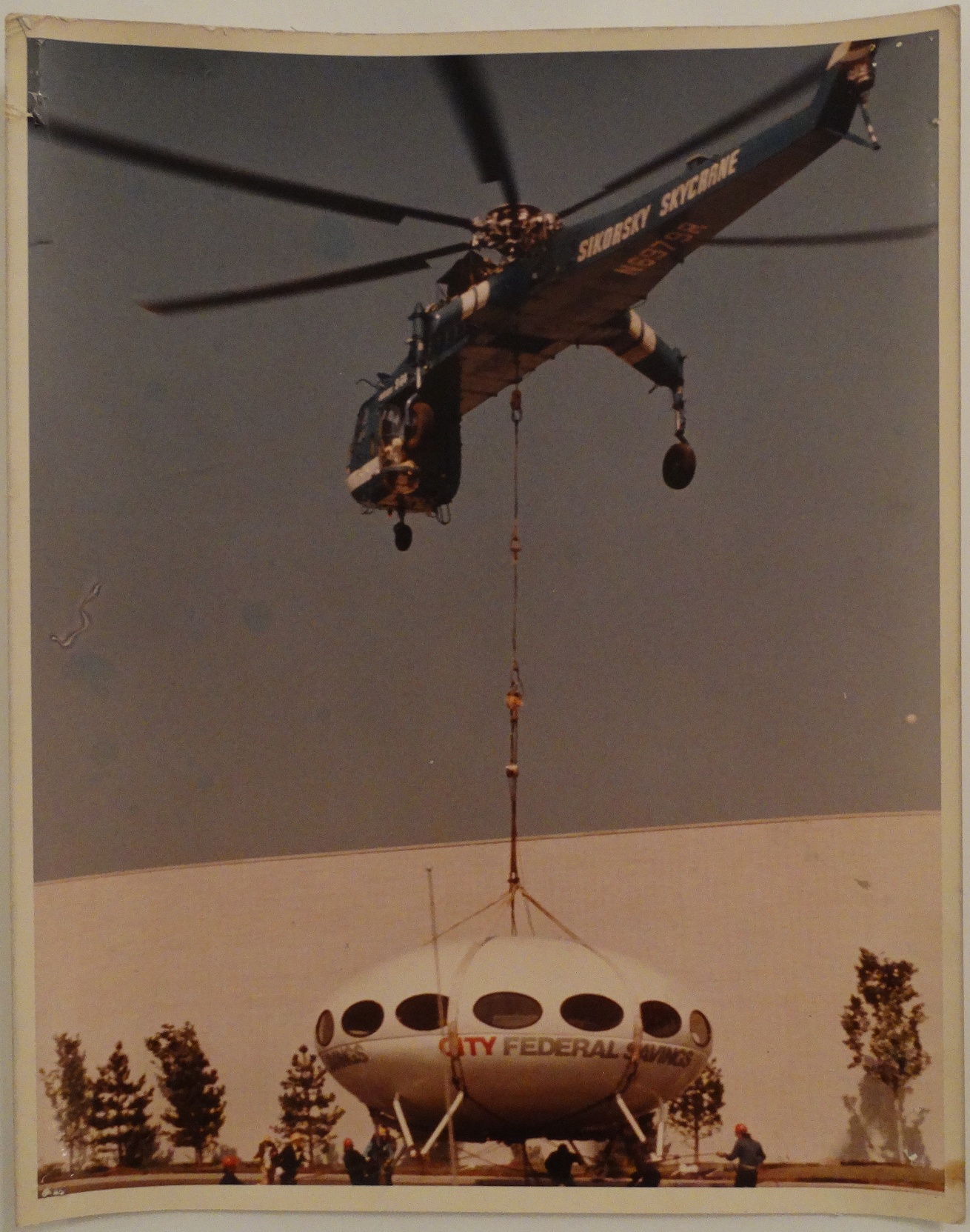
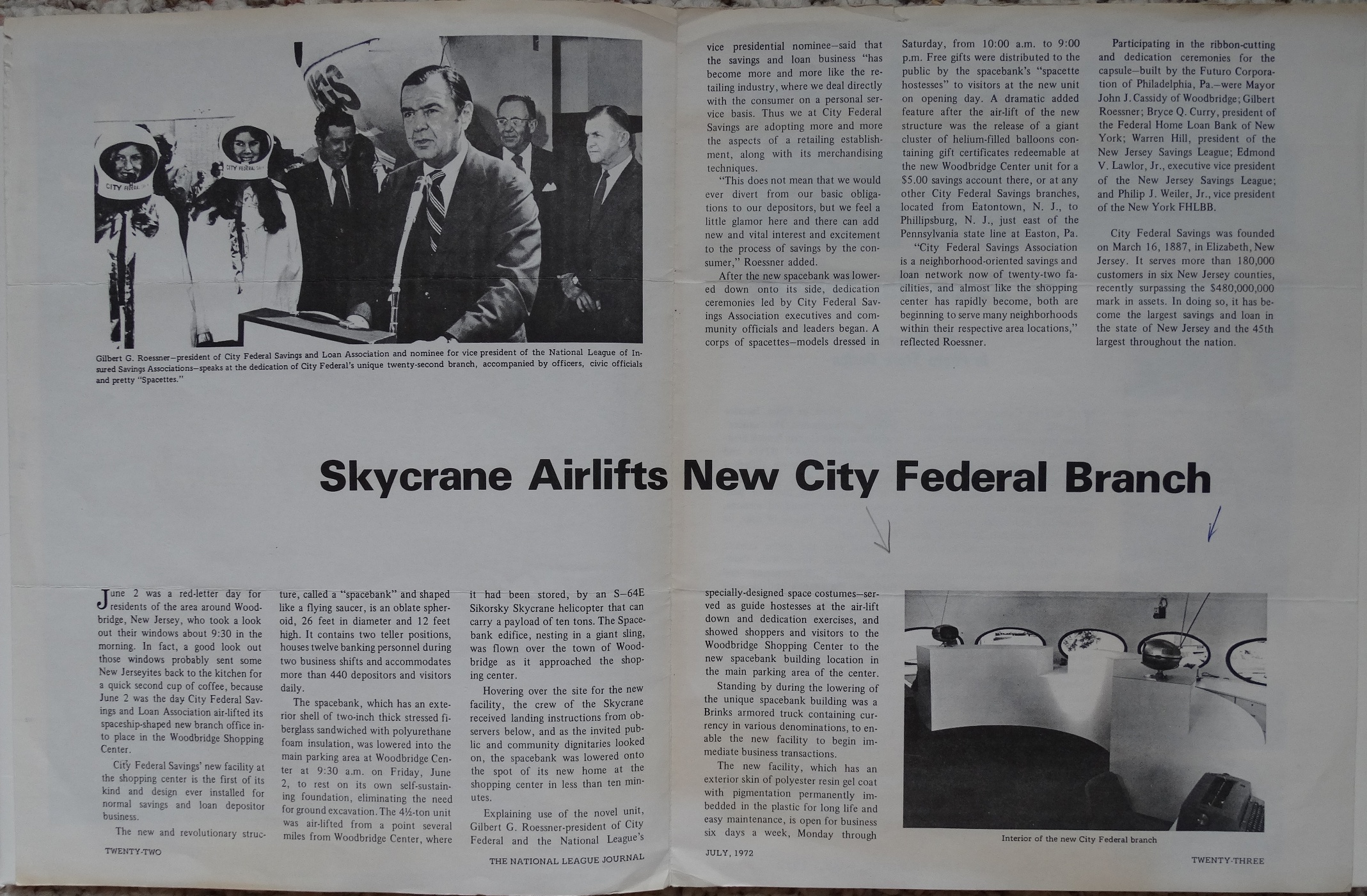
The National League Journal article tells us that the Futuro was delivered to Woodbridge Mall around 9:30 am after having been flown from a storage facility a few miles away. It describes the structure as a "Space Bank"; the name Futuro is never actually used in the article.
Following the "touch down" of the "Space Bank" a corps of "spacettes", models in specially designed space costumes, served as guides and hostesses and handed out free gifts and a Brinks armored truck that had been standing by during the Futuros arrival was unloaded so the bank could open almost immediately.
The Charles Cleworth Futuro House Archive includes a print and negatives of the interior photo seen in the National League Journal article.
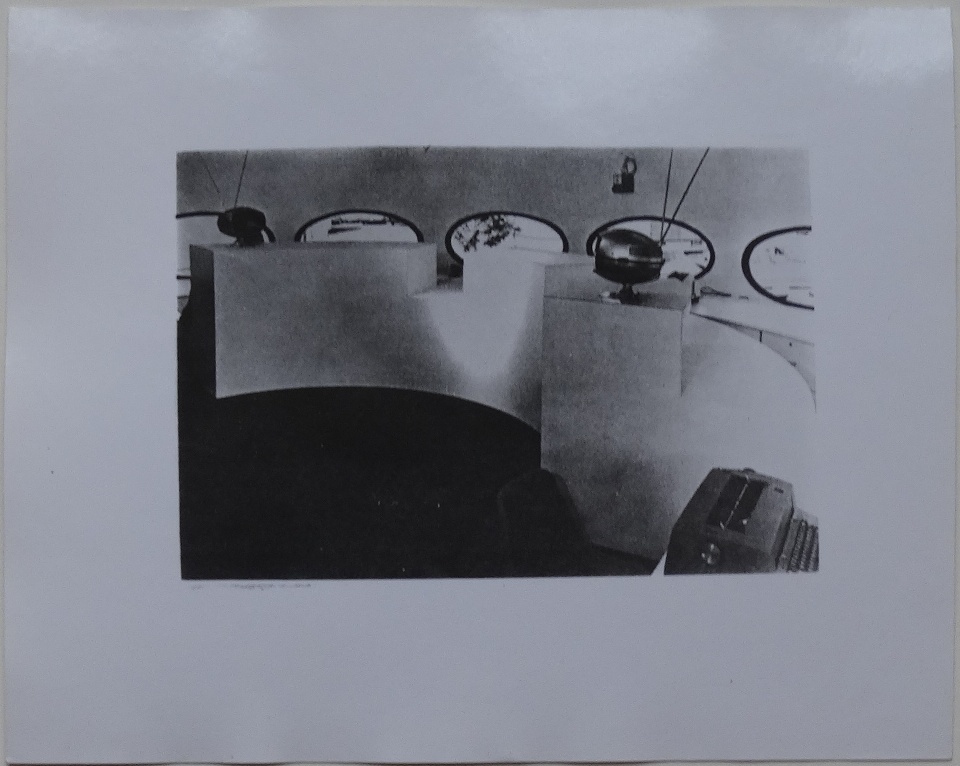
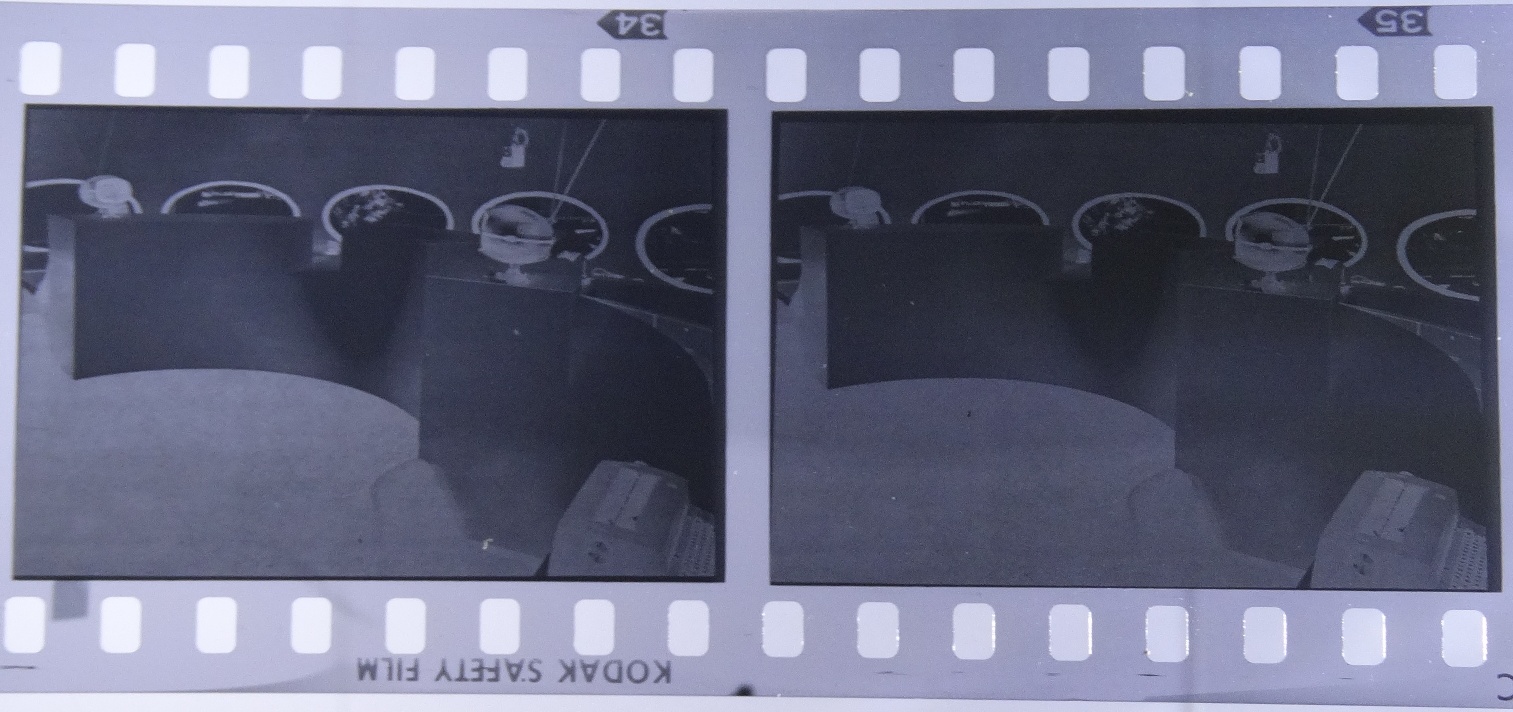
Another view of the interior of the "Space Bank" and the "spacettes", this time accompanied by an "alien" can be seen in the first of the two 35 mm slides below from our collection of "Things Futuro". Also from the same photo shoot second 35 mm slide. Though there is no commentary or description accompanying the slide the gentleman on the radio is Gilbert G. Roessner (based on the National League Journal article referenced above which included a picture of Roessner), the president of City Federal Savings & Loan, who was presumably "directing" operations.
This Futuro then made a second "landing" at a mall in Tom's River, New Jersey 111172 though it is unclear whether it was transferred from one site to the other on the same day or whether it was removed from one mall, stored at a second location, and then installed at the second mall later.
It was however at Woodbridge Mall at least through some part of October 1972 as evidenced by this this set of 35 mm slides dated October 1972 (the slides are numbered 1 through 33 with 8 of them missing from this collection - many of the slides are almost identical).
The custom entrance structure seen in the slides above attached to the Futuro is interesting and it, or a similar structure, was used on both the standard configuration Futuro and the 8 window variant Futuro when they served as a "Space Banks".
Chronologically the next reported "Space Bank" installation took place five or so months later. The 110272 and 110872 issues of the Asbury Park Evening Press carried an advertisement for the arrival of a "Space Bank" at the Bradlee's Shop-Rite Shopping Center in Tom's River on 111172. The ad indicates that the unit "was the same "Space Bank" that made banking history when it was flown in by helicopter to Woodbridge, New Jersey.
The advertisement for the arrival of the Futuro in Tom's River also includes a reference to the event ending on December 9th.
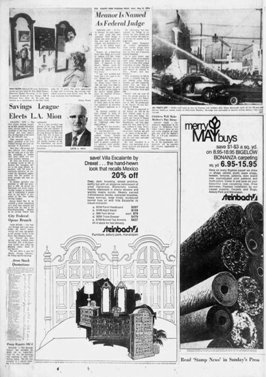 It is not clear from the advertisement whether the intention was that the "Space Bank" would be removed from the location at that time but a short article (at left) in the 050874 issue of the Asbury Park Evening Press informs us that whatever the initial intention was at the time the Futuro in fact remained in Tom's River long after December 1972.
It is not clear from the advertisement whether the intention was that the "Space Bank" would be removed from the location at that time but a short article (at left) in the 050874 issue of the Asbury Park Evening Press informs us that whatever the initial intention was at the time the Futuro in fact remained in Tom's River long after December 1972.
The article states in part that:
"City Federal has been serving area residents since November 1972 at the Spacebank facility also within the shopping center, Route 37 and main St."
That places the Futuro in Tom's River from 111172 through at least 050874, and with its prior visit to Woodbridge Mall this first "Space Bank" can be accounted for from 060272 through 050874. This Futuro went on to spend time as an an amusement park attraction at Morey's Pier in Wildwood, NJ before making its final stop in Seaside Heights, New Jersey where it served as the town's Visitor Information Center. It was subsequently demolished. More information can be found in the Seaside Heights section of the "Lost Souls" page.
An advertisement in the 032673 and 032973 issues of the Asbury Park Evening Press announced the arrival of the second City Federal Savings and Loan "Space Bank". It was to be installed 033173 at the Lakewood Shopping Plaza in Lakewood Township, New Jersey. Based on all of the information and records we have been able to uncover to date this was the third "Space Bank" installation.
We have seen various reports and articles suggesting the Woodbridge Futuro and the Lakewood Futuro were one and the same but it is clear they were not; the first, based on the information above, was located in Tom's River at the time and the advertisement for the 033173 arrival of the Futuro at the Lakewood Shopping Center confirms this when it states:
"This is Spacebank II, City Federal's Spacebank I made banking history and was shown on network television when it was flown by helicopter to Woodbridge, New Jersey. It was later flown 60 miles south over the Atlantic Ocean to Toms River, where it now serves as our temporary office"."
The final proof, if more were needed, that this was a different Futuro is that, despite the newspaper advertising using photography of a standard Futuro, the unit installed in Lakewood was actually the variant with only 8 windows around the circumference of the unit unlike the "standard" unit installed in Woodbridge and later moved to Tom's River.
This can clearly be seen in the Mika Taanila directed video for Ektroverde's 1998 track "Inauguration of a Spacebank" (below).
The video captures the Lakewood event and is included as one of the "extras" on the DVD of the documentary "Futuro: A New Stance for Tomorrow" where the footage is attributed to Samuel Samson and noted as being captured in Lakewood, New Jersey in 1972; we suspect the date is in error and that the correct date is 1973 based on the various newspaper articles and advertisements.
Though we have not come across any photographs of the "Space Bank" at Lakewood post its installation the video footage indicates that it was configured with the same custom entry way that was used in Woodbridge. Though not installed at the time the entry way can be seen "ready and waiting" at 1:26 into the video as seen in this screen shot.
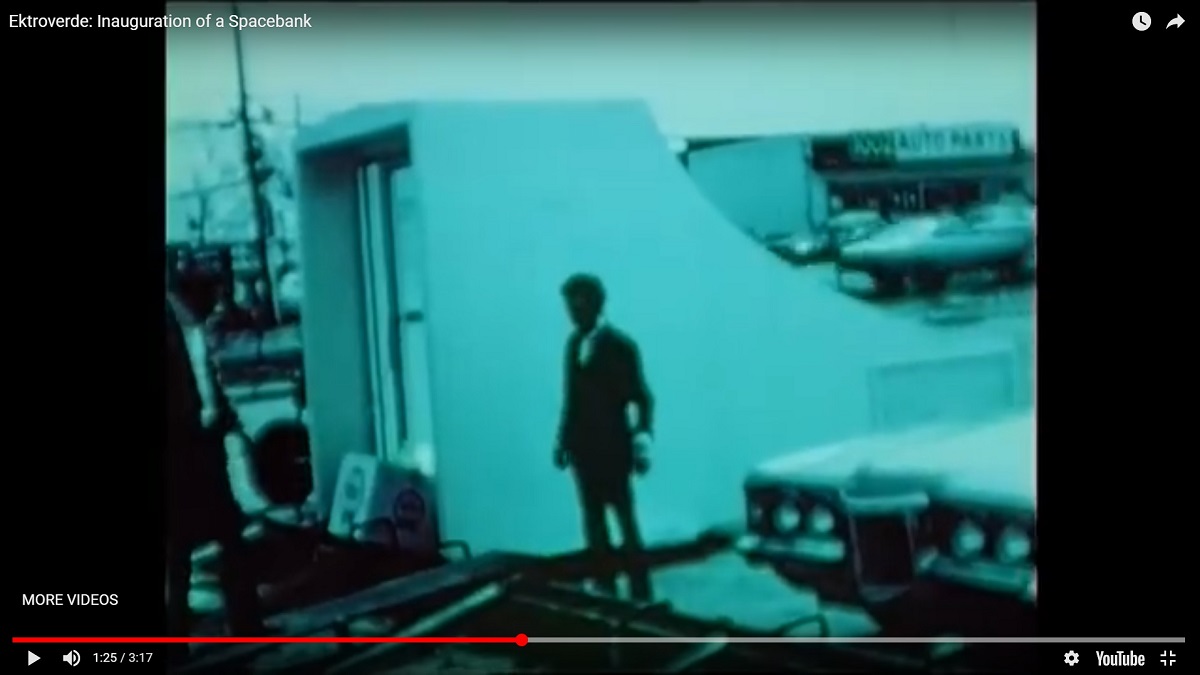
This "Space Bank" was also publicized after installation in a different advertisement carried in the same publication, the Asbury Park Evening Press, on 040273, 041673 and 042373.
To date we have not been able to determine how long this Futuro remained in Lakewood or where it went after Lakewood though it is entirely possible it was moved to Willingboro in 1973 (and if that were the case then this would be the Willingboro Futuro).
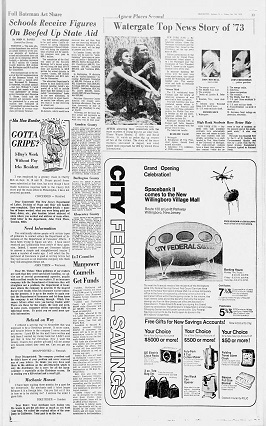 And, speaking of Willingboro, a "Space Bank" installation featuring a Futuro variant with only 8 windows took place 121473. The 122873 issue of the Courier Post (left) carried an advertisement for the "Space Bank"; that advertisement included a photograph of a standard Futuro with 16 windows even though the Futuro installed at the Village Mall was in fact an 8 window variant.
And, speaking of Willingboro, a "Space Bank" installation featuring a Futuro variant with only 8 windows took place 121473. The 122873 issue of the Courier Post (left) carried an advertisement for the "Space Bank"; that advertisement included a photograph of a standard Futuro with 16 windows even though the Futuro installed at the Village Mall was in fact an 8 window variant.
Dennis McDonald, Staff Photographer at the Burlington County Times kindly sent us a great photograph (below) of that event some time ago. The photo was included in a Burlington County Times article that is no longer available online and showed a Futuro being lowered to the ground in the parking lot of the Village Mall in Willingboro Township, New Jersey on 121473.
The "Space Bank" was installed while the mall was still under construction and was the first business to begin operations at the site.
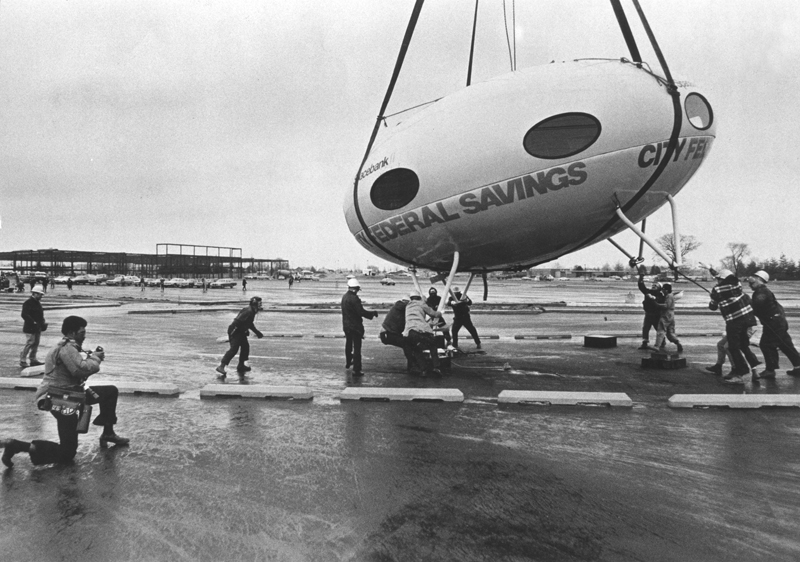
The arrival of the "Space Bank" in Willingboro was also recorded in the 2002 Josh Bernstein book Willingboro: Images of America.
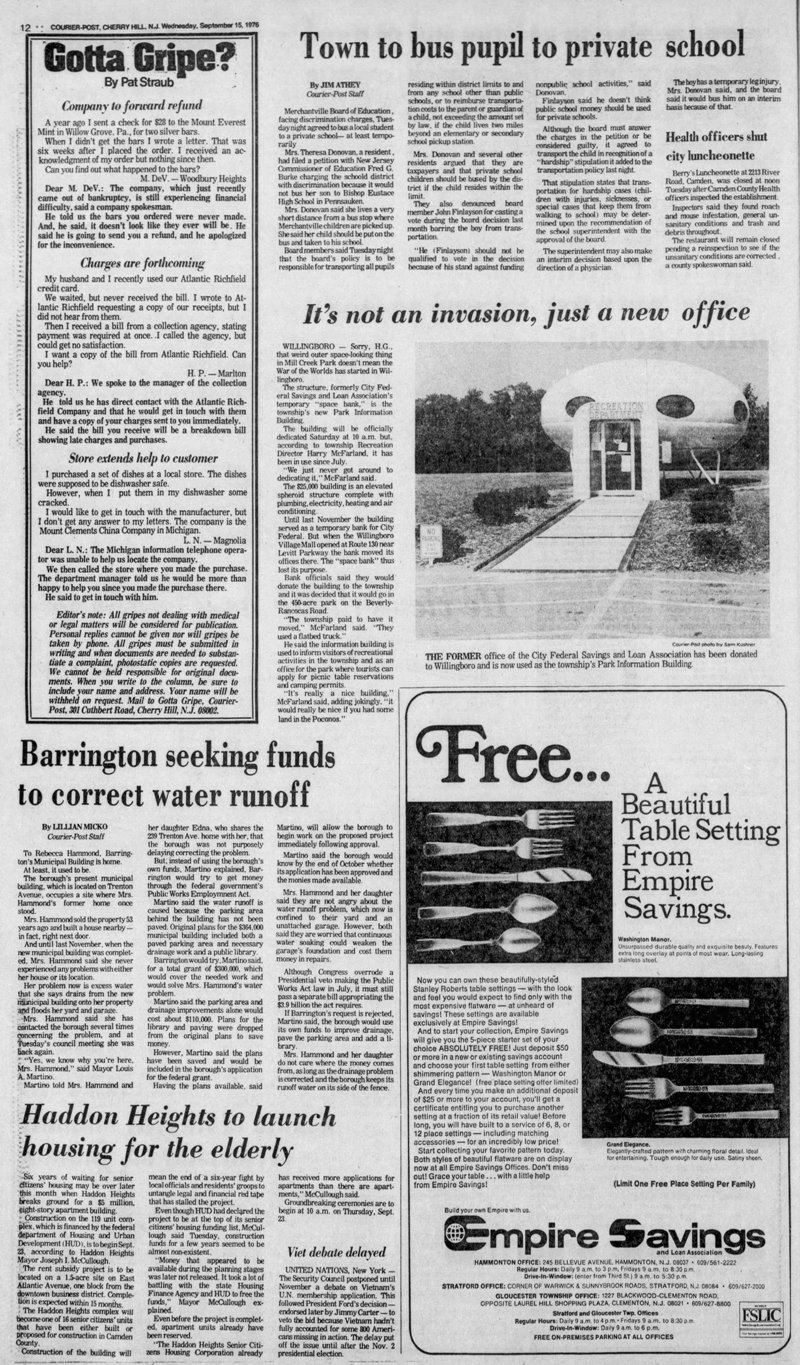 The "Space Bank" remained at the Village Mall until November 1975 when it was relocated and repurposed according to the 091576 issue of the Cherry Hill, NJ publication the Courier Post which carried an article on the Willingboro Futuro titled "It's not an invasion, just a new office" (left).
The "Space Bank" remained at the Village Mall until November 1975 when it was relocated and repurposed according to the 091576 issue of the Cherry Hill, NJ publication the Courier Post which carried an article on the Willingboro Futuro titled "It's not an invasion, just a new office" (left).
The article, which was accompanied by a single photograph, reported on the official "dedication" of the structure as Willingboro Township's Parks Information Office. The structure had actually been moved (by flatbed truck) to Mill Creek Park in Willingboro many months prior in November 1975 but local authorities had not previously got around to scheduling the dedication. The Futuro remains in Mill Creek Park to this day.
Interestingly, and as an example of the confusion sometimes evident in reports on the history of the Futuro, the 110504 issue of the same publication almost thirty years later suggested that the move to Mill Creek Park was facilitated by a helicopter.
According to an article in the Winter 2013 issue of Cincinnati radio station ClassX's publication Live Magazine the "Space Banks" were the brainchild of Leonard Fruchter, president of the Futuro Corporation of Philadelphia, the primary licensee for Futuro in the US. The article features an interview with Covington Futuro owner Rob Detzel who recounts that:
"Fruchter was in the banking business with City Federal savings, and had been trying to find a way to get the banks he was placing in shopping centers open quicker ... He saw the Futuro and acquired the rights to construct them by agreeing to buy the mold and ... the material needed to build eight units.
He had built four and had placed two (Woodbridge Mall and Willingboro Shopping Center) ... he only had two left, because he burned up the other four; and he sells me a yellow one,"
The article and Rob's recollections are interesting for several reasons; first it suggests that there were two Futuros used as "Space Banks" which aligns with the documented history above. Second there is the reference to Fruchter destroying four of the Futuros; that seems a little unlikely since many more Futuros were manufactured (and still exist to this day in the US) but you never know. And finally (though not included in the extract above) Detzel recounts the history of his Futuro. It has often been suggested that the Covington Futuro had also served as a "Space Bank" based on the 8 window configuration but the history of the Futuro according to its owner never involved a period where it served as a "Space Bank".
So, based on all of the above, what does the history of the New Jersey "Space Banks" look like? It seems to us the most likely scenario is that there were two, and only two, Futuros used as "Space Banks"; one with the standard 16 windows and one with 8 that were located as follows:
The series of slides (above) showing the "Space Bank" installed at Woodbridge and the "snip" from the video footage of the arrival of the Lakewood unit (above) both show a structure with smooth sides. Contrast that with the photo below of an 8 window variant Futuro being used as a "Space Bank" which also shows a custom entry structure. Note that in this case the structure has a kind of "slatted" structure very different from that seen in the other examples. The photo is from our copy of the book Mika Taanila: Human Engineering.
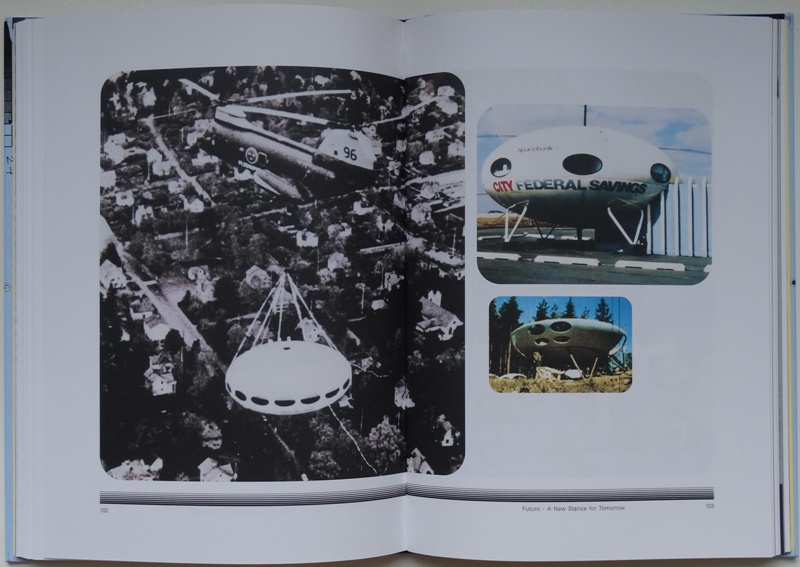
In the end, as is often repeated throughout these pages, the early history of Futuro is filled with contradictory and confusing information and often "evolves" over time as new snippets of information are uncovered. The history of the New Jersey "Space Banks" as recounted above is as accurate as current information allows. Will it change in the future? Perhaps; and if so this section of our website will of course be updated accordingly.
In a Google search the other day we came across an old Press Release from 2006 titled "Ein Ufo als Haus - das ASV-Futuro-Home" or, translated, "A UFO as a house - the ASV Futuro Home" on the website openpr.de that referenced a plan to start manufacturing Futuro Houses.
In part the release (according to Google Translate) reads:
"Star designer Aisslinger, Professor of Design at the Karlsruhe University of Design, is planning a series production of the Futuro-Home 35 years after the ASV prototype. The original stands in front of the main Vlotho factory of the international component manufacturer for modern pipeline construction and shows the way. Contact: ASV Stübbe GmbH & Co."
At the time of writing (August 2018) this is obviously old "news" but nonetheless it interesting to note that a top flight designer and a large manufacturing company had considered a plan to manufacture Futuros; every other plan we have come across to do anything similar was less structured and commonly involved a crowd funding effort to get it off the ground. To our knowledge the Aisslinger/ASV plans never came to fruition; we are not aware of any Futuros manufactured post the original manufacturing period of the late 1970's and 1980's. The Vlotho Futuro was of course later moved to Witten and then to Munich.
Update 031315
Unfortunately, like Susan O'Hara's earlier project, this project failed to reach its funding goals.
Original information 020715
Not too long ago a Kickstarter Project by Susan O'Hara aimed at getting "new" Futuros into production unfortunately failed to meet its funding goals.
Kickstarter is a "crowd funding" website where users can create projects and seek "pledges" of funding to allow those projects to proceed. Kickstarter is "all or nothing" in terms of its funding. Those who wish to do so "pledge" to the project. If by the "due date" the funding goals of the project are reached all "pledges" are "called in" and the project moves forward. If on the other hand the funding goals are not fully met "pledges" are not "called in" and the project, at least as far as Kickstarter is concerned, does not proceed.
Simon Balmford has just created a Kickstarter project titled simply "Futuro House".
The pledges being sought are actually "deposits" on Futuros that would be manufactured. Each of the "pledges" would be for a $5000 deposit against a Futuro. Total costs range from $39000 for a kit to $59000 for a fully assembled unit (these would be "introductory and temporary prices - long term pricing would be $59000 and $99000 respectively). Costs do not include delivery.
There are also a couple of "unique" options, each will be available as a single unit and will not be manufactured after the initial launch. These options are a pink Futuro Kit at $44000, an assembled pink Futuro at $64000 and an assembled chrome Futuro at $89000.
You can access Simon's project on Kickstarter here. For us the costs are prohibitive and we are not sure we would personally have the same excitement at owning a "new" Futuro House as we would at achieving a "dream" and owning an original unit but that is just us. We wish Simon success with his project.
DISCLAIMER: TheFuturoHouse.com is not involved in or associated with this project and makes no representations to that effect. Nothing in this article should be taken as encouraging pledges or making any guarantees as to the success of the project.
When this section of the website was added back in 2018 we concluded that, based on all the evidence, the most likely scenario regarding the New Jersey "Space Banks" was that two, and only two, Futuros were used as "Space Banks"; one with the standard 16 windows and one with 8 that were located as follows:
- Standard Futuro
- Installed at Woodbridge Mall (Woodbridge) 060272
- Installed at Bradlee's Shop-Rite Shopping Center (Tom's River) 111172
- In Tom's River until at least 050874
- Installed at Morey's Pier Amusement Park dates unknown
- Installed in Seaside Heights, New Jersey; likely to mid 1980's
- Demolished; likely mid 1980's
- 8 Window Variant
- Installed at Lakewood Shopping Plaza (Lakewood) 033173
- Installed at The Village Mall (Willingboro) 121473
- Installed at Mill Creek Park (Willingboro) November 1975 to date
 That said we recently received an email from Karen Murphy with a link to an article from the New York Times 072973 issue that suggests there may have been another "Space Bank" location.
That said we recently received an email from Karen Murphy with a link to an article from the New York Times 072973 issue that suggests there may have been another "Space Bank" location.
We do not have a digital copy of the article, not worth signing up to get past the "pay wall" for a single article, but the article is accessible as a "transcription" here.
The article reports that City Federal Savings and Loan were planning to install a "Space Bank" at the Brick Town Shopping Plaza in Brick Township, New Jersey "sometime in the next few weeks".
A bank spokesman is quoted as saying "that the space bank in Tom's River would be flown to Brick Town".
We have never before heard mention of a Futuro in that location and based on previous evidence if such a move did actually take place it did so much later than the report suggests since the "Space Bank" in Tom's River can be placed there until at least 050874 based on an Asbury Park Evening Press article from that same date.
So, not in any way definite, but it is possible the Futuro that started out at Woodbridge Mall made an additional stop between Tom's River and Morey's Pier. If you have any information regarding whether Brick Town did actually have a Futuro for while please let us know.
Original Information 100718
 In the USA several Futuros manufactured by the Futuro Corporation Of Philadelphia served as branches of City Federal Savings and Loan in the New Jersey area in the early 1970's. How many were used in this way cannot be categorically stated as there are, as is often the case with the early history of Futuro, confusing and conflicting records and documents.
In the USA several Futuros manufactured by the Futuro Corporation Of Philadelphia served as branches of City Federal Savings and Loan in the New Jersey area in the early 1970's. How many were used in this way cannot be categorically stated as there are, as is often the case with the early history of Futuro, confusing and conflicting records and documents.
What is clear is that there were two types of Futuro used in this way (the standard type with 16 windows around the circumference of the unit and a modified version with 8 windows) and that, though there may have been more, there was at minimum one of each variant used as a "Space Bank".
The first appearance of a "Space Bank" of which we are aware was a standard Futuro (16 windows around the circumference of the unit) that was installed at the Woodbridge Mall in Woodbridge Township, New Jersey on 060272 as reported in an article from the 052872 Sunday edition of the Asbury Park Press (below left) which reports that:
"The 22nd City Federal Savings & Loan Association office is scheduled to be lowered from the sky by a helicopter on to its new site at the Woodbridge Mall. The air delivery and opening are scheduled for Friday. The structure called a "space-bank" will be shaped like a flying saucer."
The article goes on to report that the office would house two teller positions and 12 employees during two shifts expected to accommodate more that 400 depositors and visitors daily.
The event was also reported in the 052672 issue of the Somerville, New Jersey based Courier News (below right).
The Futuro was delivered on schedule on 052872 by a Sikorsky S-64 Skycrane. The following are examples of photos and media that document this event; unless indicated otherwise they are from our collection of "Things Futuro":
- A pair of 35 mm slides showing the airborne Futuro shortly before "touch down".
- An article from the 062272 issue of The Plain Dealer (The Cleworth Archive).
- An 8" by 10" color photo showing the Futuro "touching down".
- The July 1972 issue of the National League Journal (The Cleworth Archive).



The National League Journal article tells us that the Futuro was delivered to Woodbridge Mall around 9:30 am after having been flown from a storage facility a few miles away. It describes the structure as a "Space Bank"; the name Futuro is never actually used in the article.
Following the "touch down" of the "Space Bank" a corps of "spacettes", models in specially designed space costumes, served as guides and hostesses and handed out free gifts and a Brinks armored truck that had been standing by during the Futuros arrival was unloaded so the bank could open almost immediately.
The Charles Cleworth Futuro House Archive includes a print and negatives of the interior photo seen in the National League Journal article.


Another view of the interior of the "Space Bank" and the "spacettes", this time accompanied by an "alien" can be seen in the first of the two 35 mm slides below from our collection of "Things Futuro". Also from the same photo shoot second 35 mm slide. Though there is no commentary or description accompanying the slide the gentleman on the radio is Gilbert G. Roessner (based on the National League Journal article referenced above which included a picture of Roessner), the president of City Federal Savings & Loan, who was presumably "directing" operations.
This Futuro then made a second "landing" at a mall in Tom's River, New Jersey 111172 though it is unclear whether it was transferred from one site to the other on the same day or whether it was removed from one mall, stored at a second location, and then installed at the second mall later.
It was however at Woodbridge Mall at least through some part of October 1972 as evidenced by this this set of 35 mm slides dated October 1972 (the slides are numbered 1 through 33 with 8 of them missing from this collection - many of the slides are almost identical).
The custom entrance structure seen in the slides above attached to the Futuro is interesting and it, or a similar structure, was used on both the standard configuration Futuro and the 8 window variant Futuro when they served as a "Space Banks".
Chronologically the next reported "Space Bank" installation took place five or so months later. The 110272 and 110872 issues of the Asbury Park Evening Press carried an advertisement for the arrival of a "Space Bank" at the Bradlee's Shop-Rite Shopping Center in Tom's River on 111172. The ad indicates that the unit "was the same "Space Bank" that made banking history when it was flown in by helicopter to Woodbridge, New Jersey.
The advertisement for the arrival of the Futuro in Tom's River also includes a reference to the event ending on December 9th.
 It is not clear from the advertisement whether the intention was that the "Space Bank" would be removed from the location at that time but a short article (at left) in the 050874 issue of the Asbury Park Evening Press informs us that whatever the initial intention was at the time the Futuro in fact remained in Tom's River long after December 1972.
It is not clear from the advertisement whether the intention was that the "Space Bank" would be removed from the location at that time but a short article (at left) in the 050874 issue of the Asbury Park Evening Press informs us that whatever the initial intention was at the time the Futuro in fact remained in Tom's River long after December 1972.
The article states in part that:
"City Federal has been serving area residents since November 1972 at the Spacebank facility also within the shopping center, Route 37 and main St."
That places the Futuro in Tom's River from 111172 through at least 050874, and with its prior visit to Woodbridge Mall this first "Space Bank" can be accounted for from 060272 through 050874. This Futuro went on to spend time as an an amusement park attraction at Morey's Pier in Wildwood, NJ before making its final stop in Seaside Heights, New Jersey where it served as the town's Visitor Information Center. It was subsequently demolished. More information can be found in the Seaside Heights section of the "Lost Souls" page.
An advertisement in the 032673 and 032973 issues of the Asbury Park Evening Press announced the arrival of the second City Federal Savings and Loan "Space Bank". It was to be installed 033173 at the Lakewood Shopping Plaza in Lakewood Township, New Jersey. Based on all of the information and records we have been able to uncover to date this was the third "Space Bank" installation.
We have seen various reports and articles suggesting the Woodbridge Futuro and the Lakewood Futuro were one and the same but it is clear they were not; the first, based on the information above, was located in Tom's River at the time and the advertisement for the 033173 arrival of the Futuro at the Lakewood Shopping Center confirms this when it states:
"This is Spacebank II, City Federal's Spacebank I made banking history and was shown on network television when it was flown by helicopter to Woodbridge, New Jersey. It was later flown 60 miles south over the Atlantic Ocean to Toms River, where it now serves as our temporary office"."
The final proof, if more were needed, that this was a different Futuro is that, despite the newspaper advertising using photography of a standard Futuro, the unit installed in Lakewood was actually the variant with only 8 windows around the circumference of the unit unlike the "standard" unit installed in Woodbridge and later moved to Tom's River.
This can clearly be seen in the Mika Taanila directed video for Ektroverde's 1998 track "Inauguration of a Spacebank" (below).
The video captures the Lakewood event and is included as one of the "extras" on the DVD of the documentary "Futuro: A New Stance for Tomorrow" where the footage is attributed to Samuel Samson and noted as being captured in Lakewood, New Jersey in 1972; we suspect the date is in error and that the correct date is 1973 based on the various newspaper articles and advertisements.

This "Space Bank" was also publicized after installation in a different advertisement carried in the same publication, the Asbury Park Evening Press, on 040273, 041673 and 042373.
To date we have not been able to determine how long this Futuro remained in Lakewood or where it went after Lakewood though it is entirely possible it was moved to Willingboro in 1973 (and if that were the case then this would be the Willingboro Futuro).
 And, speaking of Willingboro, a "Space Bank" installation featuring a Futuro variant with only 8 windows took place 121473. The 122873 issue of the Courier Post (left) carried an advertisement for the "Space Bank"; that advertisement included a photograph of a standard Futuro with 16 windows even though the Futuro installed at the Village Mall was in fact an 8 window variant.
And, speaking of Willingboro, a "Space Bank" installation featuring a Futuro variant with only 8 windows took place 121473. The 122873 issue of the Courier Post (left) carried an advertisement for the "Space Bank"; that advertisement included a photograph of a standard Futuro with 16 windows even though the Futuro installed at the Village Mall was in fact an 8 window variant.
Dennis McDonald, Staff Photographer at the Burlington County Times kindly sent us a great photograph (below) of that event some time ago. The photo was included in a Burlington County Times article that is no longer available online and showed a Futuro being lowered to the ground in the parking lot of the Village Mall in Willingboro Township, New Jersey on 121473.
The "Space Bank" was installed while the mall was still under construction and was the first business to begin operations at the site.

The arrival of the "Space Bank" in Willingboro was also recorded in the 2002 Josh Bernstein book Willingboro: Images of America.
 The "Space Bank" remained at the Village Mall until November 1975 when it was relocated and repurposed according to the 091576 issue of the Cherry Hill, NJ publication the Courier Post which carried an article on the Willingboro Futuro titled "It's not an invasion, just a new office" (left).
The "Space Bank" remained at the Village Mall until November 1975 when it was relocated and repurposed according to the 091576 issue of the Cherry Hill, NJ publication the Courier Post which carried an article on the Willingboro Futuro titled "It's not an invasion, just a new office" (left).
The article, which was accompanied by a single photograph, reported on the official "dedication" of the structure as Willingboro Township's Parks Information Office. The structure had actually been moved (by flatbed truck) to Mill Creek Park in Willingboro many months prior in November 1975 but local authorities had not previously got around to scheduling the dedication. The Futuro remains in Mill Creek Park to this day.
Interestingly, and as an example of the confusion sometimes evident in reports on the history of the Futuro, the 110504 issue of the same publication almost thirty years later suggested that the move to Mill Creek Park was facilitated by a helicopter.
According to an article in the Winter 2013 issue of Cincinnati radio station ClassX's publication Live Magazine the "Space Banks" were the brainchild of Leonard Fruchter, president of the Futuro Corporation of Philadelphia, the primary licensee for Futuro in the US. The article features an interview with Covington Futuro owner Rob Detzel who recounts that:
"Fruchter was in the banking business with City Federal savings, and had been trying to find a way to get the banks he was placing in shopping centers open quicker ... He saw the Futuro and acquired the rights to construct them by agreeing to buy the mold and ... the material needed to build eight units.
He had built four and had placed two (Woodbridge Mall and Willingboro Shopping Center) ... he only had two left, because he burned up the other four; and he sells me a yellow one,"
The article and Rob's recollections are interesting for several reasons; first it suggests that there were two Futuros used as "Space Banks" which aligns with the documented history above. Second there is the reference to Fruchter destroying four of the Futuros; that seems a little unlikely since many more Futuros were manufactured (and still exist to this day in the US) but you never know. And finally (though not included in the extract above) Detzel recounts the history of his Futuro. It has often been suggested that the Covington Futuro had also served as a "Space Bank" based on the 8 window configuration but the history of the Futuro according to its owner never involved a period where it served as a "Space Bank".
So, based on all of the above, what does the history of the New Jersey "Space Banks" look like? It seems to us the most likely scenario is that there were two, and only two, Futuros used as "Space Banks"; one with the standard 16 windows and one with 8 that were located as follows:
- Standard Futuro
- Installed at Woodbridge Mall (Woodbridge) 060272
- Installed at Bradlee's Shop-Rite Shopping Center (Tom's River) 111172
- In Tom's River until at least 050874
- Installed at Morey's Pier Amusement Park dates unknown
- Installed in Seaside Heights, New Jersey; likely to mid 1980's
- Demolished; likely mid 1980's
- 8 Window Variant
- Installed at Lakewood Shopping Plaza (Lakewood) 033173
- Installed at The Village Mall (Willingboro) 121473
- Installed at Mill Creek Park (Willingboro) November 1975 to date
The series of slides (above) showing the "Space Bank" installed at Woodbridge and the "snip" from the video footage of the arrival of the Lakewood unit (above) both show a structure with smooth sides. Contrast that with the photo below of an 8 window variant Futuro being used as a "Space Bank" which also shows a custom entry structure. Note that in this case the structure has a kind of "slatted" structure very different from that seen in the other examples. The photo is from our copy of the book Mika Taanila: Human Engineering.

In the end, as is often repeated throughout these pages, the early history of Futuro is filled with contradictory and confusing information and often "evolves" over time as new snippets of information are uncovered. The history of the New Jersey "Space Banks" as recounted above is as accurate as current information allows. Will it change in the future? Perhaps; and if so this section of our website will of course be updated accordingly.
From time to time we have seen various discussions pop up on the web here and there around the subject of remanufacturing Futuro Houses. So far nothing seems to have come of any of these but projects surface from time to time that potentially offer that possibility. Additionally the owner of the original Finnish Futuro moulds offered them for sale, and failing a sale, offered to manufacture new Futuro Houses using those original moulds. On the US front there was a project started aiming to "reverse engineer" the Futuro House to produce new moulds from which Futuro Houses could be manufactured.
One of the things that makes the world the fascinating place is its diversity; we all hold different opinions and have different beliefs. We are, and always have been, in two minds about the idea of Futuro's being manufactured again. We love the Futuro and its history and our pursuit of that history is clearly a passion of ours; these web pages speak to that being the case.
That said we are not sure a "new" Futuro holds the same interest for us. In a way it is akin to the classic car enthusiast who cannot find an original model and so builds a new one. For collectors the wish is always for things to be "all original" and that is kind of how we feel about Futuro. We passionately want to own a Futuro (probably will never have the money but there is nothing wrong with a dream or two) but what we want is an original. Perhaps a "new" unit manufactured using original moulds would satisfy us - perhaps - and we are almost certain that a totally new one would not be for us even if we could afford it.
Here we document projects and ideas around reviving the manufacturing of Futuros. Will anything ever come of one of these projects? Time will tell; and who knows what decision we would reach on the day an affordable (for us) Futuro House, "new" or original, was placed in front of us.
Latest Update(s)/Addition(s) ***
One of the things that makes the world the fascinating place is its diversity; we all hold different opinions and have different beliefs. We are, and always have been, in two minds about the idea of Futuro's being manufactured again. We love the Futuro and its history and our pursuit of that history is clearly a passion of ours; these web pages speak to that being the case.
That said we are not sure a "new" Futuro holds the same interest for us. In a way it is akin to the classic car enthusiast who cannot find an original model and so builds a new one. For collectors the wish is always for things to be "all original" and that is kind of how we feel about Futuro. We passionately want to own a Futuro (probably will never have the money but there is nothing wrong with a dream or two) but what we want is an original. Perhaps a "new" unit manufactured using original moulds would satisfy us - perhaps - and we are almost certain that a totally new one would not be for us even if we could afford it.
Here we document projects and ideas around reviving the manufacturing of Futuros. Will anything ever come of one of these projects? Time will tell; and who knows what decision we would reach on the day an affordable (for us) Futuro House, "new" or original, was placed in front of us.
Latest Update(s)/Addition(s) ***
In a Google search the other day we came across an old Press Release from 2006 titled "Ein Ufo als Haus - das ASV-Futuro-Home" or, translated, "A UFO as a house - the ASV Futuro Home" on the website openpr.de that referenced a plan to start manufacturing Futuro Houses.
In part the release (according to Google Translate) reads:
"Star designer Aisslinger, Professor of Design at the Karlsruhe University of Design, is planning a series production of the Futuro-Home 35 years after the ASV prototype. The original stands in front of the main Vlotho factory of the international component manufacturer for modern pipeline construction and shows the way. Contact: ASV Stübbe GmbH & Co."
At the time of writing (August 2018) this is obviously old "news" but nonetheless it interesting to note that a top flight designer and a large manufacturing company had considered a plan to manufacture Futuros; every other plan we have come across to do anything similar was less structured and commonly involved a crowd funding effort to get it off the ground. To our knowledge the Aisslinger/ASV plans never came to fruition; we are not aware of any Futuros manufactured post the original manufacturing period of the late 1970's and 1980's. The Vlotho Futuro was of course later moved to Witten and then to Munich.
Update 031315
Unfortunately, like Susan O'Hara's earlier project, this project failed to reach its funding goals.
Original information 020715
Not too long ago a Kickstarter Project by Susan O'Hara aimed at getting "new" Futuros into production unfortunately failed to meet its funding goals.
Kickstarter is a "crowd funding" website where users can create projects and seek "pledges" of funding to allow those projects to proceed. Kickstarter is "all or nothing" in terms of its funding. Those who wish to do so "pledge" to the project. If by the "due date" the funding goals of the project are reached all "pledges" are "called in" and the project moves forward. If on the other hand the funding goals are not fully met "pledges" are not "called in" and the project, at least as far as Kickstarter is concerned, does not proceed.
Simon Balmford has just created a Kickstarter project titled simply "Futuro House".
The pledges being sought are actually "deposits" on Futuros that would be manufactured. Each of the "pledges" would be for a $5000 deposit against a Futuro. Total costs range from $39000 for a kit to $59000 for a fully assembled unit (these would be "introductory and temporary prices - long term pricing would be $59000 and $99000 respectively). Costs do not include delivery.
There are also a couple of "unique" options, each will be available as a single unit and will not be manufactured after the initial launch. These options are a pink Futuro Kit at $44000, an assembled pink Futuro at $64000 and an assembled chrome Futuro at $89000.
You can access Simon's project on Kickstarter here. For us the costs are prohibitive and we are not sure we would personally have the same excitement at owning a "new" Futuro House as we would at achieving a "dream" and owning an original unit but that is just us. We wish Simon success with his project.
DISCLAIMER: TheFuturoHouse.com is not involved in or associated with this project and makes no representations to that effect. Nothing in this article should be taken as encouraging pledges or making any guarantees as to the success of the project.
Update 020715
We actually forgot to update this section at the time with the information that, unfortunately, this project failed to reach its funding goals.
Update 092014
Our congratulations to Susan; the "Kickstarter" project has been approved and is now active. You can access the "Kickstarter" project here.
In this video, which can also be found on the "Kickstarter" project page, Susan clearly explains the goals of the project and the "incentives" available at various pledge levels.
It seems that we are still finding ourselves somewhat conflicted about the project; torn between a wish to get involved and a feeling that this is a reproduction and not, for us, the same thing as the original. Of course the intention is not that it be the same as the original; it is the "new" Futuro House and we do seem to be finally coming around to recognizing that - we shall see.
Check back here or check back on the "kickstarter" project page to see how things are going and, if you are so inclined, now would be the time to make a pledge.
DISCLAIMER: TheFuturoHouse.com is not involved in or associated with this project and makes no representations to that effect. Nothing in this article should be taken as encouraging pledges or making any guarantees as to the success of the project.
Original information 090714
Susan O'Hara is a certified Product Manager by the Association of International Product Marketing and Management (AIPMM), a Project Management Institute (PMI) certified Project Management Professional (PMP) and over the course of a successful career she has acquired experience in creating project schedules, resource contracting, product management, and cost estimation. Susan is now turning her formidable array of skills to a project aimed at "reverse engineering" the Futuro House and then manufacturing "new" Futuro Houses.
Funding for the project is being sought through "Kickstarter", a kind of "crowd funding" platform for serious and well planned creative business projects. "Kickstarter" works on the basis of "pledges" against a "Kickstarter" project. Those who pledge are not actually charged until the project reaches full funding. If a project does reach full funding (the website indicates 44% of projects do) those who pledged are charged at that time. Susan is planning on offering incentives to those who pledge at various levels. These range from digital images and vinyl stickers for low level pledges to a "new" Futuro House for $30,000 for those who pledge $9,999 or more; based on everything we have seen over the years the resulting $40,000 for a Futuro House would be a bargain.
The project is currently in the planning/draft stages. The "Kickstarter" campaign is currently in "draft" status and being reviewed but you can access that draft here. Additionally Susan is using "Elance" to seek architects for the project (the link appears to require a login).
Check it out and if it interests you why not pledge? We will continue our own internal arguments about whether we actually like this idea or not but regardless of that we wish Susan success in her project (and may the good Lord have mercy on us trying to keep up with the Futuro House if another generation of them starts to hit the streets!).
DISCLAIMER: TheFuturoHouse.com is not involved in or associated with this project and makes no representations to that effect. Nothing in this article should be taken as encouraging pledges or making any guarantees as to the success of the project.
Update 083122
Though we never got any formal confirmation as far as we know in the 8 years since these molds were made available for purchase nothing happened with them. Until now that is!
Though they have not sold they are currently on display at the WeeGee Exhibition Center as a part of Dora Budor's installation The Storage Machine which will run 080322-040223.
More information on this can be found here.
Original Information 090714
Once the bottom dropped out of the market for Futuro the finances of Polykem, the original manufacturer went into decline and ultimately the company came close to bankruptcy. Around that time Matti Suuronen became the owner of Polykem and he subsequently sold the company to Exel Oyj, a company founded by Yrjö Aho in 1960 (Wikipedia) and now known as Exel Composites. Along with everything else Polykem owned Exel acquired the original Futuro House moulds.
In 1998 Marko Home visited the Exel Factory in Mäntyharju and saw that the moulds were being stored outside and, while still intact, had suffered some damage from the elements over the years. The moulds are now in the possession of Jyrki Aho, son of the late Yrjö Aho who founded Exel.
Jyrki is offering the moulds for sale foe 150,000 USD ex works in Finland. In addition Jyrki is offering "new" Futuro Houses manufactured using these original moulds starting at 200,000 USD ex works. Delivery time would be negotiated at the time of contract. In both cases if you are interested you should contact Mr. Jyrki Aho, e-mail: jyrki.aho@kwikgroup.com.
The photographs below show three of the moulds; from top to bottom they are the moulds for a body section, stairs and the central table.
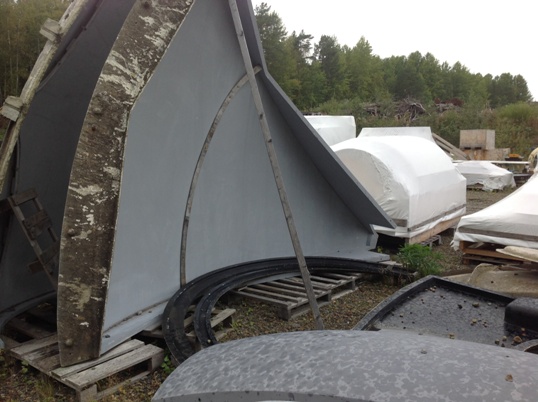
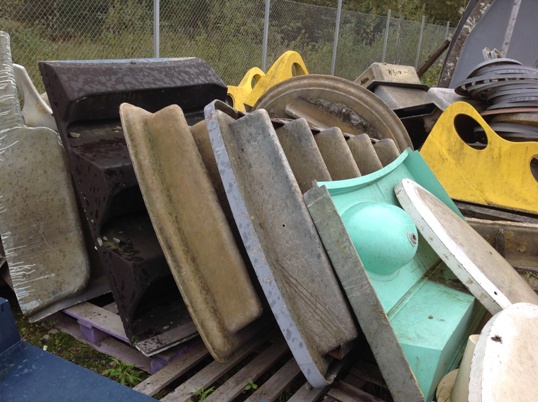
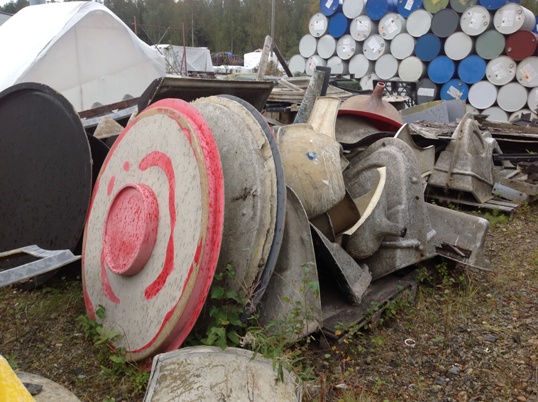
DISCLAIMER: The FuturoHouse.com is neither the owner nor the seller of these moulds or of Futuro Houses manufactured using these moulds and makes no representations to that effect. While there are clear photographs which give an idea of the condition of the moulds we are talking a significant amount of money here so, if you are interested, contact Jyrki and do your own due diligence in terms of authenticity, completeness and condition.
Update 100116
The 050672 issue of the Asbury Park Evening Press included an article that reported on the transport of a Futuro II-X from the manufacturing plant in Pleasantville, NJ to Harvey Cedars, NJ in May 1972.
The article reports that the Futuro was moved by road and delivered to Cox Ave, Harvey Cedars on 050572. The journey was somewhat challenging and at one point the truck had to be rerouted due to the lack of about three inches necessary to clear an overpass.
The article does also provide a little additional information not specific to the "transport" reporting that the unit contained two bedrooms and two bathrooms, was fully furnished and air conditioned and cost about $25000. A spokesman for the Futuro Corporation indicated that it complied with all relevant building regulations and added that there were many such homes along the eastern seaboard and as far west as California. Not too sure about how accurate that particular assertion was.
The article was accompanied by the two photos below. Notable in the photo to the left is the "straight" section of the Futuro that was added between two regular halves to provide the "stretch". It is captioned:
"House movers put their backs into the job as they strain to help sign on Garden State Parkway entrance out of way of flying saucer-shaped house being transported from Pleasantville to Harvey Cedars."
The second photo is a rather nice head on shot of the truck which illustrates very well how much wider the Futuro was than the truck that was carrying it.
Update 022115
Jenny Ruess unearthed another, much clearer, photo of this Futuro. Jenny's original photograph can be found on Facebook where she comments:
"here's another (photo) of the spaceship house in Harvey Cedars - this is more than likely a picture I took with my instamatic in '81/'82 from our deck stairs.
If there was previously any doubt this photo, for us at least, definitively confirms that this was indeed an example of the Futuro II-X.
An additional "straight" section of the unit can clearly be seen inserted between two hemispherical sections. The Futuro II-X plans indicate that the additional section was 10' in length. The photo shows that the additional section included two windows per side and this would correlate with the length of the section being 10' (a standard Futuro has a radius of approximately 13' which gives a circumference of just over 80'; with 16 windows that is 2 windows per 10' which is exactly what is seen in the "straight" section in this photo).
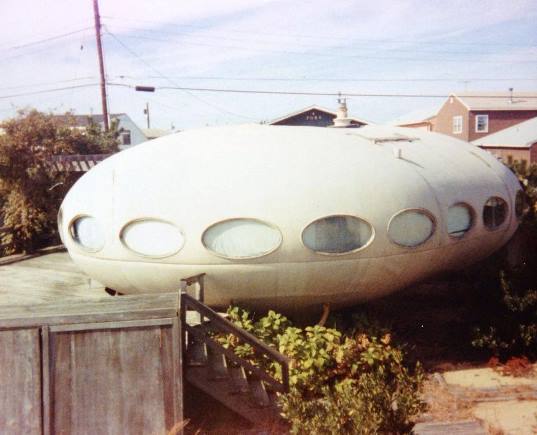
Original Information 021515
One of the most interesting discoveries we made going through The Charles Cleworth Futuro House Archive (an archive of historical documents and other Futuro related items donated to TheFuturoHouse.com to be catalogued and preserved) was the two architectural drawings of the Futuro II-X seen below. The Futuro II-X was, for want of a better phrase, a "stretched" Futuro with the longer dimension being 36'. There was no evidence in the archive of such a Futuro ever actually being manufactured nor for that matter had we ever come across any such evidence elsewhere; that is - until now!
Doug Easterly contacted us recently and pointed us to a couple of photographs posted to Facebook by Vickie Ruess. Our thanks to Doug for contacting us and to Vickie for kindly allowing us to display her photos here. The original photos on Facebook can be found here and here.
We were immediately very interested in the photos because they were of a Futuro located at 3 Cox Ave, Harvey Cedars, New Jersey which was a Futuro location we had not come across before. Based on the comments on the Facebook posts it appears that the Futuro was probably there from the early 70's through the early 80's and, while there is a comment suggesting it was removed, it appears that the majority recollection is that it was demolished.
The first photo is unremarkable but then we had to do a "double take" on the second. The Futuro as seen in the second photograph is, unless there is some something extremely bizarre going on with the photograph, quite simply not round and thus completely unlike any other Futuro we have ever seen.
That said what it does look like is the Futuro II-X seen in the plans; the number of windows appears to be about right (it is a little hard to be absolutely certain given the angle of the shot and the curvature of the Futuro at either end) and the general size and shape, at least to us, appears to match.
The Futuro II-X plans were found in a New Dimensions Of Delaware Inc. marketing package; that company was a reseller of Futuros manufactured by the Futuro Corporation Of Philadelphia and, based on these photos, we have to conclude that the Philadelphia company did actually manufacture at least one of the "stretched" Futuro II-X models. Unfortunately it also seems that the unit was subsequently demolished. But - if there was one then perhaps there were more!
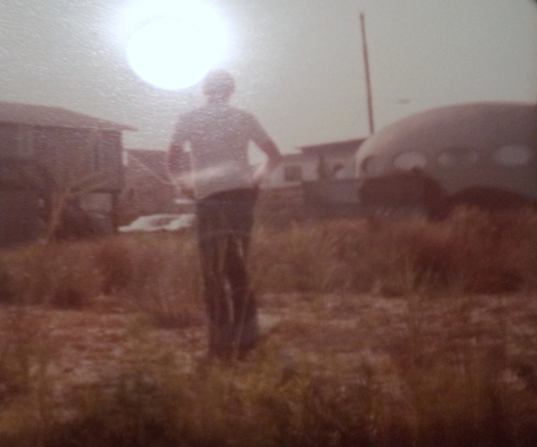
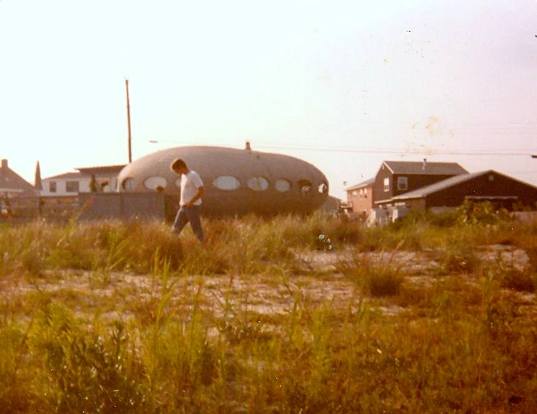
Update 020219
Graeme Farr recently sent us a link to a video hosted on Ziln.co.nz. The video contains aerial footage of the 1974 Commonwealth Games site and offers the only view we have come across of both of the Futuros that were at the games in a single frame. There does not seem to be a way to embed the video but the screenshot below shows the point in the flyover where both Futuros can be seen (about 1:05 into the video).

Update 101417
These three plans/drawings were shared with us recently by Benjamin (thank you). They indicate they were created by Futuro Homes (NZ) Limited which, based on the Designscape article referenced below, was a company associated with Futuro Enterprises (Christchurch) Limited.
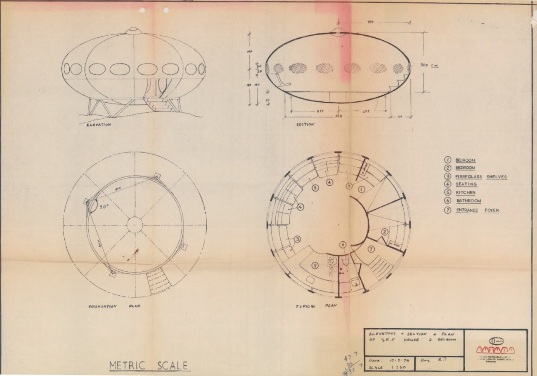
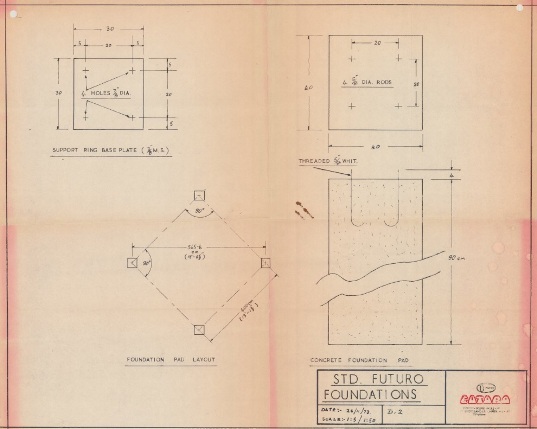
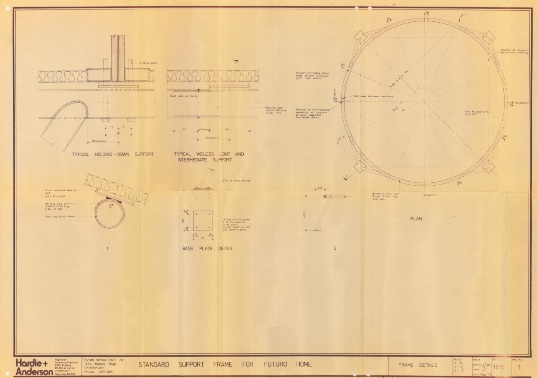
Update 091016
Jason Ray recently sent us a link to a post on the "50's 60's 70's & 80's Living in Christchurch" Facebook page that included the two photos below; thanks Jason. The first was posted by Lorina Adkins and the second by Warwick Burke.
The photos show the first two Futuros manufactured, according to Issue #86 (1976) of the publication Designscape, by Futuro Enterprises (Christchurch) Ltd. (though they are more commonly attributed to Futuro Homes (New Zealand) Ltd).
One of the Futuros was used as a bank branch by the Bank Of New Zealand at the 1974 British Commonwealth Games which ran from 012474 through 020274; the second served as a disply unit. They were located at the games main venue, Queen Elizabeth II Park in Christchurch, New Zealand.


Update 122415
Spacebug recently sent us some higher res images of the Designscape article (thanks Spacebug). In addition these new images were color though only the photo below was actually in color in the article.
The color of this Futuro though is interesting, orange, which means either the theory below that this was the first of the two Huntsbury Futuros is incorrect or that the color of this Futuro was changed at some point.
The hi-res images of the article can be accessed here and here
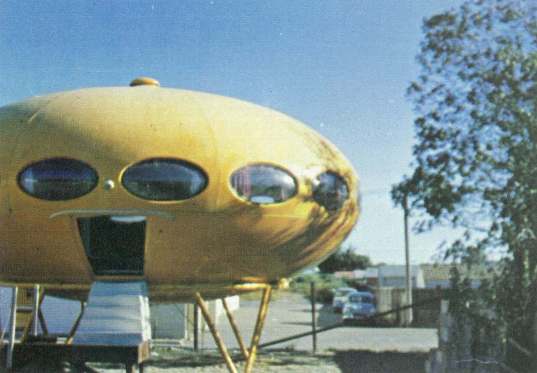
Original Information 060615
Though Futuro history is relatively recent the Futuros manufacturing period was prior to the "internet age" and so its history is often clouded with misconceptions, errors and contradictory facts. In some cases this is true when it comes to the companies that manufactured and distributed Futuros. The basic model saw Polykem license manufacturing and distribution in a given geographical region to a single company and those "first level" companies further license either manufacturing or distribution or both to other companies.
In the case of New Zealand there are references to several companies that were involved with Futuro. Most commonly the first level licensee is reported to be Futuro Homes (New Zealand) Ltd. (see the Thames Futuro and The Bank Of New Zealand Collection). Other documentation refers to the Futuro Corporation Pty. Ltd, Albury, NSW. (see The Colquhoun Archive), Orbital Homes Ltd., Peninsular Builders Ltd. and Thames Homes Limited (see the Thames Futuro).
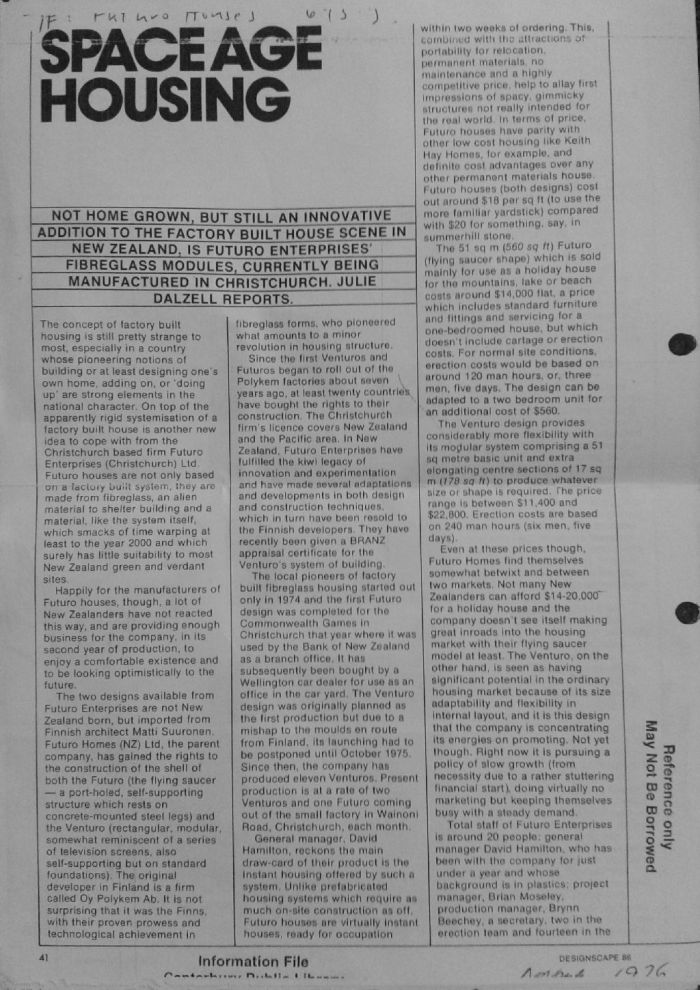 Issue #86 (1976) of the publication Designscape included a detailed article about a different company, Futuro Enterprises (Christchurch) Ltd., that suggests the company was licensed for New Zealand and the Pacific area. The company was incorporated 111174 while Futuro Homes (New Zealand) Ltd. was incorporated 090472. Information included in the article suggests the "Christchurch" company was licensed as a manufacturer by Futuro Homes (New Zealand) Ltd. (both were actually Christchurch based).
Issue #86 (1976) of the publication Designscape included a detailed article about a different company, Futuro Enterprises (Christchurch) Ltd., that suggests the company was licensed for New Zealand and the Pacific area. The company was incorporated 111174 while Futuro Homes (New Zealand) Ltd. was incorporated 090472. Information included in the article suggests the "Christchurch" company was licensed as a manufacturer by Futuro Homes (New Zealand) Ltd. (both were actually Christchurch based).
To date we have been unable to locate a copy of the magazine but recently Yves Buysse pointed us to a webpage where Spacebug had posted a copy of the article. The article is displayed above left and below - our thanks to Spacebug for preserving this fascinating piece of Futuro history.
The article was published in 1976 and indicates that, at the time of writing, Futuro Enterprises (Christchurch) Ltd. was in its second year of production of two of Matti Suuronen's creations, the Futuro and the CF-45 Venturo.
In 1974 the Bank Of New Zealand used one of the two Futuros seen at the 1974 British Commonwealth Games which ran from 012474 through 020274 as a branch office. The Futuros were located at the games main venue, Queen Elizabeth II Park in Christchurch, New Zealand. The Designscape article mentions the Bank Of New Zealand Futuros though they are more commonly associated with Futuro Homes (New Zealand) Ltd..
Interestingly we are told that the original intention had been to first produce the Venturo rather than the Futuro but that Venturo production was postponed until October 1975 due to the original molds being damaged during shipping from Finland. At the time the article was published the company had produced 11 Venturos and was producing two Venturos and one Futuro a month.
Futuros were priced at $14,600 which included "standard furniture and fittings and servicing for a one-bedroomed house" but did not include the cost of delivery or on site construction. A "shell" only could be purchased for $10,500. Venturos ranged from $11,400 to around $22,800.
General Manager David Hamilton led a team of around 20 employees at the manufacturing plant that included a production manager, a project manager, a secretary, an "erection team" of two and fourteen working on production in the factory. The company was following a policy of slow growth that was being pursued due to a "rather stuttering financial start".
The article also makes mentions one other individual on the development side, Des Walker, who was actually employed by "the development company" Futuro Homes (New Zealand) Ltd. Walker was noted as being responsible for new design and development and also for the start up of additional factories; a North Island factory was planned for 1977 in order to accelerate sales there (transport of a unit from South to North Island was in the order of $2,000).
The Wainoni Rd, Christchurch factory had both a Futuro and a Venturo demonstration unit on site. The Venturo unit was actually used as office space. The demonstration Futuro had, at the time of the article, been "revamped" internally to represent the company's current outlook and featured shag pile carpet and heavily patterned wallpaper on wooden internal panels. The $14,600 unit came with standard furniture, fittings and servicing with "standard" being described as:
"... entrance foyer with control for the automatic extension stairs to get down to ground level, bedroom with built in double bed, cupboard and wardrobe, kitchen which is not partitioned off from the main living area, bathroom with fiberglass shower floor, lavatory, wash basin, and living area with generous fiberglass shelving around the perimeter, except where standard upholstered seating is mounted."
The article ends with thoughts from David Hamilton on the longevity of fiberglass housing units. As far as Futuro was concerned he believed a Futuro would still be standing in almost mint condition after 30 years, would still be around after 100 years and might well last 150 years.
Futuro has now been around 50 years or so (at the time of writing) and a degree of longevity is already proven but, as several Futuros demonstrate (for example Royse City), they do deteriorate if not well maintained; whether any last 150 years other than "museum" restorations/exhibits remains to be seen and we will be long gone by then so others will have to make that historical judgement.
Among other images of Futuro and Venturo the article includes the following three photos showing the demonstration Futuro at the factory, a Futuro being delivered and a Futuro interior. It is unclear whether the interior shot is of the demonstration Futuro or a Futuro elsewhere. That said the photo is almost identical to this photo of the interior of the first of the two Huntsbury Futuros right down to the bird of prey sculpture so if it was the demonstration unit that unit was then delivered to the client almost completely unchanged internally.
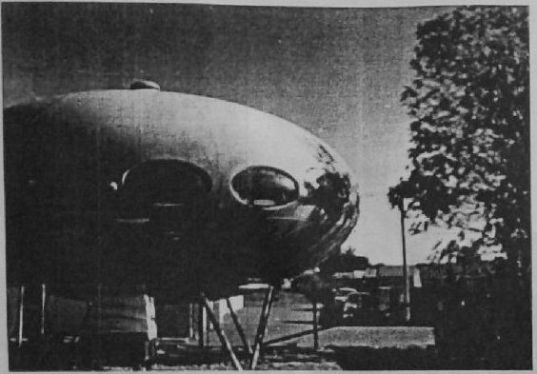
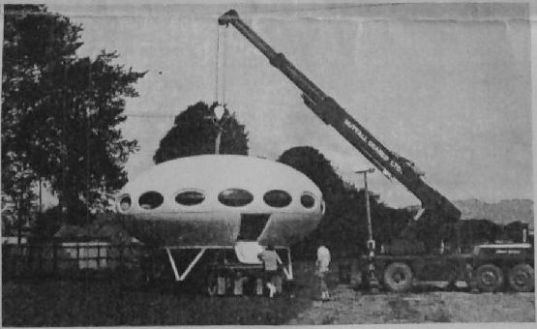
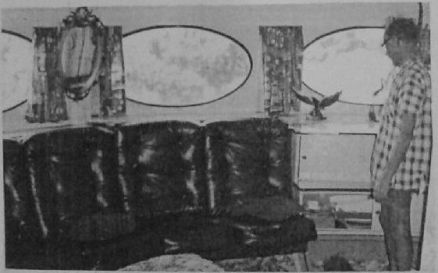
The Futuro Corporation Of Philadelphia was licensed by Oy Polykem Ab for the manufacture and distribution of Futuros in the US and other territories. Though the company retained sole US manufacturing rights and, with the possible exception of one or more units manufactured by the Futuro Corporation Of Colorado (see The Charles Cleworth Archive), manufactured all US Futuros in their Pleasantville, NJ plant many other companies negotiated agreements with the Philadelphia company for marketing and distribution of the Futuro in specific areas.
On 042972 the Detroit Free Press published an article about the Futuro under the headline:
"A Spaceship from Mars? No - It's a Vacation Home"
More specifically the article was about Futuro of Michigan, a company based in Chelsea, MI that owned the Michigan distribution rights for Futuro.
Prior to coming across this article we had not heard of this particular company, a business venture started by William C. Weber and George A. Staffan, which, according to the article, was marketing Futuros "for use as vacation homes, sales offices or whatever a fertile imagination might envision."
The article describes the Futuro as a flattened oblate spheroid manufactured in two halves with each hemisphere, upper and lower, being comprised of two sections which were then joined and mechanically sealed.
The interior is described as including a living room, kitchen, bedroom and bath all of which were furnished "down to a roll of tissue in the bathroom." The living room incorporated a 23-foot curved sofa, two cocktail tables that could be joined to the sofa to convert them to a double bed, a fireplace and a curved dining table with four chairs. Features of the kitchen included sink, waste disposal, electric range with oven and rotisserie, refrigerator/freezer, cabinets and a water heater. The bedroom included a built in double bed, vanity desk and closet and the bath had a fiberglass shower, water closet, vanity and basin, mirror with make-up lights and an exhaust fan. The Futuro included carpeting throughout and was highly secure with the ability to retract the entry stairs at the flip of a switch.
Weber was quoted as saying that the Futuro offered some extremely attractive advantages over traditional structures; among them the fact that it had an estimated minimum life of 30 years. All it would take to maintain it was to hose it down or, if an owner wanted to "baby it", the application of a coat of silicon wax. In addition the joint sealing system made it virtually impenetrable to air, dust or moisture making life easy as far as housekeeping was concerned.
The Futuro would cost $15,600 and Weber noted that financing could be an issue with buyers in the area likely needing to make a 50% down payment.
Weber and Staffan apparently first became interested in the Futuro after seeing the September 1969 issue of Playboy which featured an article on Futuro titled "Portable Playhouse" (the newspaper article incorrectly reports this as the March 1969 issue). Three years later at the time of publication of the article they were about to open their "model Futuro" to the public; that Futuro was located on North Conway Road off US 31 between Conway and Oden. The photo below accompanied the article and was captioned:
"Model of Futuro II vacation home erected northeast of Petosky has gleaming gold exterior. Color and shape have attracted curious passers-by from US 31. Photo shows fiberglass stairway in position but, once inside, residents can retract stairs by flipping a switch.
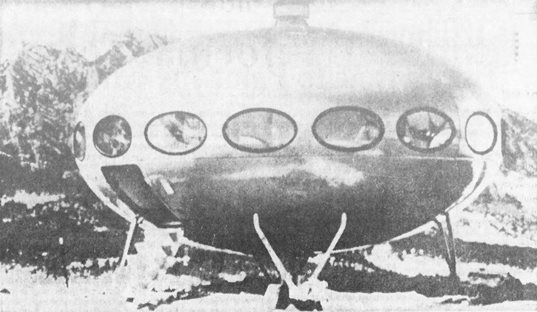
We are not sure that the photo actually shows the Futuro on North Conway Road; though the photo quality is poor it looks to us like there are mountains in the background and as far as we can tell based on a quick trip to Google Earth that would not be the case at the reported location. As for the gold color we do not recall ever seeing a Futuro finished in gold though of course there are many examples of Futuros being repainted in a different color. The nearest to gold we have seen is the Futuro once located in Virginia Beach, VA; though dilapidated and faded the color of that Futuro does at least remind us of gold.
Update 020322
This great photo, dated 071271, was sent to us by Jeff Graver who credits the photo to his father, Tom Graver; thanks so much for sending it to us Jeff! The Futuro was locate
We have no way of knowing where this particular Futuro ended up (though it looks mighty like the Danvers Futuro) but it is really cool to see this photo of what was, presumably, the Futuro used by New Dimensions as a "show home". The location was the southeast side of the intersection of routes 9 and 1 in Lewes.
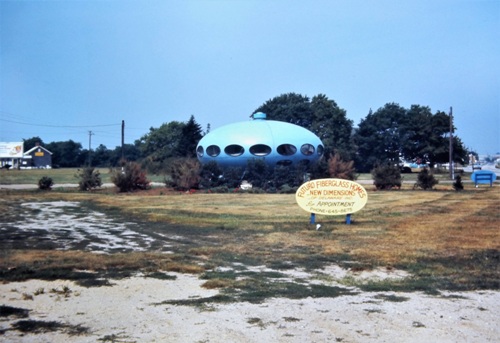
Update 030919
Barney Vincelette has lived in his Futuro in Houston, DE for over 40 years. Barney purchased his Futuro from Joe Hudson, owner of New Dimensions Of Delaware Inc., it was actually a rental property which was fully furnished. Barney recently sent us the two photos below which show ads that New Dimensions ran "back in the day" that Joe Hudson gave him at the time.
The second of the two ads is particularly interesting for a couple of reasons:
- Packages were being offered that included not only the Futuro but also the land upon which it was installed; $19800 fully furnished with land and installed utilities
- The ad indicated that "an elliptical 2 bedroom, 2 bath model" would be available soon
Update 100516
The Futuro House ran into several problems that ultimately led to its failure to generate widespread acceptance or large scale orders and manufacturing. The primary reason was the 1973 Oil Crisis which saw the cost of oil, and thus of the primary raw material used in the manufacture of Futuro's, triple almost overnight.
That said there were other factors one of which was a struggle to gain acceptance from administrative authorities, in particular planning authorities and building regulators. Often times the planners did not think Futuro matched their vision and the building regulators simply could not figure out Futuro and how to regulate it.
The newspaper articles below are an example of how this would go and relate particularly to Joe Hudson and his attempts to build his Futuro business New Dimensions Of Delaware Inc.
The first two articles, from Willmington, DE publications The Morning News and the Evening Journal (both now the News Journal), appeared 081071 and report on a decision by the Lewes City Council to classify the Futuro as a "mobile home". Though the articles are the same they were run under different headlines; "Lewes Acts To Bar Homes Of Fiberglass" and "Space Homes Mobile? Lewes Says They Are" respectively.
In the article the local mayor is reported as saying he:
"was dead set against placing the "spaceship-type homes" anywhere in the city and the planning commission is also 100% against it."
As a result he and his colleagues voted (3-1) to classify the Futuro as a "mobile home". This had the effect of denying a request for five building permits from Joe Hudson and thus barring a planned project to place Futuros on land near Roosevelt Inlet since existing regulations already banned the placement of mobile homes on the land in question.
A couple of later articles in The Evening Journal of 101571 and the 103171 issue of Salisbury, MD based The Sunday Times reported that despite the challenges Hudson was starting to make some progress.
In the 101571 Evening Journal a report titled "OK Near on Fiberglass Houses?" informs us that the Sussex County Planning & Zoning Commission, while not actually approving a development that included Futuros, instructed their attorney to draw up the approval of what, according to the paper, "may be the first Futuro development in the United States". This likely approval for a development along Rt. 88 east of Milton, DE came because the commission felt Hudson had "made an effort to comply with (the commission's) thinking on (Futuros)".
It was noted that the development would contain both Futuros and conventional housing and that most of the "flying saucer" houses would be hidden either by trees or other houses. Futuros that were visible would be sited almost 750 feet from the road. In addition Hudson would be required to get individual approval for the placement of each Futuro.
Hudson, who had distribution rights for Futuro throughout Delaware, Maryland and Virginia, was reported as saying that he had been trying for almost a year to get approval for siting Futuros in various parts of the region. He added that he already had one Futuro in Broadkill Beach and that "many of them are now in Florida"; not too sure about that last statement. Hudson expected that the first Futuro would be on site within a few months of final planning approval.
The 103171 Sunday Times article appeared under the headline "2 Sussex Zoning Bids Are Denied" and was mostly about developments other than Hudson's but the article did note that the Sussex County Planning & Zoning Commission had recommended the "Flying Saucer" housing development for approval by the County Council.
We have not yet come across anything that confirms whether or not the full council ever approved the project and to our knowledge even if they did it was never actually constructed.
Original Information 071115
Polykem's business plan for the Futuro House involved the company manufacturing units in Finland and distributing directly and also licensing manufacturing and distribution in other geographical regions to other companies. In the US manufacturing and distribution rights were licensed to The Futuro Corporation Of Philadelphia headed up by Leonard Fruchter. One of the companies to which Fruchter licensed distribution was Joe Hudson's New Dimensions Of Delaware Inc.
On 062315 CapeGazette.com published an article by Ron MacArthur titled 2015: It's Still A Space Oddity. The article was based on conversations with Joe Hudson who has several ties to the Futuro House and Richard Garrett who currently rents the Milton Futuro.
Joe Hudson's ties to Futuro include not only being the owner and operator of New Dimensions Of Delaware Inc., a Futuro distributor "back in the day" but also owning the Milton Futuro and selling the Houston Futuro to longtime owner and resident Barney Vincelette.
Joe Hudson, perhaps best known for The Villages of Five Points community set up shop as New Dimensions Of Delaware Inc., a five-state Futuro distributor, in the early 70's. MacArthur's article reports that after a while Hudson had three model homes displayed in the area one of which served as Hudson's first office.
Of the model homes the one that attracted the most attention was located at Five Points on the site now occupied by the Coastal Club Lighthouse. MacArthur quotes Hudson:
"We had long lines of people wanting to see inside, especially on weekends. Sometimes it was so crowded inside people couldn't move. We had a lot of orders, but we also had delivery-date issues."
Hudson had orders for at least 17 units but he was only able to get delivery on three or four Futuros. Hudson recalled that he had several Rehoboth Beach residents wanting to buy a Futuro as a guest house and adds that:
"I thought this could have been a great business."
Hudson was not alone in having issues with getting delivery of Futuros from Leonard Fruchter's Futuro Corporation Of Philadelphia. Charles Cleworth's Futuro Corporation Of Colorado had similar issues. Cleworth's company interested May-Daniels & Fisher, at the time Denver's largest department store in the Futuro House. The store wanted to display a Futuro in front of their main downtown store in late summer 1969. Though a Futuro House was expected to be delivered in time for this display to take place it never came (though a deposit on the unit had been paid).
Cleworth tried again when he was invited to display a Futuro at the Colorado Garden & Home Show in Denver in February 1970 (there is an original Press Photo relating to this event in our collection of "Things Futuro"). The Futuro Corporation of Philadelphia agreed to deliver a Futuro for the event but again they failed to deliver and a small model was displayed at the show instead (see the 020870 edition of the Denver Post).
Though the 70's oil crisis was likely a big part of the Futuro's eventual demise it is also clear that Fruchter's business practices did not help. Cleworth's Colorado company severed relations with the Philadelphia company (see this late 1970's Stock Prospectus for the Colorado company) and Hudson's relationship with Fruchter's company came to end when the Philadelphia company went bankrupt.
Hudson himself liked the Futuro so much that he had one constructed in Broadkill Beach and he and his wife live in it for a couple of years. As we know that Futuro was eventually torn down and scrapped; MacArthur tells us that was not before the house was used as a backdrop for a photographer who did a photo shoot with nude models.
A couple of Hudson's Futuros are still alive and kicking. One of New Dimension's earliest developments saw a model home displayed in Cave Colony, Delaware along Cave Neck Road and that Futuro, owned by Hudson to this day, is the one currently located in Milton, Delaware and rented by contract worked Richard Garrett. A second was purchased in 1977 by Barney Vincelette who, nearly 40 years later, still lives in his Futuro in Houston, Delaware.
MacArthur in his article tells us that:
"Another one of Hudson's models ended up near Washington, D.C., not far from the Watergate Complex. While there, it was used as the set for a national Cremora television ad campaign. Hudson said the flying saucer home was lifted up by a huge crane and placed down on the ground as if it had landed there."
Hudson adds:
"Then when the electric door opened, the camera peeked in and there were actors inside dressed in space suits putting Cremora in their coffee, ... There were thousands of people there watching this."
The whereabouts of this Futuro or whether it even still exists is not known and so far I have been unable to track down any other reference to this television commercial.
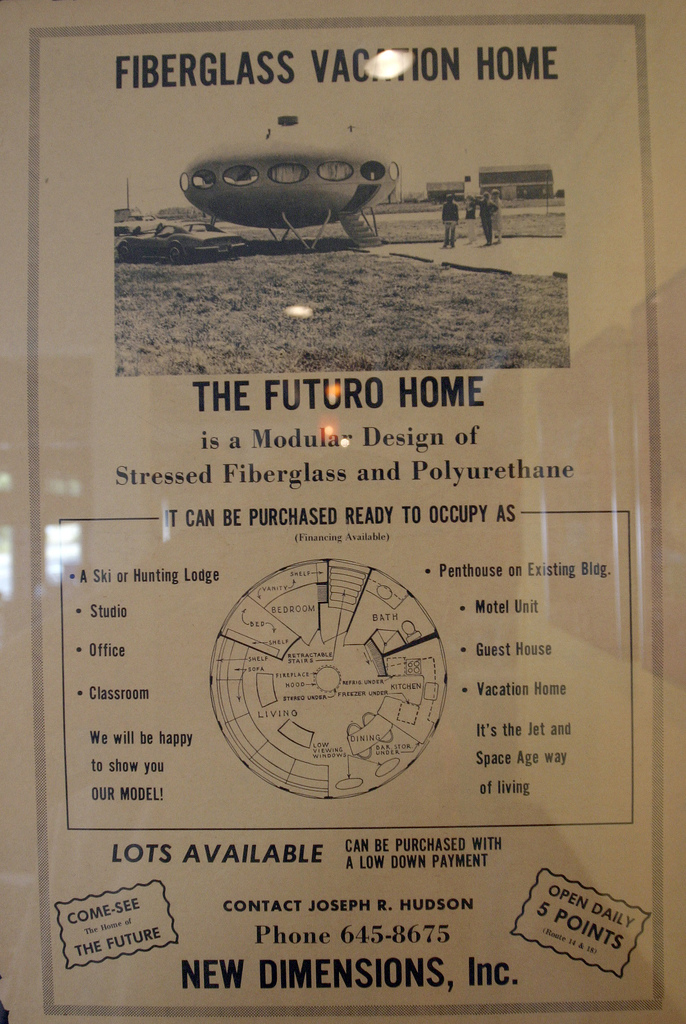 Several interesting examples of marketing materials hailing from New Dimensions Of Delaware Inc. can still be found. The photo at left is of a brochure found framed on the wall of the Blue Plate Diner in Lewes, DE just a short distance from the Milton Futuro. The photo is by kaszeta and is displayed here with permission.
Several interesting examples of marketing materials hailing from New Dimensions Of Delaware Inc. can still be found. The photo at left is of a brochure found framed on the wall of the Blue Plate Diner in Lewes, DE just a short distance from the Milton Futuro. The photo is by kaszeta and is displayed here with permission.
The photos below are of an original Futuro brochure from our collection of "Things Futuro". The brochure was originally from the Futuro Corporation Of Philadelphia (this is printed on the front) but it was actually distributed by New Dimensions (the brochure carries a "stamp" on the front, very faint and impossible to read in the photograph, that reads "New Dimensions Inc. Distributors For Futuro Fiberglass Homes, Route 1 Box 272, Milton, Delaware 19968").
![Futuro Brochure [DE] Inside](/images/gol/collection/brochurede_inside_small.jpg)
The most interesting of the New Dimensions materials we have come across was a package of marketing materials found in The Charles Cleworth Futuro House Archive, a collection of documents, photos, plans and press items donated to TheFuturoHouse.com for cataloguing and safekeeping by the family of the late Charles Cleworth back in 2014. Cleworth was president and founder of The Futuro Corporation Of Colorado but the archive contains all manner of Futuro related materials not specific to his company.
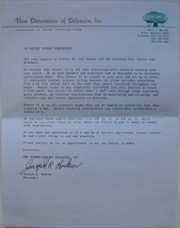 The marketing package included the letter shown left (pdf) that was addressed to "Future Futuro Homeowners" signed by Joe Hudson.
The marketing package included the letter shown left (pdf) that was addressed to "Future Futuro Homeowners" signed by Joe Hudson.
What is particularly interesting about this letter is a paragraph stating that Futuro II was available in three models with square footage ranging from 600 to 820. How this additional floor space could be achieved in a Futuro House is explained by the architectural plans for the Futuro II-X seen below.
The letter is undated but it likely dates from 1971 since the Futuro II-X plans included in the marketing package are dated April and May 1971.
The letter appears to have been the "cover sheet" to the marketing package which included several other documents and may have been something sent to individuals or groups that had expressed interest in Futuro or it may have been sent to a "mailing list". The package could also have included a customized set of documents depending on who it was being mailed to.
In this particular case the documents were in an envelope addressed to an individual located in Ohio that carries the following hand written note:
"Chuck - file for future reference"
In addition to this "cover letter" the marketing package also included the following documents.
A two page document (pdf) on New Dimensions letterhead titled "Estimate Of Income Potential Of Futuro Units" which details some scenarios for the use of Futuros as either Rental Units in a resort area setting or Motel Units. In the case of the Motel Unit scenario each unit is noted as having "2 rental units".
There is no indication of which size floor plan the estimates are based on though the listed unit price, $17,000 (including water and sewer), and the suggestion that Motel Units would actually contain two rental units might suggest the estimates were based on the Futuro II-X.
A four page "fact sheet" (pdf) titled "Facts On The Futuro II Fiber-Glass House" from the Futuro Corporation, PA. This is the same "fact sheet" as we saw when visiting the Austin Futuro on 091314 though in this case the document is "scaled down" to 7¼" by 9". The last page of the "fact sheet" carries a New Dimensions "stamp" which reads:
"New Dimensions Inc., Distributors For Futuro Fiberglass Homes, Route 1, Box 272, Milton, Delaware, 19968, Phone 302-645-8675"
A four page brochure (pdf) from the Futuro Corporation, PA which describes Futuro II as "An Advanced Living Concept Of Reinforced Fiberglass". The brochure features an exterior photo of a Futuro on the front, shots of a Futuro interior on pages two and three and an elevation and floor plan on the back. The back of the brochure carries the same New Dimensions stamp as the "fact sheet" described above.
And finally a set of two architectural plans (pdf) for the Futuro II-X which appears to be an "oversized" Futuro model that featured two bedrooms, two bathrooms and a centrally located island kitchen area.
The increase in size over a conventional Futuro involved the insertion of a ten foot straight sided section between the two halves of a round unit; the Futuro II-X measured 26' in one direction and 36' in the other.
At the time the Charles Cleworth Futuro House Archive was received there was no indication that the Futuro II-X had ever been manufactured but some time later photographs of one (fate unknown) surfaced; more information on this can be found here.
There do not appear to be any administrative records for New Dimensions Of Delaware Inc., at least not that we can find. There are records for a company by the name of New Dimensions Corporation Of Delaware but this company was registed with the NYS Department of State in 1961 and listed as a "Foreign Business Corporation". Furthermore a listing on the website ishcc.org for this company records contact information as being New Dimensions Corporation Of Delaware, 18 E. 41st St., New York, NY 10017. Finally these records from the 123rd Delaware General Assembly which ran 010565 through 010367 indicate that the charter for New Dimensions Corporation of Delaware had been repealed for non payment of taxes.
So, despite the similarity in names, we are of the opinion that this was a different company (though it is of course possible that it was a forerunner of the Futuro distibution company New Dimensions Of Delaware Inc.).
It is often difficult to determine exactly what companies were actually licensed to manufacture and/or distribute Futuros and it seems that often there were multiple levels of licensing in place. In researching the entry for the Thames Futuro on the "Lost Souls" page quite some time ago we came across two photos on Facebook that related to the distribution of Futuro in the Thames, NZ area.
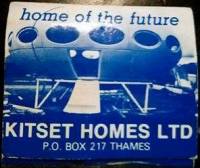 To the left is a photo that was posted to the Thames NZ: Genealogy & History Facebook Page (no longer accessible - pdf here) which shows a Futuro, referred to as the "Home Of The Future", that was presumably manufactured and/or for sale by Kitset Homes of Thames. Stewart Graham Harris was the primary shareholder of Kitset Homes (nzlbusiness.com).
To the left is a photo that was posted to the Thames NZ: Genealogy & History Facebook Page (no longer accessible - pdf here) which shows a Futuro, referred to as the "Home Of The Future", that was presumably manufactured and/or for sale by Kitset Homes of Thames. Stewart Graham Harris was the primary shareholder of Kitset Homes (nzlbusiness.com).
The photo below, dated 101475 and also posted to the Thames NZ: Genealogy & History Facebook Page, (no longer accessible - pdf here) shows a Futuro on display at a builder's property in Kopu (less than 10 kilometers from Thames). The Futuro is not actually referred to as such in the descriptive text accompanying the photo.
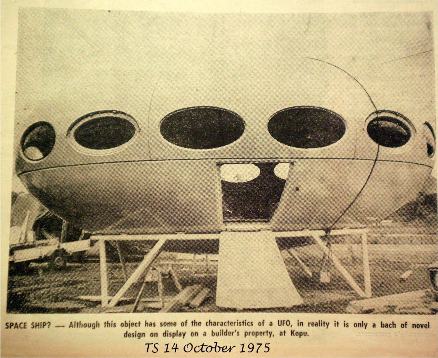
Various comments on these Facebook posts seem to tie the Kopu Futuro to Thames and also to Graham Harris. In particular in one comment Futuros are recalled as being "In the yard at Regent Homes by the Kopu Bridge" and in another we are told "Graham Harris was the owner of Regent Homes" which would make him a principal of both Kitset Homes and Regent Homes and an opencorporates.com entry for Regent Homes does indeed confirm Harris as a director.
The story stalled there and we were unable to find any additional information until this pair of photos popped up on Facebook posted to the group NZ car related street scenes 1950s-1980s by Bruce Harris; the original Facebook post can be found here.
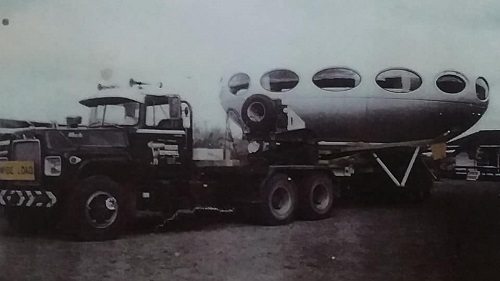
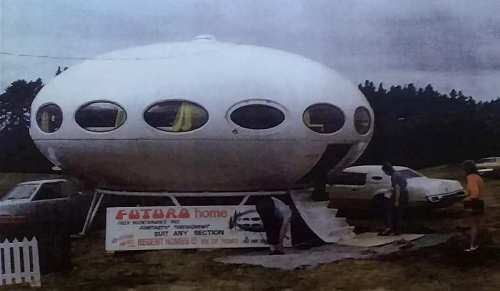
It turns out that Graham Harris was Bruce's father. In comments on the Facebook post Bruce confirmed that his father did own both Kitset and Regent Homes and that he also sold Futuro Houses.
The photos date from 1996/97 and show a Futuro House located at (and on the way to) Fieldays which is self described as "the largest agribusiness event in the Southern Hemisphere".
 To the left is a photo that was posted to the Thames NZ: Genealogy & History Facebook Page (no longer accessible - pdf here) which shows a Futuro, referred to as the "Home Of The Future", that was presumably manufactured and/or for sale by Kitset Homes of Thames. Stewart Graham Harris was the primary shareholder of Kitset Homes (nzlbusiness.com).
To the left is a photo that was posted to the Thames NZ: Genealogy & History Facebook Page (no longer accessible - pdf here) which shows a Futuro, referred to as the "Home Of The Future", that was presumably manufactured and/or for sale by Kitset Homes of Thames. Stewart Graham Harris was the primary shareholder of Kitset Homes (nzlbusiness.com).
The photo below, dated 101475 and also posted to the Thames NZ: Genealogy & History Facebook Page, (no longer accessible - pdf here) shows a Futuro on display at a builder's property in Kopu (less than 10 kilometers from Thames). The Futuro is not actually referred to as such in the descriptive text accompanying the photo.

Various comments on these Facebook posts seem to tie the Kopu Futuro to Thames and also to Graham Harris. In particular in one comment Futuros are recalled as being "In the yard at Regent Homes by the Kopu Bridge" and in another we are told "Graham Harris was the owner of Regent Homes" which would make him a principal of both Kitset Homes and Regent Homes and an opencorporates.com entry for Regent Homes does indeed confirm Harris as a director.
The story stalled there and we were unable to find any additional information until this pair of photos popped up on Facebook posted to the group NZ car related street scenes 1950s-1980s by Bruce Harris; the original Facebook post can be found here.


It turns out that Graham Harris was Bruce's father. In comments on the Facebook post Bruce confirmed that his father did own both Kitset and Regent Homes and that he also sold Futuro Houses.
The photos date from 1996/97 and show a Futuro House located at (and on the way to) Fieldays which is self described as "the largest agribusiness event in the Southern Hemisphere".
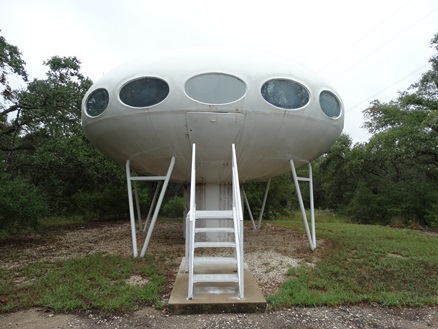
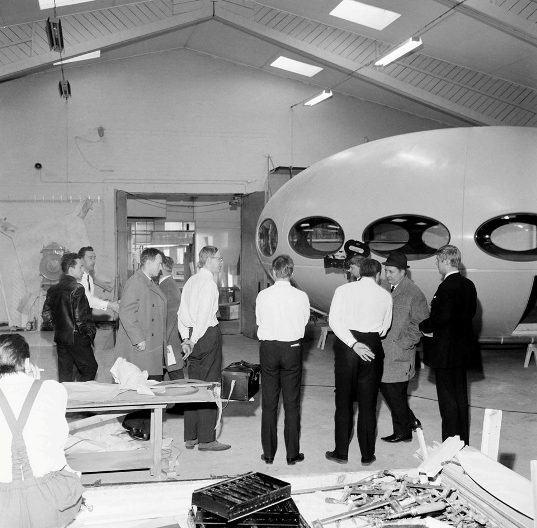
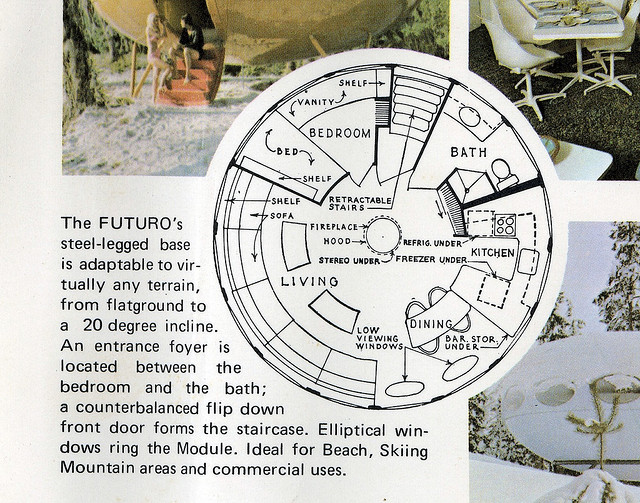
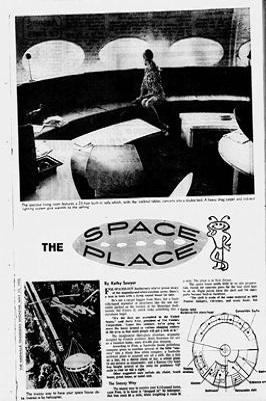
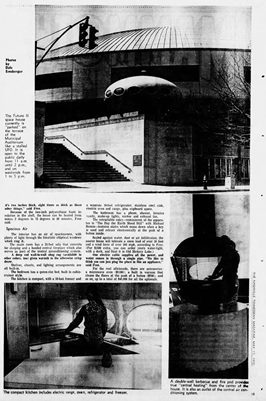
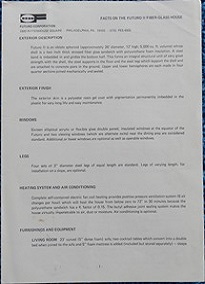
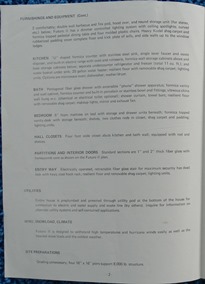
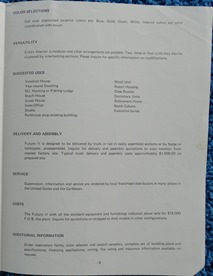
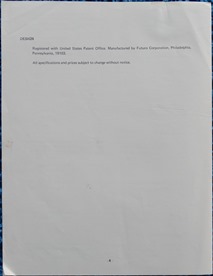
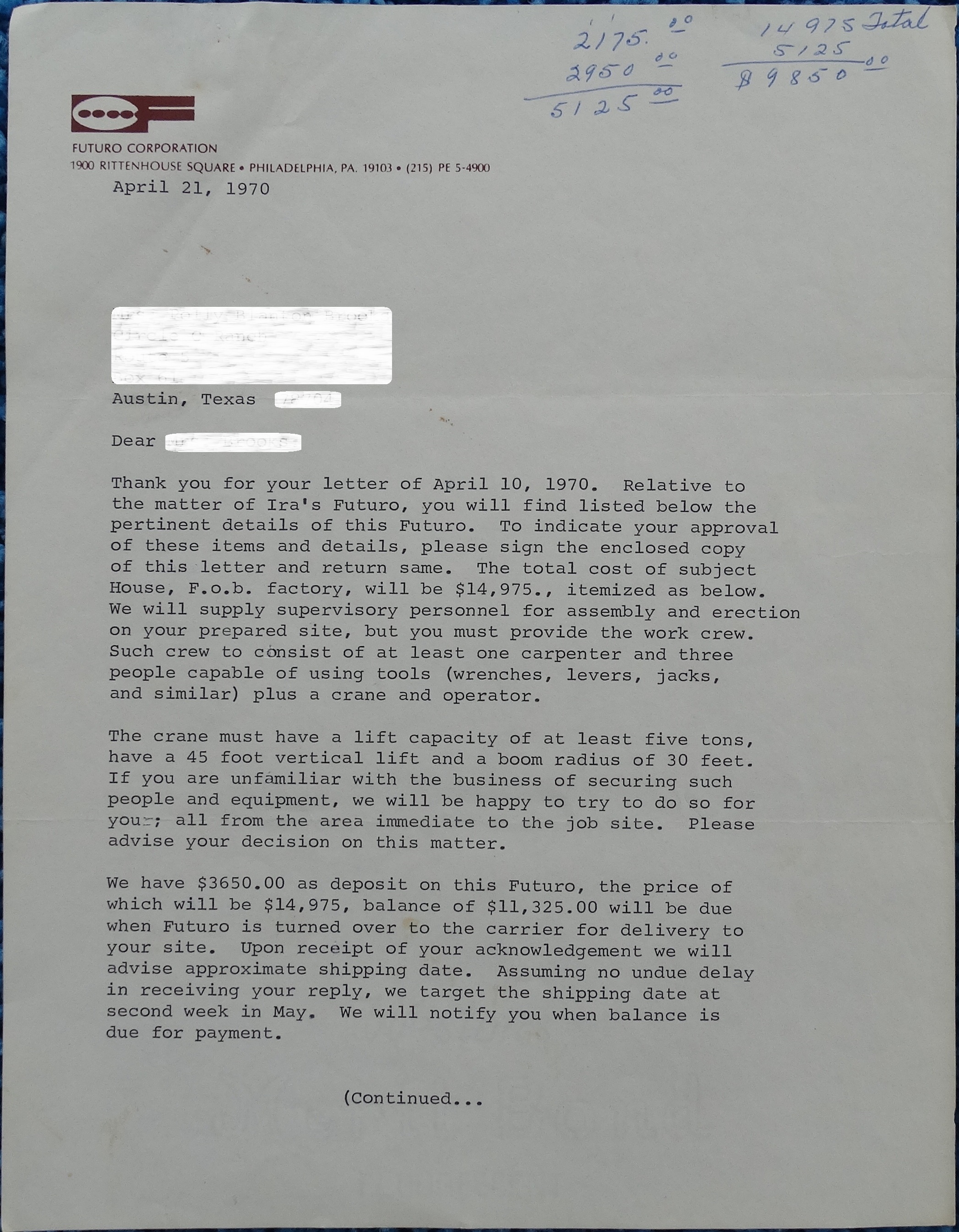
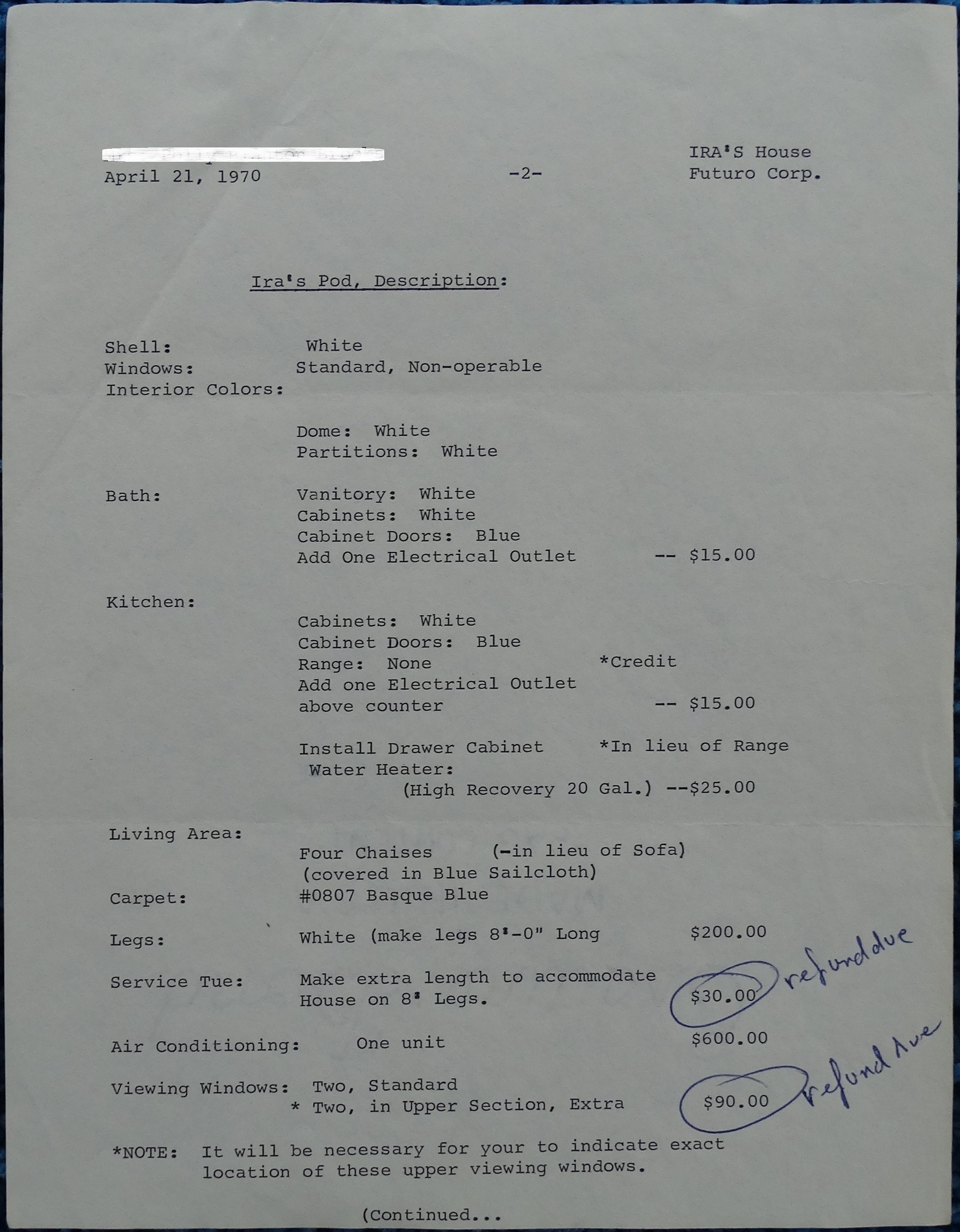
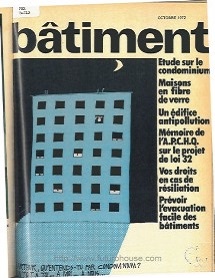
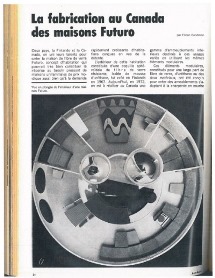
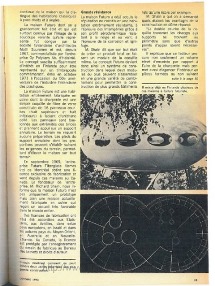
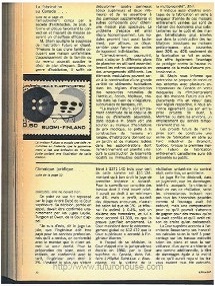
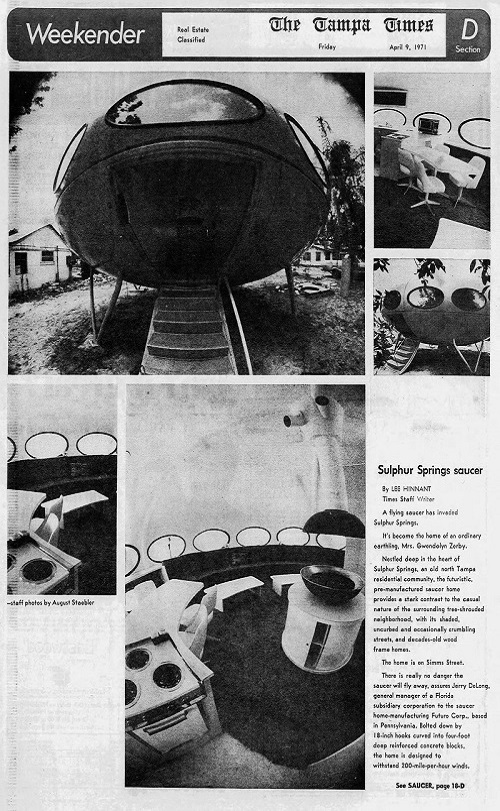
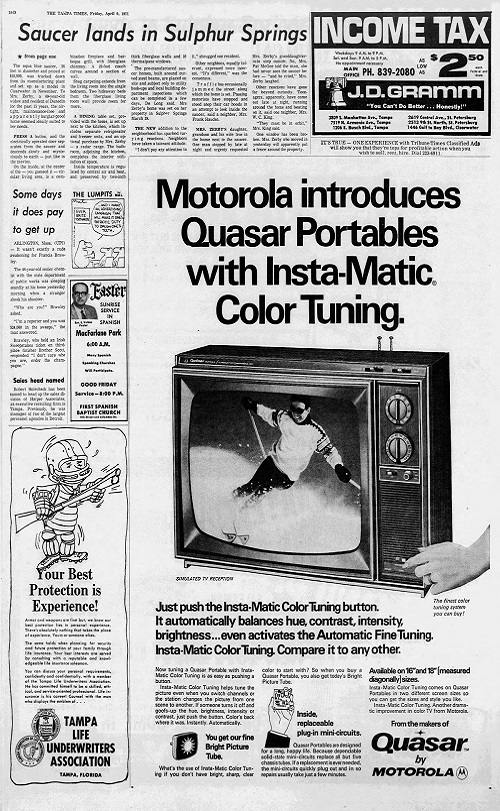
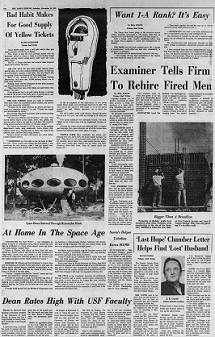
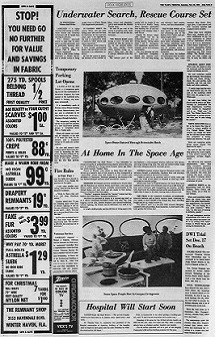
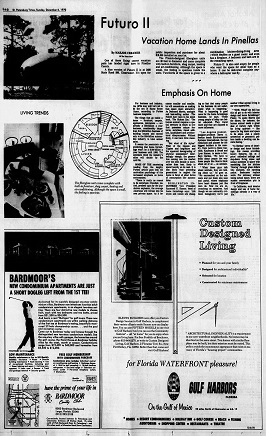
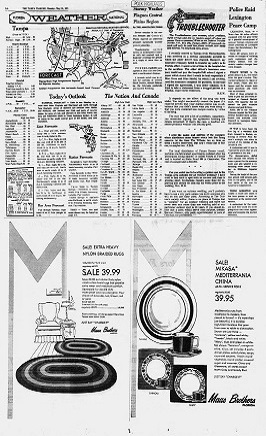
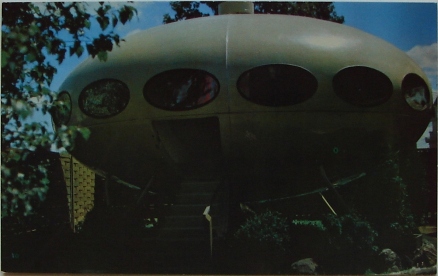
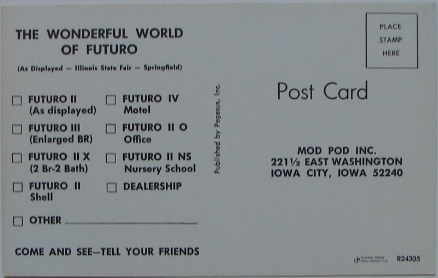
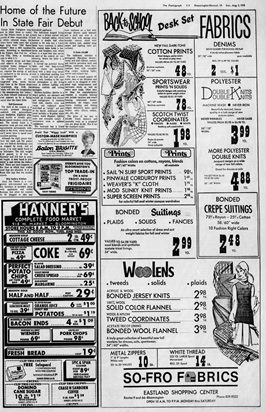
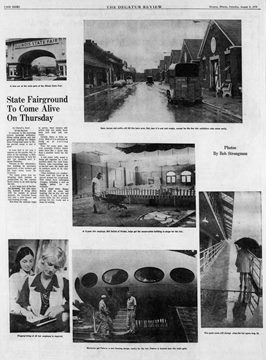
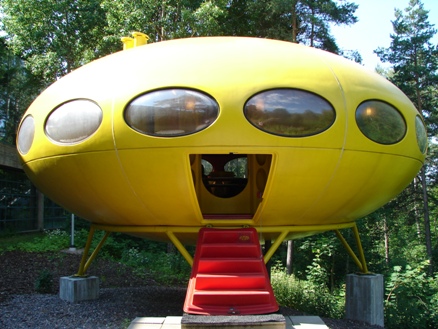
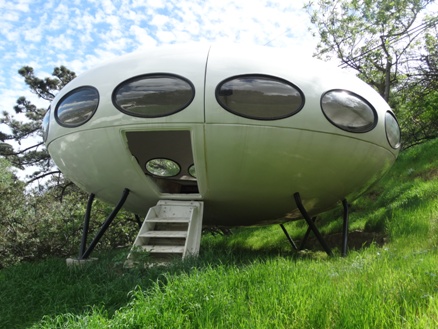
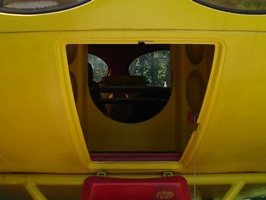
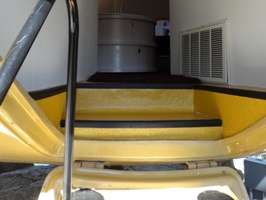
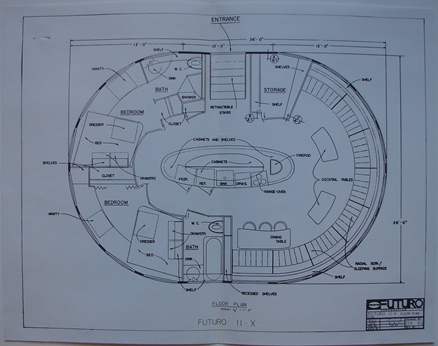
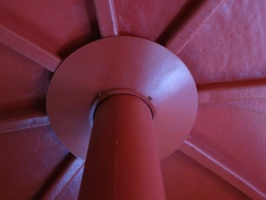
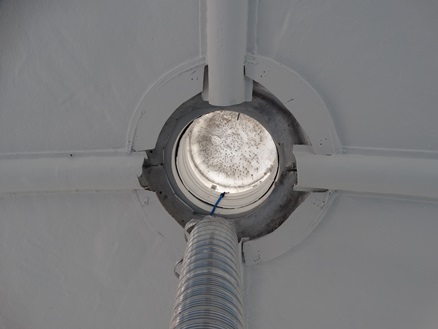
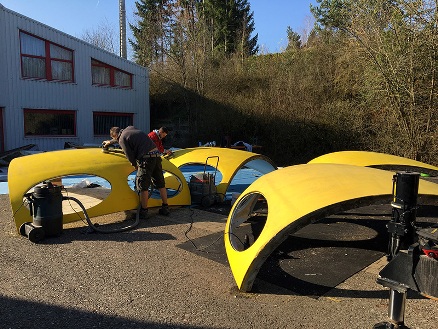
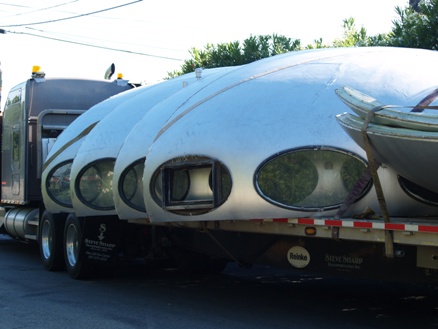
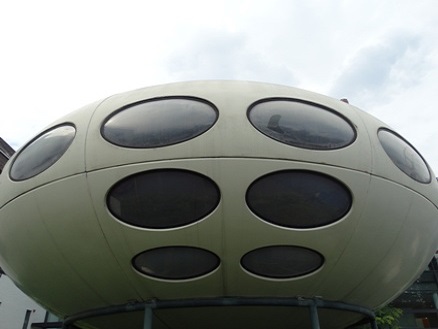
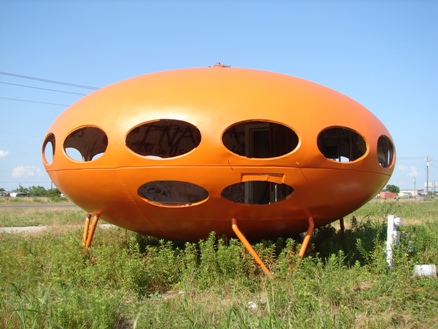
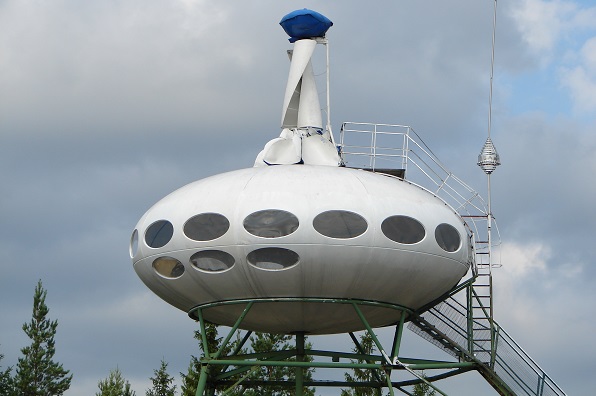
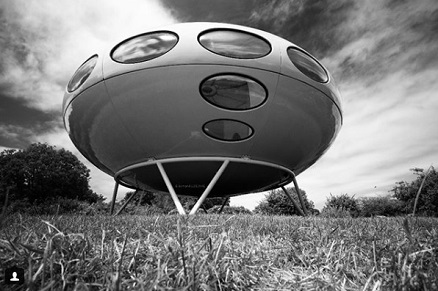
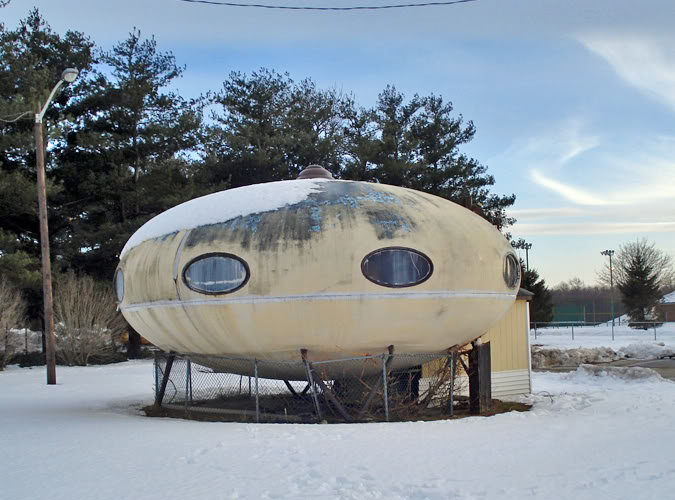
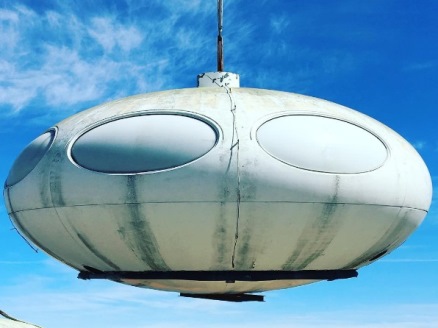
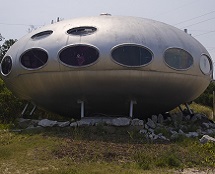
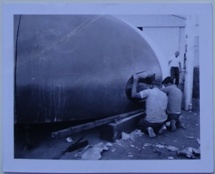
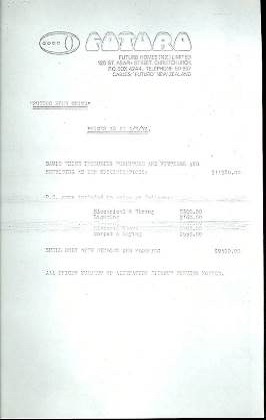
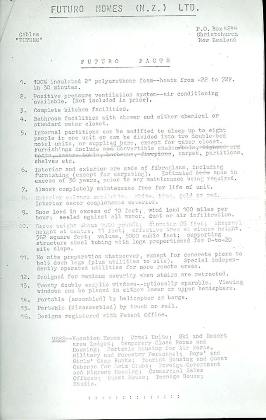
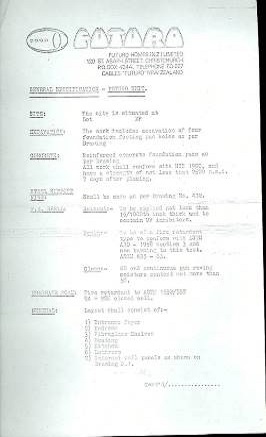
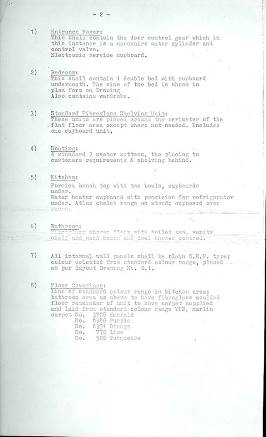
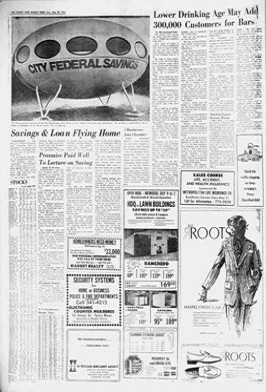
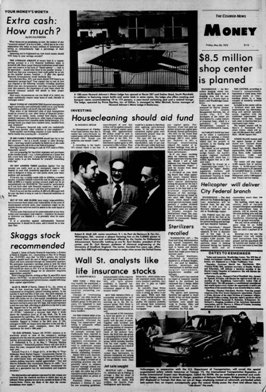
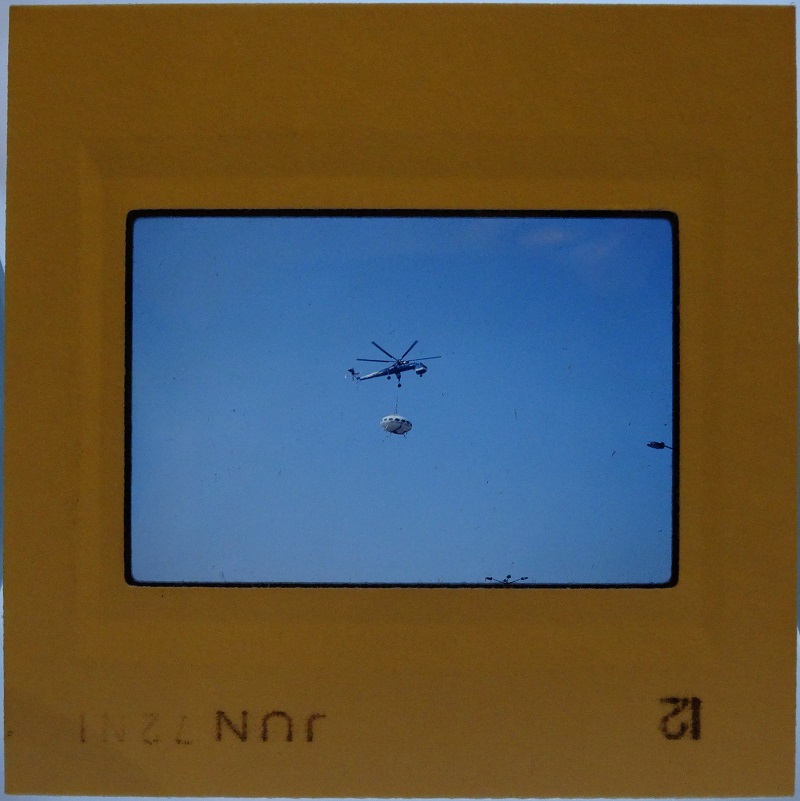
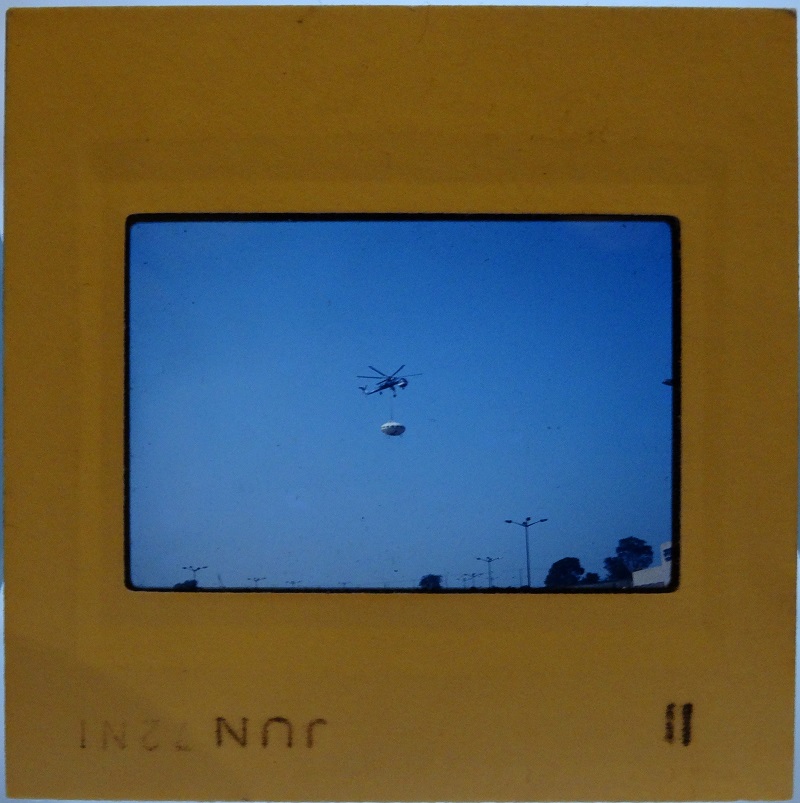
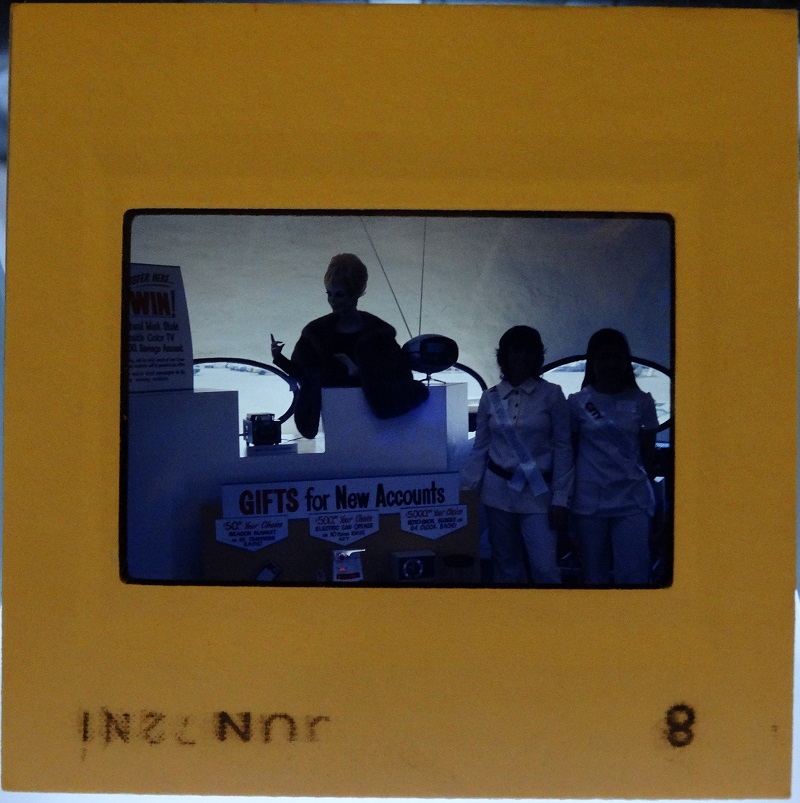
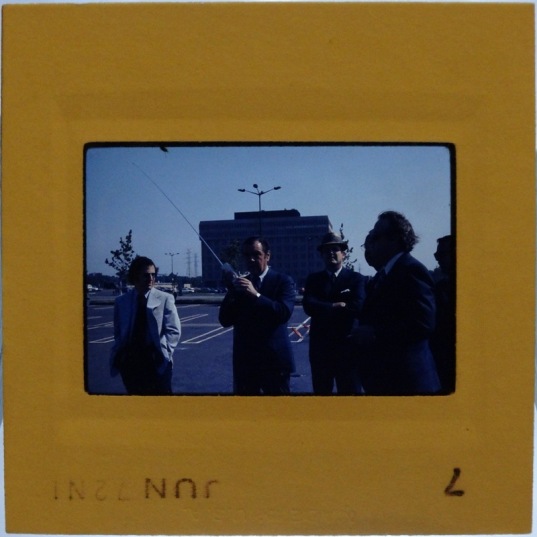
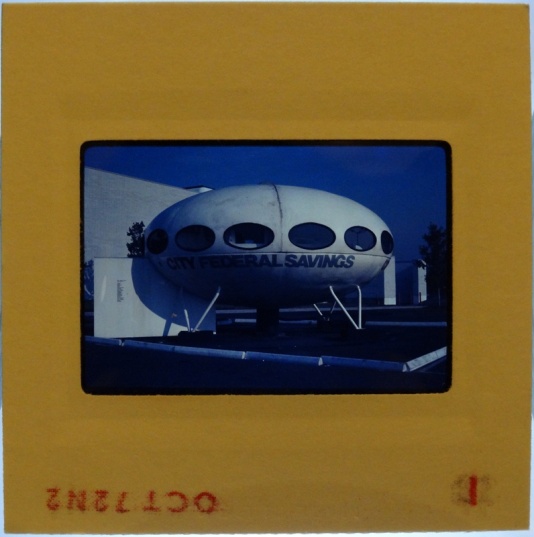
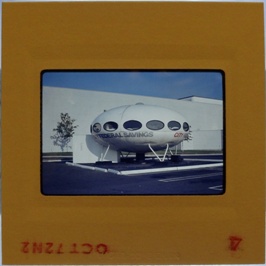
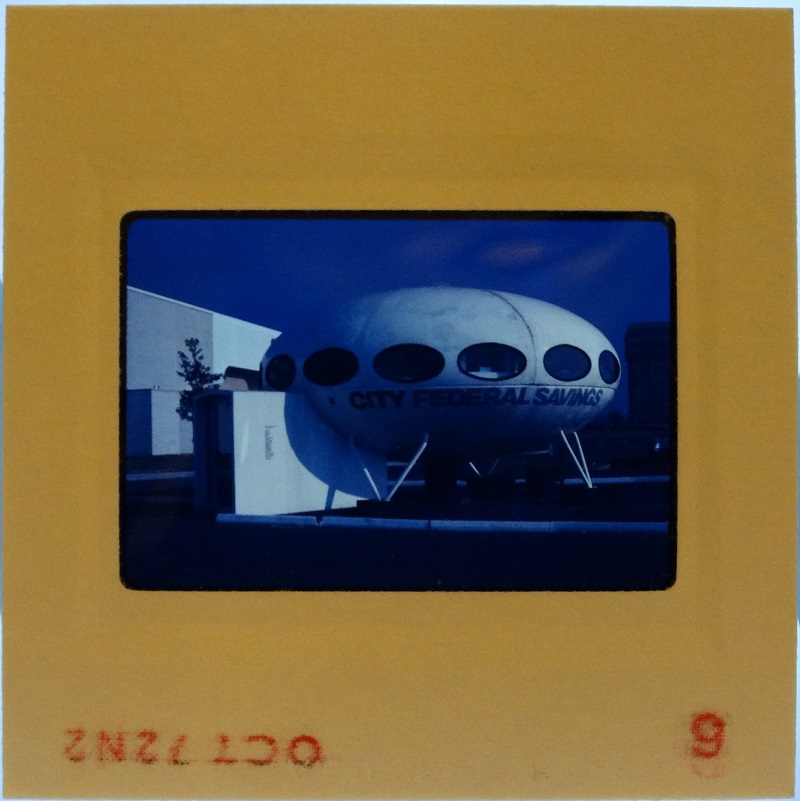
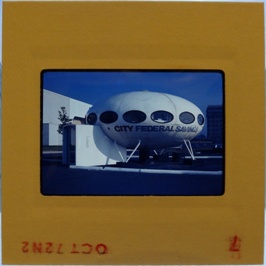
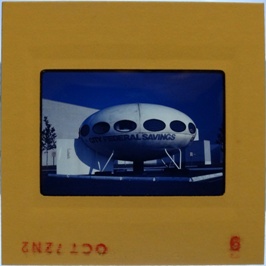
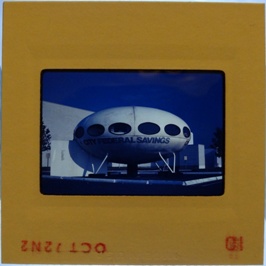
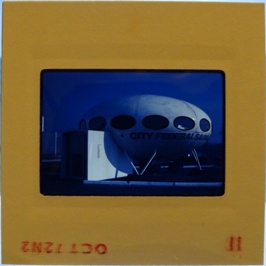
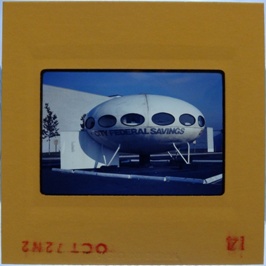
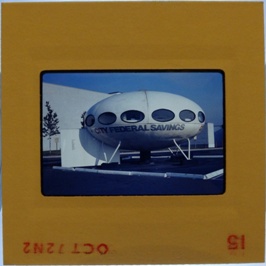
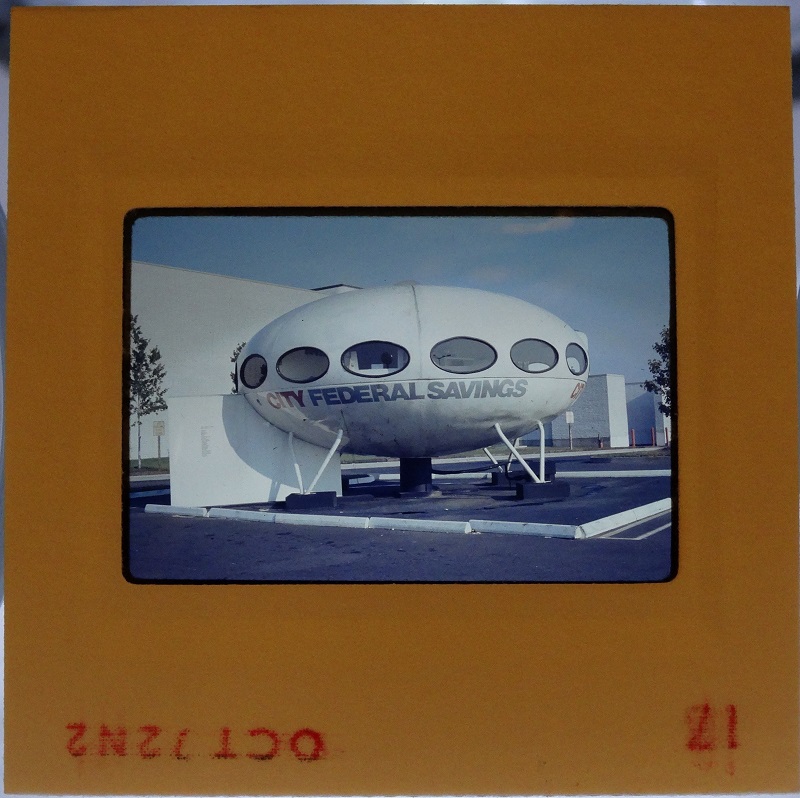
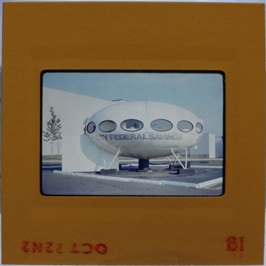
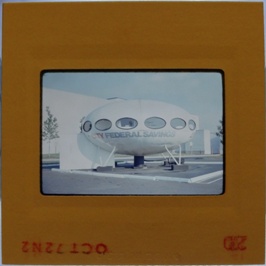
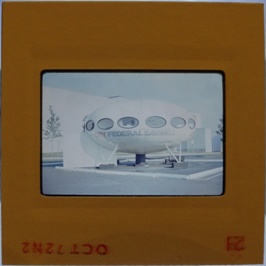
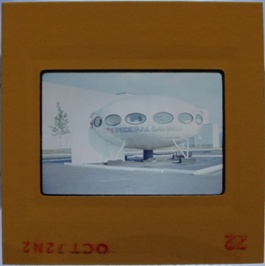
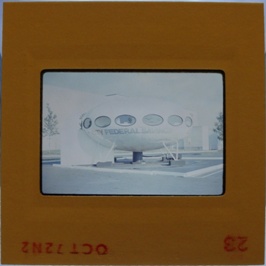
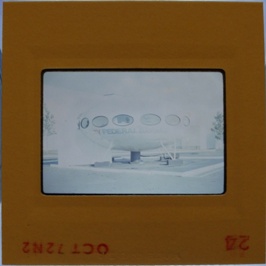
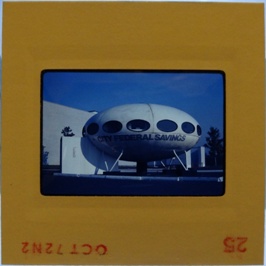
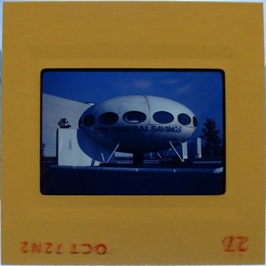
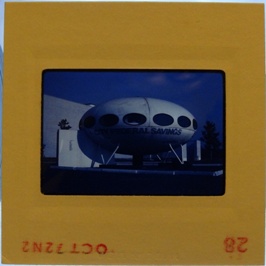
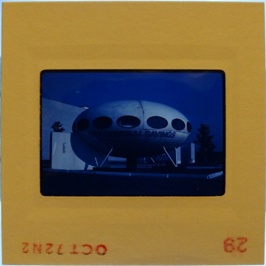
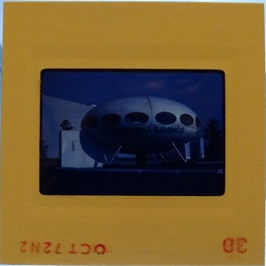
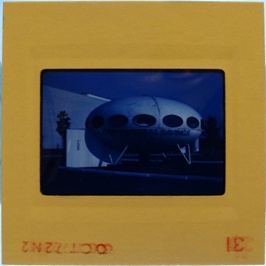
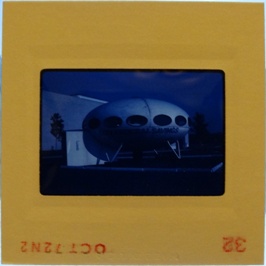
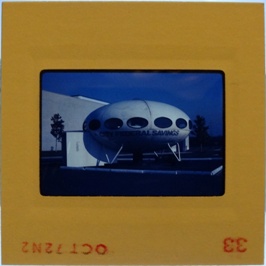
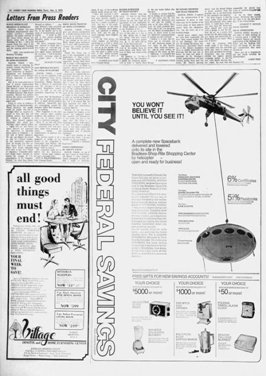
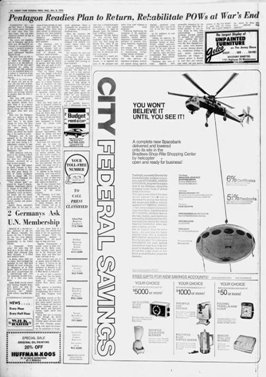
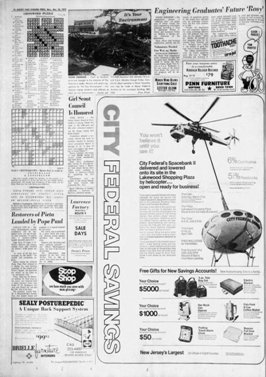
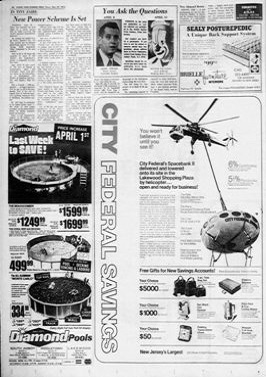
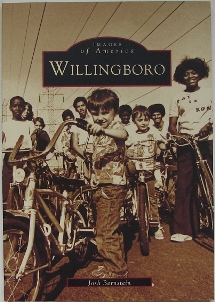
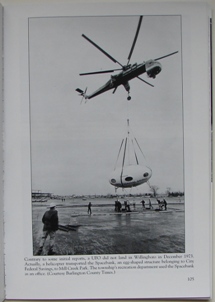
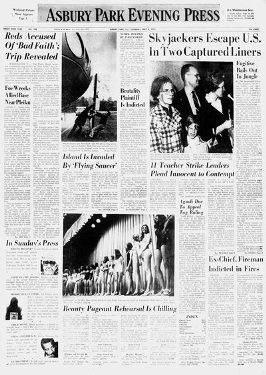
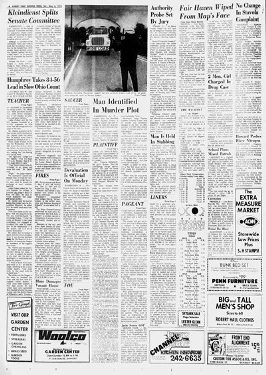
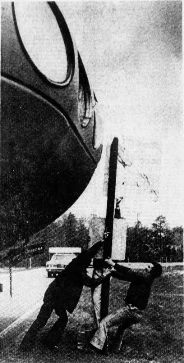
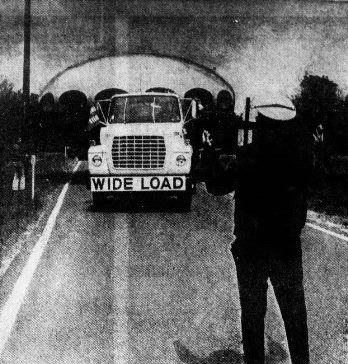
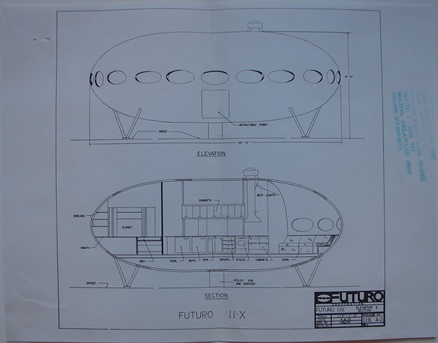
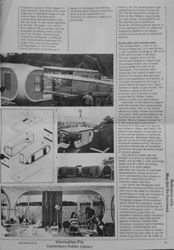
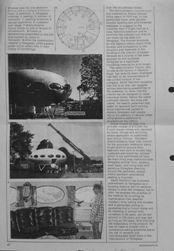
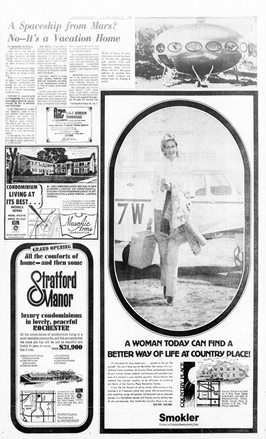
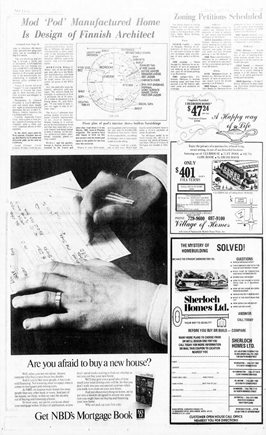
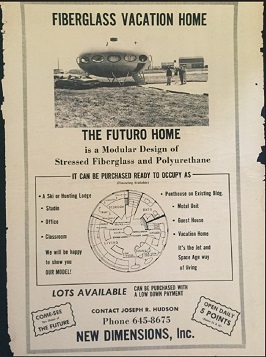
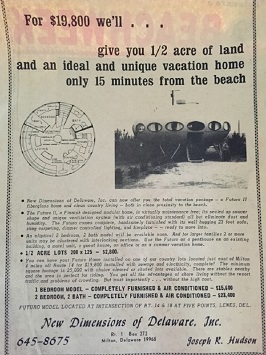
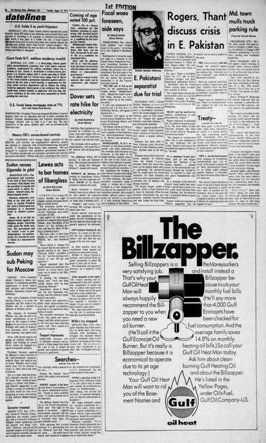
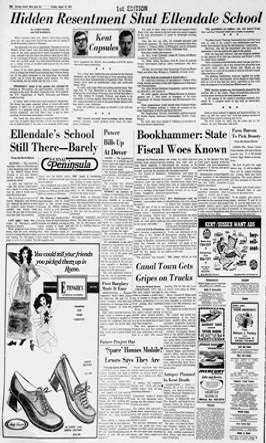
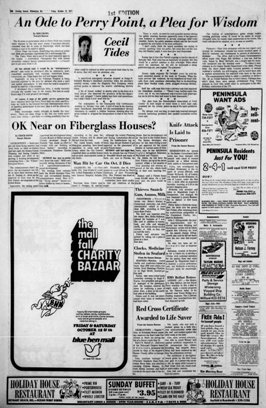
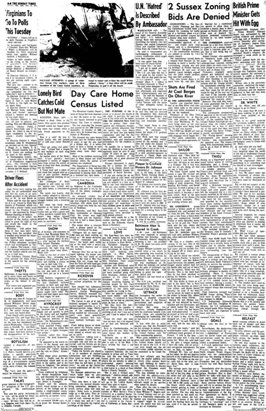
![Futuro Brochure [DE] Front](/images/gol/collection/brochurede_front_small.jpg)
![Futuro Brochure [DE] Back](/images/gol/collection/brochurede_back_small.jpg)
